◊♦◊♦◊♦◊♦◊♦◊♦◊♦◊♦
Looking for that plant you got from Hill Farm in the past?
Click here:
THE PLANT ARCHIVES ~ 1991-2022
◊♦◊♦◊♦◊♦◊♦◊♦◊♦◊♦◊
February 12, 2024
Our first event of 2024 is booked!
Looking forward to attending the Quesnel Seedy Saturday. It’s happening on Saturday, April 6th, 2024, 9 AM till 3 PM, Quesnel Seniors Centre, 461 Carson Avenue.
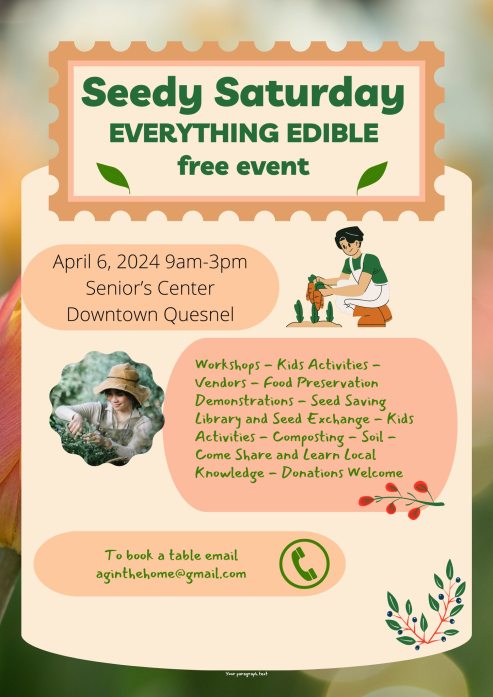
◊♦◊♦◊♦◊♦◊♦◊♦◊♦◊♦◊
February 7, 2024
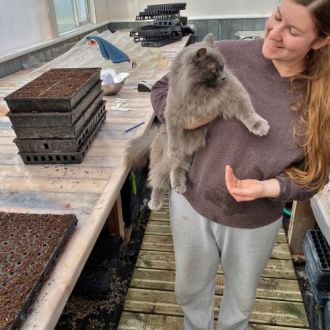
 The 2024 growing season has started!
The 2024 growing season has started!
The first seeds hit the soil on February 4th – a bit later than some years but still with lots of time to grow way too many plants. Funny how one never really quite believes all those seeds will sprout and grow and grow and GROW! It’s rather magical, isn’t it?
First things in are bulbing and bunching onions for the market garden, and a nice selection of perennials, with many more to come.
We’ve also started some “micro tomatoes”, compact little guys who will bloom and produce tasty cherry tomoatoes in windowsill-size pots. A lot of you will already be familiar with these, as we’ve been growing some of our trusted and trues each year, but some new ones have suddenly crossed our radar, like ‘Fat Frog’ and ‘Lil’ Peeps’ and ‘Orange Dream’ and ‘Gold Pearl’, among quite a few others.
We’re hoping to pull off a proper tomato trial, with record keeping and photos and those ever-important tasting sessions. We’ll keep you posted!
◊♦◊♦◊♦◊♦◊♦◊♦◊♦◊♦◊
October 28, 2023
Well, we’re not quite ready for the snowy times, but we’re getting there, and sometimes that has to be enough.
If the weather allows, we’ll be rebuilding our three 100-foot-long grow tunnels this fall, so we’ll be ready for action in April with some early vegetable crops for the first Williams Lake Farmers’ Markets, along with a selection of annual, biennial and perennial starts.
And also tomatoes.
Yes, there should be tomato plants this coming season, and currently we’re looking through the tomato seed boxes, checking previous years’ notes, and mulling over the coming year’s seed orders.
We’re thinking 2024 will be a year for some of the tried and true old favourites, but there will doubtless be some new and exciting things on the list as well. The genetic diversity of the tomato world is endlessly exciting to explore, and we are already looking forward to next year’s trial plantings and taste testing.

‘Flaming Burst’ cherry tomatoes stood out in the tomato trials of 2022. Watch for them again in 2024.
◊♦◊♦◊♦◊♦◊♦◊♦◊♦◊♦◊
June 10, 2023
Time for an update! Apologies for this long silence, but we’re having ourselves a bit of a year.
As many of you will already know, we are taking a hiatus year in 2023 due to some family medical issues. To give more detail (hopefully not “too much information”), Barb was hit partway through 2022 with a double whammy diagnosis of malignant melanoma (all those outside in the sun hours!) plus the unexpected discovery of a brain tumour. She’s now well acquainted with many doctors, several operating rooms, and the caring team up at the B.C. Cancer Centre for the North in Prince George, and as of this past week she’s back home and on the mend.
We can’t know what the future will bring, but we’d like to share that “next year” plans are already being discussed, and we hope to be “back to the plants” in some way in 2024 and beyond.
We’d like to collectively send out our thanks for the support and love shown to our family throughout these past very difficult months. It’s times like these which show us the power of community and friendship. Words cannot adequately express our appreciation for all of the many kindnesses we’ve received, but we must say again: Thank you.
May your gardens flourish this year and beyond, and may all good things come your way.
From the Hill Farmers,
Barb, Edwin & Jane
◊♦◊♦◊♦◊♦◊♦◊♦◊♦◊♦◊
April 27, 2022
Spring has been dragging its heels a bit this year, but it’s truly here at last, along with its fair share of challenging weather. We are still dropping below freezing many nights, so though we are keen to get some of the more tender things out into the open garden, we’re going to have to wait a few more weeks.
Victoria Day, May 24th, celebrated here in Canada as the third Monday in May, is traditionally held to be the “safe” time to get the garden planted, and as a rough guideline this works well, though it is just that – a guideline. Cold hardy vegetable crops can be seeded any time now – radishes, spinach, carrots, beets, peas – while waiting for the soil to warm and night frosts to desist before planting the heat lovers such as beans and corn.
Cold hardy annual flowers can be direct seeded now – cornflowers, poppies, bells of ireland all spring to mind – while indoor starting of more frost-sensitive annuals should be well underway. This is prime perennial dividing time, as things are up enough to identify what they are and how crowded the crowns are, and still early enough that top growth is not too lush. Perennials are primed to grow at this point in their season, and divisions establish fast.
Hardened-off perennial seedlings can be planted soon – though you’ll want to keep an eye on the weather forecasts – best results are when a few overcast days and non-freezing nights are happening. Young plants and fresh divisions are sensitive to sunburn and windburn as much as freezing – baby them along for a bit by protecting them from sun, wind and frost with floating row cover or the like.
And speaking of hardening off, we’ve been moving tomato plants a lot this week – Seedy Saturday is happening this weekend (April 30th!) in Williams Lake, and a lot of people are keen to get a jump on the season and get their tomato plants going in their heated greenhouses. We’ve been toting the Seedy Saturday tomatoes outside to a sheltered spot under a shade canopy by mid-morning, and back inside as the afternoon wanes, to allow them to toughen up a bit in the cooler temperatures and frequent breezes. There’s always a bit of foliar damage from this routine, but nothing too serious, and we’re pretty thrilled to see all the flower buds forming, with the promise of delicious fruit to come!
We’ve lost count of how many tomato varieties we’re growing this year – well over fifty heirloom and heritage cultivars (and a few trusty hybrids as well) are elbowing each other for their turn at the transplant table. As usual, we have succumbed to the desire for diversity versus lots of just a few kinds, so quanties of each will be limited – if you see something intriguing on the market table, grab it! It might not show up again this season.
This weekend’s Seedy Saturday tomatoes will include the following, all well-started in 6-inch pots, ready to be planted in your HEATED greenhouses or potted up into larger containers to wait it out till outside conditions warm up more:
- Czech’s Bush – compact plants, dark red, mid-size tomatoes
- Supernova Cherry – tall plants, red & yellow striped, grape-shaped cherries
- Coldset – compact plants, dark red, mid-size fruit
- Goose Creek – tall plants, pinky-red, saladette-size fruit
- Rosabec – compact plants, mid-sized pink-red fruit
- Reinhard’s Purple Sugar Cherry – tall plants, super sweet, purple-red cherries
- New Girl Hybrid – mid-size plants, delicious big red fruit
- Purple Fairy – compact plants, pointed, plum-shaped, very sweet, purple-red, saladette-sized fruit with greeny-gold striping
- Dwarf Saucy Mary – compact plants, very sweet, golden-green striped dark green, plum-shaped, saladette-sized fruit
As always, we choose our varieties for good taste above all, with an eye to early production and good yields. Tomatoes are a lot of fun to grow in all their glorious variety!

◊♦◊♦◊♦◊♦◊♦◊♦◊♦◊♦◊
March 26, 2022

March 24, 2022. Out our back door – the Fraser River rolls by, nibbling away at a winter’s worth of ice. Spring is happening!
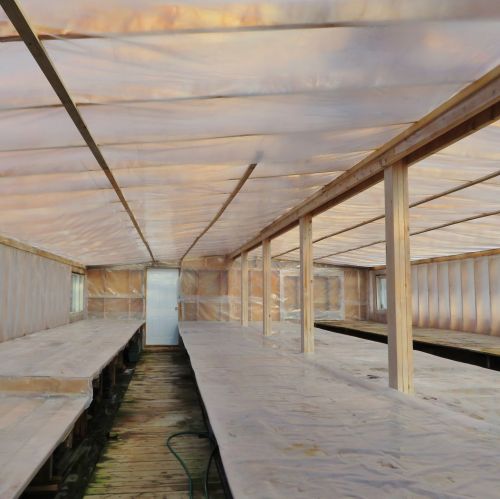
March 17, 2022. Greenhouse #2 – all scrubbed up and ready for the green invasion.
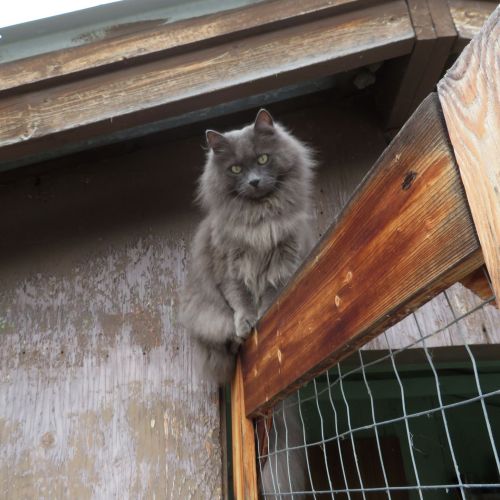
March 17, 2022. One of the greenhouse guardians, keeping an eye on things. The feline team is in charge of providing fuzz therapy to the humans, and keeping the munching mice at bay.

March 8, 2022. Early March in greenhouse #1 – there be some seedlings…
◊♦◊♦◊♦◊♦◊♦◊♦◊♦◊♦◊
March 6, 2022
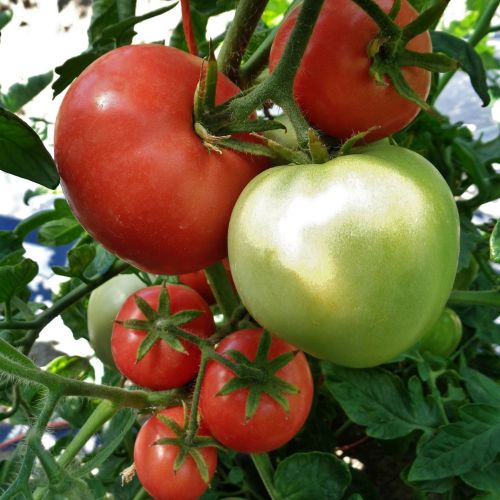
Tomato seeding time! We’re digging through the seed boxes, compiling notes on which ones stood out in previous years, and happily considering this coming season’s new-to-us cultivars. Over the next few weeks the 2022 tomato selections will be seeded and, if all goes well, early April will see the full list published for your browsing enjoyment.
As always, we are going to be going for modest quantities of a wide variety of cultivars versus concentrating on large quantities of just a few standard ones, so our selection will change throughout the season as certain ones sell out and others appear on the sales table.

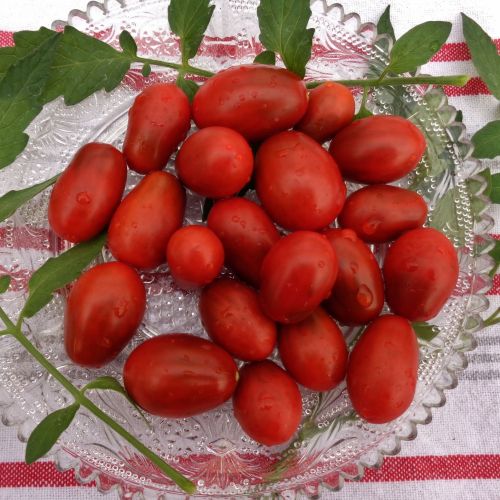
◊♦◊♦◊♦◊♦◊♦◊♦◊♦◊♦◊
January 3, 2022
It has come to our attention that there has been no posting here since – can it be?! – April of 2021. Sincere apologies for the silence. Our only excuse is that we’ve been extremely occupied with a variety of projects, including some serious gardening.
Well, we’re in over our heads with garden and greenhouse projects for the coming season, and we promise we’ll update this space a bit more often.
In the meantime, our very best wishes to all for a happy 2022. Take care of yourselves and each other, and we hope to see you in the spring.
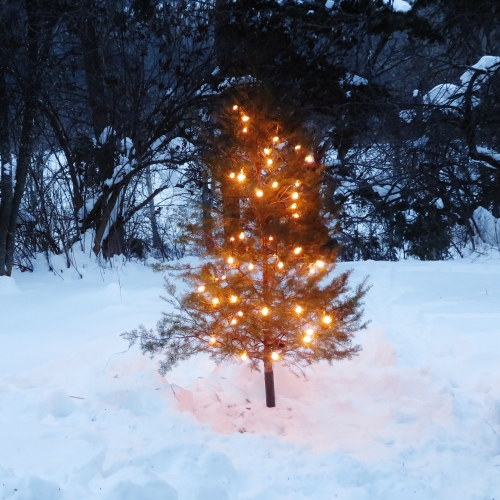
◊♦◊♦◊♦◊♦◊♦◊♦◊♦◊♦◊
April 5, 2021
Spring’s here!

Rumex sanguineus – Red-veined Dock
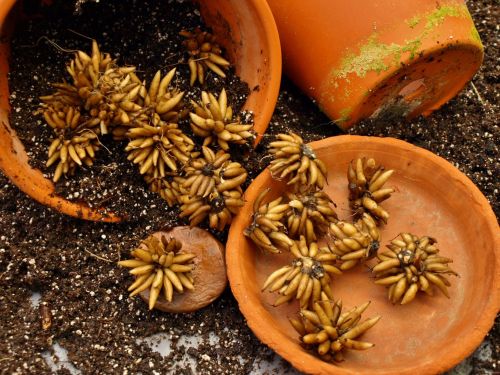
Ranunculus asiaticus corms all plumped up and ready for planting.

Sneak peek at just a few of the funky (and delicious!) tomato cultivars we’re growing for you this year.
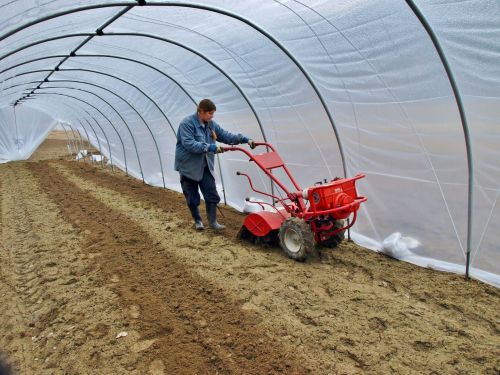
This year we’re breaking new ground – turning a piece of old hay field into garden. Grass will be our biggest challenge – the tiller our strongest ally. First of many passes this season in the first high tunnel – “Caterpillar One”.
◊♦◊♦◊♦◊♦◊♦◊♦◊♦◊♦◊
March 12, 2021
Biodiversity in full display – seedling time in the propagation greenhouse, early March.
◊♦◊♦◊♦◊♦◊♦◊♦◊♦◊♦◊
February 16, 2021
The calls and messages are rolling in to inquire as to what we’re doing this season, and the short answer is: ‘We’re on!” The propagation greenhouse is all fired up and toasty warm, perennial seedlings are unfolding their cotyledons, the last seed orders are expected “any day now” – which leads to this side note – if you haven’t ordered your garden seeds you should really get on that – the mail order wait times are crazy and the trendier choices are getting rather picked over, though no one anticipates an actual seed shortage. But the seed houses are BUSY.
And we are thinking TOMATOES. It’s not quite time to get the tommies started – we generally aim for mid to late March for that – but we’re digging through the seed boxes this week, shaking the packets and holding them up to the light to see what’s in there, looking over notes from previous years and debating this year’s “newbie” choices.
We do love our tomatoes.
Now is the time for special requests, people. We already have the 2021 tomato customer wish list started, and if you are looking for something in particular which we’ve grown in the past, we’ll be happy to take a look at our seed inventory and see if we can grow your favourites for you, ready for delivery in May. Shoot us an email, preferably to our new connection: arcadiaborealis@gmail.com. Messages through the Facebook page seem to sometimes get lost in transit; if you don’t hear back from us either by email or Messenger, please do try again.
Happy garden planning! We’ve (hopefully) made it through the worst of the cold time – there’s warmth in the sun, and spring is peeking around the corner.
◊♦◊♦◊♦◊♦◊♦◊♦◊♦◊♦◊
December 16, 2020
If you’ve ever driven east of Quesnel, B.C. on Highway 26 to the restored 1860s Gold Rush-era heritage site at Barkerville, you will have noticed the unique ecosystem you enter as the elevation climbs and fir and aspen forest turns to spruce and low shrub. If you’re travelling there in the spring, you will find that as you journey eastward, the season rolls back, from full spring bloom in Quesnel to progressively less advanced the closer to Barkerville you get.
There in mid-May there are still pussywillows and the surprising blooms of Coltsfoot exploding out of the straw-hued winter grasses, and, popping up here and there around the foundations of the old structures in the Barkerville townsite and in great profusion in the heritage graveyard, a flourishing population of classic English Primroses.
One can only speculate that these plants travelled to the area with Gold Rush era settlers, and were planted on the graves of loved ones by friends and family members. (Old graveyards in general are rewarding places ro visit for the heritage plant aficionado, for this very reason.) These primroses flourish in the cool, damp climate of the Wells-Barkerville area, no doubt reminiscent of their ancestral origins in rural Great Britain.
Primula vulgaris is native to the English and Irish regions of the British Isles, as well as some localised areas in Europe, North Africa and West Asia. They are one of the earliest spring flowers to bloom in their native home as well as in their colonial homelands.
Kneel down in the moss to examine these lovely blooms more closely. You will notice a pronounced golden eye zone, and a delicate sweet fragrance. Look even closer, and you will note that there is a minute difference in the central arrangement of their reproductive parts. Some flowers show a pronounced stigma in the center – the “pin”, while others show a a cluster of pronounded anthers – the “thrum”. This ensures successful cross pollination as insects carrying pollen on their bodies from thrum blooms transfer it to the pin blooms as they seek the nectar produced at the base of the flower tubes.
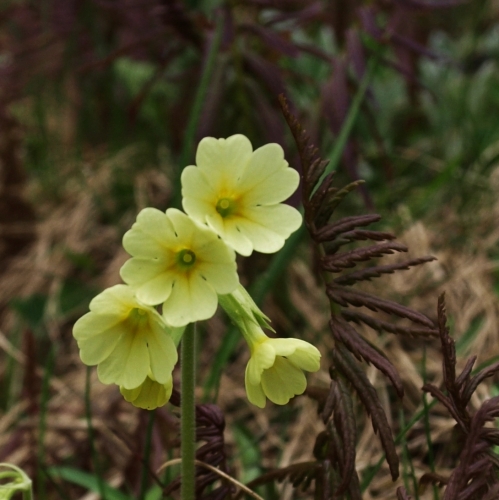
Primula vulgaris, “pin” version. Note the dark foliage of native Pedicularis groenlandica, Elephant Head Lousewort, which also flourishes on this particular hillside and starts to bloom as the primroses go to seed. Image: HFN
◊♦◊♦◊♦◊♦◊♦◊♦◊♦◊♦◊
December 15, 2020
Quite some time since the last update! Like the rest of you, we’ve had a challenging yet interesting year, staying very close to home and keeping ourselves busy with construction projects of various sorts. The gardens have been rather neglected as other things took precedence, but there were flowers.
Like these lovely things.
‘Rainbow Loveliness’ dianthus is a wonderful strain of cut-petalled, divinely scented pinks, and we’ve been growing them and tucking them in to garden corners here and there for years. Though they are techinically perennial, they are not solidly hardy for us, though they generally overwinter for a season or two, and they do self sow mildly on occasion. They bloom profusely their first season and may be treated as annuals.
These delights were bred by crossing pale mauve Dianthus superbus with colourful D. plumarius by notable British nurseryman Montague Allwood in the 1920s. Clumps of lush green foliage send up many stems to 18 inches tall, topped by large, single, deeply cut and fringed and extremely fragrant flowers in shades of white, mauve, pink and deep rose – often with a contrasting eye zone and green eye. Far-reaching scent is very lovely, sweet rather than the usual Dianthus clove-spice. It reminds us of the fragrance of our native Calypso orchids, Calypso bulbosa, sweetly aromatic and quite unforgettable. This one will be of interest if you are at all intrigued by fragrant flowers.
◊♦◊♦◊♦◊♦◊♦◊♦◊♦◊♦◊

Pink lily-of-the-valley – one of the beauties we are hoping to have enough of to add to the sales list in 2021. Even more fragrant than the white ones, if that is possible! A high point of the May garden.
May 27, 2020
I guess it’s past time for an update! Whatever has happened to May?! Whoosh, just like that, almost gone…
Well, most of you will already have figured this out, but it’s official. Spring nursery season 2020 was essentially a bust for us. Due to the COVID-19 restrictions on items allowed for sale at B.C. Farmers’ Markets, we were not permitted to bring plants in, and though we did have the option to list our items online, we decided, after a brief investigation of the process, that we would instead use this enforced change of direction to concentrate on some on-the-ground projects on the farm.
It’s all okay. All the better for next year! That is our mantra at present. We’ll see where we’re at in spring of 2021. One thing about this year, it’s sure given us a blanket toss, hasn’t it? Can’t tell which way is up some days.
Thank you all for the inquiries, and all of the very kind words. The last tomato orders are heading out to their homes this weekend – we did end up filling many requests for edibles from our vegetable gardener friends and neighbours – and then it will be full speed ahead with digging, weeding, watering, building.
Hope you are all well and happy, and enjoying your spring gardens. We’ll hopefully be seeing you all next year. Barring other unforeseen world events, of course!
◊♦◊♦◊♦◊♦◊♦◊♦◊♦◊♦◊
April 21, 2020
What a late spring this is turning out to be. Our perennial plant overwintering plunge beds are still mostly frozen, despite it hitting +24 Celsius yesterday afternoon. That sawdust really insulates!
We are getting our flower beds tidied up, and sadly are finding quite a few winter losses. Disappointing, but not unexpected, with the crazy temperature fluctuations in January combined with very little snow cover down here at Macalister.
Things in the greenhouses are doing well, though we must admit that we are not working as hard in there as we usually are at this point in the season. Due to the “food plants only” stipulation at B.C. Farmers’ Markets this season-of-COVID-19, our main sales venue for our ornamentals is closed to us. So it goes. We’re rolling with it, because what else can one do? Better to stick close to home, in order for things to be better for the future. Maintaining the “long view”. Because that’s what gardeners are good at, right?
We are instead pouring our energy into some long-overdue nursery infrastructure. If all goes well, this is the year we’ll be building a long planned for shade house, as well as preparing a new garden area and generally tidying up neglected things. We are also helping out with the management of the Williams Lake Farmers’ Market, which is quite complex and time consuming this very challenging year.
Watch this space for news of our online sales venue, scheduled to go live on May 1st. We will have some nice things available for your gardening pleasure, though not nearly as many perennial varieties as usual. You will be able to pre-order and reserve plants, and we will make drop-off and delivery arrangements in the communities we usually attend Markets at: Williams Lake, McLeese Lake, Quesnel, and points in between.
To close on a seasonally cheerful note, here is a little glimpse of the spring bloom happening in the garden, delighting foraging pollinators. Thank goodness for hardy bulbs!
◊♦◊♦◊♦◊♦◊♦◊♦◊♦◊♦◊
April 12, 2020
Happy Easter, everyone! We hope you are spending it peacefully and joyfully, and are able to spend some time in some way with people you love, even if it perhaps can’t be in person at this time.
The weather continues a bit cooler than we’d like; the gardens for the most part are still too icy for much digging. Initial explorations indicate that there have been some winter losses, with the dreaded “mooshy crowns” making our hearts drop into our boots, but it’s still too early to assess everything. And of course there is some green life showing here and there. A handful of snowdrops are blooming, as well as a little drift of Scilla sibirica, a clump of Chionodoxa in the lawn, and half a dozen big white crocuses. Looks like the buds on the sawdust-covered Helleborus orientalis are okay, but our treasured Hepatica clumps are looking iffy. We shall see…
On our dry hillsides, Sagebrush Buttercups are in glorious bloom, reminding us that Nature goes about her business as usual, no matter what trials and tribulations some of her species are dealing with. (Never forget that people are part of Nature, too!)
One greenhouse is full, mostly of leggy tomato plants and oodles of rather small perennial seedlings. Transplanting has slowed to a crawl, as we find ourselves rather more distracted than usual, wondering what these next few months – years?! – will bring.
The radio and internet bring us news from all over, much of it terribly sad. Glimmers of hope do shine through, and of course life will go on. We humans are adaptable creatures, and the vast majority of us are darned good at keeping on keeping on, despite the unfathomable challenges we collectively face. Pandemics and climate change and all the rest.
My goodness, this little update has covered a lot of ground. So much existential angst!
I will finish up with what I had intended to say when I started: I hope you find joy in your gardens, especially in uncertain times such as these. A warm spell is forecast for the week following this Easter, and that means green things will be popping up all over. Get out there, spend some time poking around in the dirt, and grow on!
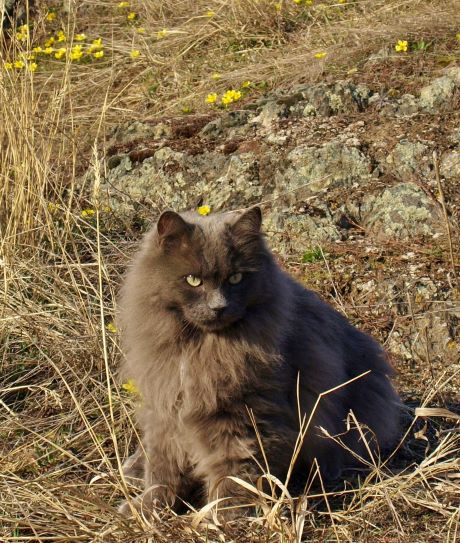
No Easter bunny to be found, but we do have a fluffy creature on site – Bill-the-Cat, supervisor extraordinaire of all things Hill Farm!
◊♦◊♦◊♦◊♦◊♦◊♦◊♦◊♦◊
April 5, 2020
An update, of sorts. The situation regarding our Farmers’ Market season is still very unsettled, but we are at this point expecting that we will not be selling plants in person at our markets in May. What we are hearing from the BC Farmers’ Market Association and the BC Centre for Disease Control is that farmers’ markets will be for food items only. Some markets are interpreting this to mean food-producing plants as well, but this is still a grey area, and until we have a clear and very specific go-ahead, we are going to assume it’s a “no”.
Nurseries and garden centres with their own on-site sales outlets are deemed essential services and will be in business with safety procedures set in place, so we are sure that you will be able to shop almost as normal in those venues. As Hill Farm Nursery has always taken the plants to the people versus on-farm sales, we are not equipped to host customers here.
This said, though we’ve stepped way back on the seed-grown perennials this season, we have a growing selection (in every sense of the word!) of fantastic and fascinating tomato plants happening. And some other stuff, too, of course! We have recently enrolled in an online sales platform, a “virtual farmers’ market”, and are just waiting for activation before we start listing our plants for you to browse and pre-order, for delivery at a time and place where we can all practice “no contact” handovers.
In the interests of looking for silver linings in the clouds of uncertainty all around us, this may well be a grand opportunity for many of us to branch out into a different way of doing business. We had toyed with the idea of online sales in the past, but spring’s busy-ness always took over, and our conventional sales venues worked well enough in general.
Best case scenario is that we will return (next year?) to “normal”, with in-person sales at the markets, but with the addition of the virtual shop option, to allow for access to our entire selection of things for sale versus just whatever we could fit on the truck.
So that’s where we’re at with things at present. It’s going to be a different sort of spring nursery season for absolutely everyone, growers and gardeners alike, but we’re sure we can all adapt ourselves to doing the best we can.
We’ll provide details and links as soon as we are able – mid to late April is what we’re anticipating – and in the meantime, we hope you are all staying safe at home. This too shall pass. Gardeners are good at patience – we have a headstart at coping with delayed gratification, don’t we?!
◊♦◊♦◊♦◊♦◊♦◊♦◊♦◊♦◊
March 23, 2020
What an extraordinary year 2020 is proving to be.
Due to the current COVID-19 state of affairs, Hill Farm Nursery is in the same position as a whole lot of other small, local businesses – we really have no idea as to what the coming weeks and months will bring!
There are seedlings started – though not as many as usual by a long shot! – and we are getting ready to lift overwintered plants out of the plunge beds as soon as the ground thaws, but as to whether we will be bringing plants to town – great big question mark!
Ultimately, that’s not important. What is important is for everyone to stay safe and healthy, which at this point means staying VERY CLOSE TO HOME.
To all of our dear friends and customers, we hope you are all keeping well. And while we certainly hope to see you at some point this spring, if that can’t happen, remember the gardener’s perennial refrain, “There’s always NEXT year!”
Updates will come as soon as we have something certain to share.
◊♦◊♦◊♦◊♦◊♦◊♦◊♦◊♦◊
March 5, 2020
Coming soon to a sunny slope near you!
While the wild wind rages as weather systems build and wane and pass on through, sleet and snow storms challenge our optimism, and nights are still icy cold, there is some warmth in the sun now, and the earliest spring wildflowers are stirring and preparing to rise up and start the growing year off with their understated but oh-so-welcome blooms.
First blooms on Cariboo-Chilcotin hillsides are the cheery Sagebrush Buttercups, always in bloom by the last week in March, while a bit further south, on sagebrush slopes and in bunchgrass meadows from Cache Creek to Kamloops, the delicate Yellow Bells Fritillaria surprises and delights the keen-eyed hiker.
Isn’t it amazing how something as fragile as these flowers appear to be can actually be so hardy and tenacious? Plants are such astonishing things!

Here it is, in all its tiny golden glory! Yellow Bells – Fritillaria pudica – near Walhachin, B.C., April 6, 2019.
◊♦◊♦◊♦◊♦◊♦◊♦◊♦◊♦◊
February 23, 2020
Quickie update regarding 2020 – it’s on! We’ve pushed back our seed starting window this year from November (for all of those tricksy little alpines and larger perennials needing cold stratification and such) till right now, which means you’ll be seeing some different plants on our tables this year.
Depending on what survived our session of -40C lows in January, there should be a nice selection of larger perennials on offer from those we heeled in and buried in sawdust in the fall, plus oodles of biennials in 4-inch pots, and some lovely annuals to tuck in here and there in your perennial borders.
Tomatoes, peppers, basil, sunflowers…good things for your garden coming your way! Strawberry starts and lilies, peonies and zucchini, morning glories and flowering tobacco – ECLECTIC is our thing this year.
Our first sales day will be Saturday, April 18th, at Handmade in the Cariboo at the Elks Hall. Revision! Due to COVID-19, this event has been rescheduled to Saturday, May 23rd. A two week break from sales, during which we get to go collect our studious horticulturalist Jane from college in Alberta, then the season rolls out with Seedy Saturday on May 2, and the Williams Lake Farmers’ Market’s Grand Opening on Friday, May 8. We’re hoping to hit all of the May and June Farmers’ Markets in Quesnel, plus the McLeese Lake Farmers’ Market on occasional Sundays, as well as other events here and there.
No word on Quesnel’s Seedy Saturday yet this year, but if it happens, we’re hoping to be there. Update: Quesnel Seedy Saturday is cancelled for 2020.
Okay – back out to the greenhouse we go. Time to plant some seeds!
◊♦◊♦◊♦◊♦◊♦◊♦◊♦◊♦◊
November 18, 2019
A glance back to mid-May this spring, when we took a brief but rewarding drive out west, looking for wildflowers.
From Williams Lake, proceed down Mackenzie Avenue towards Glendale, turning left onto Soda Creek Road. Continue along as the road climbs in elevation, eventually bringing you parallel to the Fraser River. Another left onto Springfield Road will take you down a steep set of switchbacks heading for the river. Cross Rudy Johnson’s bridge, head back up the other side, turn left onto Buckskin Road and proceed south till you meet Highway 20 near Riske Creek. From there, a left turn will take you back to Williams Lake via Sheep Creek Bridge, or you may turn right and further explore the vast Chilcotin Plateau.
The most obvious flowers this time of year will of course be the ubiquitous and glorious “sunflowers”, Arrowleaf Balsamroot, Balsamorrhiza sagittata. If you stop your vehicle and walk along the roadside, and you will find some smaller, less gaudy, but no less beautiful botanical treasures.

Fields of gold. Impossible to miss are the large and showy “sunflowers” of Arrowleaf Balsamroot, Balsamorrhiza sagittata. Buckskin Road, along the West Fraser, May 15, 2019.

It looks a bit bleak out here, spring grasses just greening up on a cattle-grazed wild pasture, but wait! – is that a spark of bright magenta? Becher’s Prairie, near Riske Creek, B.C., May 15, 2019.

And look at this! The gorgeous Shootingstar, Dodecatheon pulchellum. Buckskin Road, near Riske Creek, May 15, 2019.

Another common name is Peacock Flower, for self-evident reasons. Dodecatheon pulchellum near Riske Creek, May 15, 2019.

You will also find numerous Cut-Leaved Anemone, Anemone multifida, just coming into bloom. Very common throughout the Cariboo Chilcotin. Buckskin Road, near Riske Creek, May 15, 2019.

The ivory blooms of this modest Anemone attract a wide variety of pollinators, and once the petals drop, oval seedheads mature a tight cluster of silken-awned seeds. Anemone multifida, near Riske Creek, May, 2019.

Blink and you’ll miss them! The Cutleaf Daisy (a.k.a Cutleaf Fleabane), Erigeron compositus, often appears in a rayless form. Bright yellow button flowers arise from downy-haired foliage clumps. Buckskin Road, near Riske Creek, May 15, 2019.
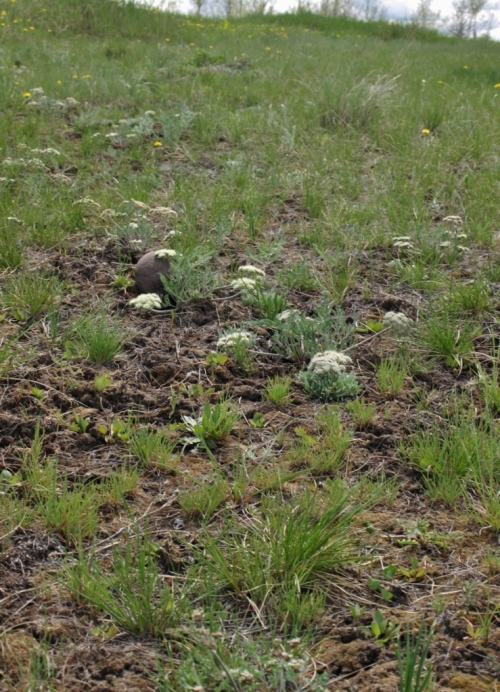
The native bunchgrass habitat of the Chilcotin Plateau is home to a variety of tenacious, low growing broadleaf plants, adapted to withstanding frequent grazing by native browsers as well as introduced cattle. Buckskin Road, near Riske Creek. May 15, 2019.

One of my favourites is this charming member of the Apiaceae clan, Lomatium macrocarpum. Common names include Bigseed Biscuitroot and Large-Seeded Desert-Parsley. The Secwepemc name for this plant is ‘qweq’wile’. It grows from a stout taproot, which was used as a traditional springtime food source for First Nations people throughout the plant’s wide range. Buckskin Road, near Riske Creek. May 15, 2019

A closer look reveals the many tiny florets which make up each cluster in the crowded umbels. Lomatium macrocarpum, near Riske Creek. May 15, 2019.
◊♦◊♦◊♦◊♦◊♦◊♦◊♦◊♦◊
And that’s all, folks!
We are done for the 2019 season.
A warm and grateful “Thank You!” to everyone who supported us this year. We hope your plants bring you much joy.
We encourage everyone to patronize our local Farmers’ Market venues throughout the growing season. So much good stuff coming into town from our regional farmers, artists and artisans!
Williams Lake Farmers’ Market
- Every Friday, May 10 to October 11, 2019
- 9 AM till 2 PM
- Every Tuesday, July and August, 2019
- 3 PM till 7 PM
- Kiwanis Park Market Site, next to the Cariboo Memorial Recreation Complex
Quesnel Farmers’ Market
- Every Saturday, till mid-October
- 8:30 AM till 1 PM
- Helen Dixon School Greenspace
McLeese Lake Farmers’ Market
- Every Sunday, till sometime in September, at the Tourist Info Site beside the Oasis Cafe
- 9:00 AM till 1:00 PM
◊♦◊♦◊♦◊♦◊♦◊♦◊♦◊♦◊
May 29, 2019
We’ve been incredibly busy with the plants-in-pots this spring, but we did steal away for a few short botanical rambles. Here are some of our local wildflowers in beautiful spring bloom.
◊♦◊♦◊♦◊♦◊♦◊♦◊♦◊♦◊
Grateful thanks to everyone who stopped by our display at Handmade in the Cariboo on Saturday, April 27th. We hope your new green additions bring you much pleasure this growing season and (in the case of perennials) beyond!!
HANDMADE IN THE CARIBOO
Elks Hall, Williams Lake
Saturday, April 27
10 AM till 4 PM
◊♦◊♦◊♦◊♦◊♦◊♦◊♦◊♦◊
April 8, 2019
◊♦◊♦◊♦◊♦◊♦◊♦◊♦◊♦◊
March 22, 2019
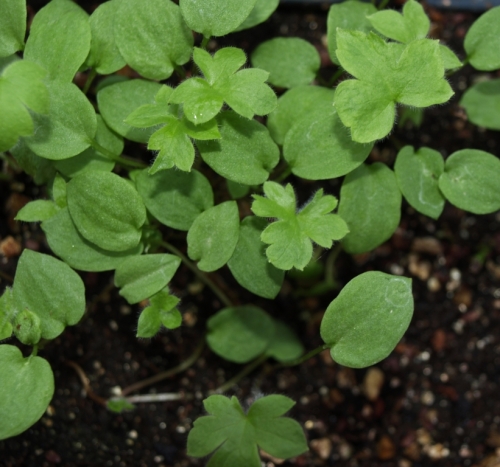
February 26, 2019 – Second leaves have just popped on a flat of Dowdeswell’s New Zealand delphiniums.
Seedlings are happening! Here’s a March 22nd sampling of what’s made it out of the seed flats to round two if the transplanting process:
- Achillea filipendulina
- Achillea millefolium ‘Cassis’
- Ahillea millefolium ‘Colorado’
- Achillea nana
- Aethionema grandiflora
- Alcea rosea ‘nigra’ ‘Jet Black’
- Alcea rosea ‘Majorette’
- Alcea rosea ‘Peaches & Dreams’
- Alcea rugosa
- Alchemilla mollis
- Anacyclus depressus
- Anchusa azurea ‘Dropmore Blue’
- Anemone sylvestris – wild form
- Anthyllis vulneraria var. coccinea
- Aquielgia vulgaris ‘alba’ (wild collected in Slovakia)
- Aquilegia atrata (wild collected in Austria)
- Aquilegia caerulea x ‘Crimson Star’
- Aquilegia caerulea x ‘McKana Giants’
- Aquilegia caerulea x ‘Sunshine Double Yellow’
- Aquilegia caerulea x ‘Swan Pink and Yellow’
- Aquilegia flabellata
- Aquilegia vulgaris (wild collected in Slovakia)
- Aquilegia vulgaris ‘stellata’ ‘Christa Barlow’
- Aquilegia vulgaris ‘stellata’ ‘Irish Elegance’
- Aquilegia vulgaris ‘stellata’ ‘Rose Barlow’
- Aquilegia x ‘Biedermeier’
- Armeria alpina
- Armeria maritima ‘splendens’
- Aruncus sinensis
- Aster alpinus ‘Dunkle Schoen’
- Aster alpinus ‘Happy End’
- Aster bellidiastrum
- Aster ericoides
- Aster macrophyllus
- Aster oblongifolius
- Aster pyrenaeus
- Aster tongolensis ‘Wartburg Star’
- Aster turbinellis
- Bouteloua gracilis
- Buphthalmum salicifolium
- Campanula alliarifolia
- Campanula barbata ‘Double Rose’
- Campanula bellidifolia
- Campanula cochlearifolia
- Campanula persicifolia ‘Telham Beauty’
- Campanula persicifolia ‘White Queen’
- Campanula portenschlagiana
- Campanula primulifolia
- Campanula punctata ‘rubriflora’
- Campanula thyrsoides ssp. thyrsoides
- Carlina acaulis ‘caulescens’
- Catananche caerulea
- Cerastium tomentosum
- Chelone glabra
- Chelone lyonii ‘Pink Temptation’
- Coreopsis lanceolata ‘Sterntaler’
- Coreopsis rosea ‘American Dream’
- Cortusa matthiola
- Cynara cardunculus f. scolymus ‘Tavor’
- Cyperus papyrus
- Delosperma congestum
- Delosperma cooperi ‘Table Mountain’
- Delphinium belladonna ‘Bellamosum’
- Delphinium belladonna ‘Casa Blanca’
- Delphinium belladonna ‘Cliveden Beauty’
- Delphinium ‘Cherry Blossom’
- Delphinium chinensis ‘Blue Butterfly’
- Delphinium grandiflorum – wild form
- Delphinium grandiflorum ‘ Rose Butterfly’
- Delphinium ‘Magic Fountain Dark Blue & White’
- Delphinium ‘Magic Fountain Mid Blue & White’
- Delphinium New Millennium ‘Cobalt Dreams’
- Delphinium New Millennium ‘Innocence’
- Delphinium New Millennium ‘Marble Delights’
- Delphinium New Millennium ‘Morning Lights’
- Delphinium New Millennium ‘Pagan Purples’
- Delphinium New Millennium ‘Sunny Skies’
- Delphinium Pacific Giant “Black Knight’
- Delphinium Pacific Giant ‘Astolat’
- Delphinium Pacific Giant ‘Blue Bird’
- Delphinium Pacific Giant ‘Blue Jay’
- Delphinium Pacific Giant ‘King Arthur’
- Delphinium Pacific Giant ‘Summer Skies’
- Dianthus allwoodii
- Dianthus arenarius
- Dianthus barbatus ‘Sooty’
- Dianthus deltoides ‘Arctic Fire’
- Dianthus deltoides ‘Confetti Carmine Pink’
- Dianthus deltoides ‘Erectus’
- Dianthus gratianopolitanus ‘La Bourboule’
- Dianthus gratianopolitanus ‘Rosafeder’
- Dianthus nitidus
- Dianthus plumarius ‘flore plena’ – ‘Double Rose’
- Dianthus plumarius ‘flore plena’ – ‘Double White’
- Dianthus plumarius ‘Spring Charm’
- Dianthus sylvestris
- Digitalis ferruginea
- Digitalis grandiflora
- Digitalis lanata
- Digitalis mertonensis
- Digitalis obscura ‘Sunset’
- Digitalis parviflora
- Digitalis purpurea ‘Pam’s Choice’ (‘Elsie Kelsey’)
- Digitalis purpurea ‘Sugar Plum’
- Digitalis thapsi ‘Spanish Peaks’
- Digitalis viridiflora
- Digitalis x ‘Dalmation Peach’
- Digitalis x ‘Dalmation Purple’
- Doronicum grandiflorum
- Dracocephalum argunense ‘Fuji Blue’
- Dracocephalum argunense ‘Fuji White’
- Dracocephalum botryoides
- Dracocephalum rupestre
- Echinacea pallida
- Echinacea purpurea ‘Green Twister’
- Echinops crispus
- Echium russicum
- Edraianthus graminifolius
- Engelmannia peristenia
- Erigeron alpinus
- Erigeron compositus
- Erigeron grandiflorus
- Erigeron x speciosus ‘Rose Jewel’
- Eryngium planum ‘Blau Kappe’
- Eryngium planum ‘Silver Salentino’
- Eryngium variifolium ‘Miss Marble’
- Eucalyptus citriodora
- Gaillardia aristata ‘Monarch’
- Gentiana cruciata ‘Blue Cross’
- Geum chiloense ‘Lady Stratheden’
- Geum chiloense ‘Mrs. Bradshaw’
- Geum coccineum ‘Koi’
- Geum rivale
- Geum triflorum
- Gillenia trifoliata
- Glycyrrhiza yunnanensis
- Helenium autumnale – wild form
- Helenium autumnale ‘Helena Red’
- Helenium hoopesii
- Hesperis tristis
- Heuchera micrantha ‘Palace Purple’
- Heuchera pulchella
- Heuchera sanguinea ‘Firefly’
- Hibiscus moscheutos ‘Light Pink’
- Hibiscus moscheutos ‘Red’
- Hypericum kalmianum
- Hypericum polyphyllum ‘grandiflorus’
- Hyssopus officinalis
- Incarvillea olgae (wild collected in Russia)
- Inula racemosa
- Jasione perennis ‘Blue Light’
- Kalimeris incisa
- Lavandula officinalis ‘Munstead’
- Leontopodium alpinum
- Leucanthemum x ‘Stardust’
- Lewisia cotyledon ‘Sunset Strain’
- Ligularia sibirica
- Lobelia cardinalis (wild collected in Ontario)
- Lobelia siphilitica ‘Blue Selection’
- Lupinus perennis
- Lupine – Russell – ‘Chandelier’ (yellow)
- Lupine – Russell – ‘Chateleine’ (pink)
- Lupine – Russell – ‘My Castle’ (red)
- Lupine – Russell – ‘Noble Maiden’ (white)
- Lupine – Russell – ‘The Governor’ (blue)
- Lychnis coronaria ‘alba’
- Lychnis coronaria ‘Angel Blush’
- Lychnis coronaria ‘Cerise’
- Lychnis flos-cuculi
- Lychinis x arkwrightii ‘Vesuvius’
- Malva moschata ‘Appleblossom’
- Marrubium vulgare
- Monarda bradburiana
- Monarda didyma x ‘Panorama’
- Monarda fistulosa
- Nepeta cataria
- Nepeta racemosa ‘Felix’
- Oenothera macrocarpa (missouriensis)
- Papaver orientale ‘Allegro’
- Papaver orientale ‘May Queen’
- Papaver orientale ‘Pizzicato’
- Papaver orientale ‘Princess Victoria Louise’
- Papaver orientale ‘Royal Wedding’
- Penstemon calycosus
- Penstemon digitalis
- Penstemon digitalis ‘Mystica’
- Penstemon strictus
- Penstemon tubaeflorus
- Phlomis cashmeriana
- Physalis alkekengi
- Physostegia virginicum ‘Rose Crown’
- Physostegia virginianum ‘Snow Crown’
- Platycodon grandiflora apoyama ‘Fairy Snow’
- Platycodon grandiflora ‘Fuji Blue’
- Platycodon grandiflora ‘Fuji Pink’
- Polemonium caeruleum album (wild collected in the Czech Republic)
- Polemonium yezoense ‘Purple Rain’
- Primula denticulata ‘Violet’
- Primula elatior – wild form
- Primula vulgaris – wild form
- Prunella grandiflora ‘Pagoda’
- Pulsatiulla vulgaris ‘Pearl Bells’
- Pulsatilla vulgaris ‘Rose Bells’
- Pulsatilla vulgaris ‘Violet Bells’
- Ratibida columnifera ‘pulcherrima’
- Rhodiola rhodantha
- Rhodiola rosea
- Romanzoffia sitchensis
- Rudbeckia grandiflora ‘Sundance’
- Ruellia humilis
- Rumex sanguineus
- Sagina subulata
- Salvia nemerosa (wild collected in Europe)
- Salvia nemerosa ‘Rosenwein’
- Salvia nemerosa ‘Violet Queen’
- Salvia sclarea
- Salvia verticillata
- Sanguisorba minor
- Scabiosa caucasica ‘Perfecta’
- Scutellaria alpina
- Sedum album
- Sedum acre ‘Oktoberfest’
- Sedum forsterianum ‘Oracle’
- Sedum reflexum ‘Blue Spruce’
- Sedum spurium ‘Red Carpet’
- Sedum spurium ‘Summer Snow’
- Sidalcea malviflora ‘Rosaly’
- Silene uniflora ‘compacta’
- Stachys byzantina
- Symphytum officinale
- Tanacetum coccineum ‘Robinson’s Pink’
- Telekia speciosa
- Thalictrum rochebrunianum
- Thalictrum uchiyamae
- Tricyrtis latifolia
- Trollius chinensis ‘Golden Queen’
- Trollius europaeus
- Trollius europaeus ‘compacta’ ‘Lemon Supreme’
- Verbascum x ‘Electric Yellow’ (‘Monet’s Garden’)
- Veronica longifolia ‘Pink Shades’
- Veronica NOID ‘Remy’s Tall Blue’
- Veronica pinnata ‘Blue Feathers’
- Veronica teucrium ‘Royal Blue’
- Veronicastrum virginicum
- Viola labradorica ‘purpurea’
- Viola sororia ‘alba’
- Viola sororia ‘Dark Freckles’
- Viola sororia ‘Emperor Magenta Red’
- Yucca filamentosa
◊♦◊♦◊♦◊♦◊♦◊♦◊♦◊♦◊
December 2, 2018
Six months from wild rose time, looking back or looking forward…
◊♦◊♦◊♦◊♦◊♦◊♦◊♦◊♦◊
November 28, 2018
The onset of the yearly cold time has us nostalgically looking back over images taken during warmer days, both in the domestic garden and in the wild.
A very beautiful British Columbian wildflower is Linum lewisii, Western Blue Flax, or Lewis Blue Flax. It was named after Captain Meriwether Lewis of the famed Lewis and Clark expedition, which collected and documented flora and fauna encountered during an epic journey from Missouri to the Pacific Coast and back from 1804 to 1806.
Linum lewisii is relatively common in the drier regions of the Cariboo-Chilcotin, and can be found along the Fraser River corridor and among native grasses on the great Chilcotin Plateau. It is a short-lived but generously self sowing perennial, making clumps of wiry stems lined with small linear leaves and topped by loose clusters of silken-textured, sky blue flowers in early summer.
These photos were taken during a botanizing trip through the souther interior of B.C. in late May and early June of 2014. A patch of blue on a hillside near Falkland caught our attention, and we hopped a ditch and scaled a steep embankment to find this vigorous stand of Lewis Flax growing under ponderosa pines in a native bunchgrass meadow starred generously with other wildflowers, including vigorous clumps of going-to-seed Arrowleaf Balsamroot, Balsamorhiza sagittata.
◊♦◊♦◊♦◊♦◊♦◊♦◊♦◊♦◊
November 13, 2018
Wandering about in the seedlists, I find myself thinking about all of the beautiful annuals we’ve had the pleasure of growing over the years. Many years ago, when the Williams Lake Farmers’ Market was just getting going in Old Courthouse Square, we brought in all sorts of things to sell. Vegetables, baking, herbs and perennial plants, cut flower bouquets, and, for a few years, dried flower bouquets, wreaths, and arrangements. Those were quite the thing, and people loved them. Not quite sure why we stopped doing that. Probably a time pinch thing!
Wondering if it’s time to return to these? They were so much fun to grow. Everlasting flowers are really something special, in particular the double-daisy-like strawflowers, such as these Xerochrysums.
Formerly classed as Helichrysum or Bracteantha, and still frequently listed under that name in our tradition-bound seed catalogues, the Xerochrysums are garden stars in a multitude of ways. They are lovely in ornamental border and container plantings, make grand cut flowers, and can be harvested in any stage from bud to bloom to dry as wreath adornments. Colours range through the red-orange-yellow-pink-white spectrum, and they hold their colour for decades.
These gorgeous strawflowers are native to Australia, where they grow in great drifts in open grassland areas. They are technically perennials, persisting from year to year in their native land, but they mature quickly enough to act as annuals in parts of the world where winter brings freezing temperatures.
November 2, 2018
The nursery year is getting underway. Plants started this year are being tucked into plunge beds for overwintering, seed lists are heading out to sources all around the world – New Zealand! Germany! Scotland! England! Hungary! The United States! (and yes, Canada, too) – and the last few loads of firewood to keep those soon-to-be-started seedlings warm and cozy through a Cariboo winter are making it in from the bush.
◊♦◊♦◊♦◊♦◊♦◊♦◊♦◊♦◊
October 18, 2018
Apologies for the long silence! We have had an extraordinarily eventful summer so the website has been sadly neglected.
This is just a quick note to assure everyone that we are still very much here; our big perennial seed orders for 2019 are being worked on right now, and we are busy sorting out and heeling in plants to carry over until next season. (Loads of lovely irises, and many more treasures.)
We do hope everyone is having a pleasant fall – the weather is at long last nice enough for some before-winter gardening – and we hope you all had a lovely garden this summer, too.
◊♦◊♦◊♦◊♦◊♦◊♦◊♦◊♦◊
May 24, 2018
Well, things are going better than anticipated with our “shut down” this season. While running very much at reduced speed, we are still managing to put together a load every week for the Williams Lake Farmers’ Market. Including – big surprise! – some tomatoes.
We’re delving into the corners of the greenhouse and rescuing some tomato plants, and they’re looking rather okay. No pre-orders, no promises, but it looks like the weeks to come will see some more interesting heirloom tomato varieties on the Market table. First come-first served!
Perennial selection is not what we’d wish it to be, but there are still many to choose from – new things will pop up every week. Again, supply is going to be random – a few of this or that – grab it when you see it!
If things keep on this current upswing, there *may* be cucumbers in the next few weeks. And ???
◊♦◊♦◊♦◊♦◊♦◊♦◊♦◊♦◊
May 7, 2018
This is a very hard post to write. I could go into a long, long saga of the challenges we’ve been immersed in this year – mother nature stuff, personal/family stuff – but I won’t.
Here’s the very condensed nitty gritty. Hill Farm Nursery will not be operating as usual in 2018. We will not be selling at all at Quesnel Market, though we may have a limited selection of things at Williams Lake and McLeese Lake Markets. We will not be supplying Blocks ‘R’Us. We are not taking orders. Those orders already made will be fulfilled – we’ve talked already to most of you about this – but otherwise we’re basically shutting things down for this season. (And yes, we are fine health-wise, please don’t worry about us on that account.)
Deepest of apologies to our loyal plant people.
The silver lining: doing this means we’ll be back in future years, after clearing the decks of some other pressing personal and infrastructure issues. And there well may be some Hill Farm Nursery plants popping up at the Station House Gallery and Scout Island plant sales, so grab ’em where you can find ’em.
We’ll be around; our daughter Jane will be managing the Williams Lake Farmers’ Market this year and we’re sure to be popping up there now and then. We look forward to chatting with you all and talking plants, salesman-pressure-free. 🙂
◊♦◊♦◊♦◊♦◊♦◊♦◊♦◊♦◊
April 29, 2018
Well, there we go – Quesnel Seedy Saturday has been successfully put on the shelf!
We had a great day, though there were not quite as many attendees as everyone was hoping for – there were a lot of competing events – but everyone who came had plenty of time to look and visit. Many Hill Farm tomato plants found new homes, and our Tomato Growing workshop was well attended. Nice start to our sales season – we had fun!
Meanwhile, in the garden, things are blooming.
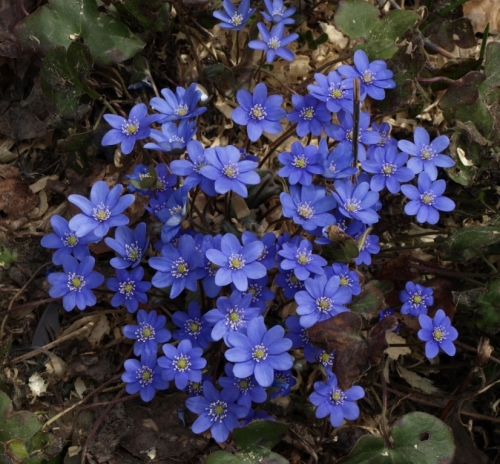
Hepatica nobilis – Common Hepatica, or Liverwort – this eastern Canadian wildflower is a beautiful thing, and we cherish our little collection of Hepaticas – so lovely a way to start the blooming season. There may be a few divisions of this one available at the first markets in Quesnel and Williams Lake – if interested, grab ’em, for we won’t have a lot.

A few clumps of snowdrops – Galanthus nivalis – always a bit chancy for us in the Cariboo, but we seem to have found a happy place for these – the colonies are increasing every year.

Oriental Hellebores – Helleborus orientalis ‘Ivory Prince’ – also an iffy Cariboo plant, but we have good luck with one protected spot, and we help out with a heap of wood shavings in the fall to protect the winter-forming flower buds and evergreen leaves.

Crocus chrysanthus ‘Gypsy Girl’ – this earliest of Snow Crocuses is sadly bleached by this year’s intense spring sun, but still intrigues with its beautifully marked petals.

A moment captured – bright blue Scilla sibirica peek through a burgeoning clump of Sweet Cicely (Myrrhis odorata) leaves. In another day or two the Myrrhis will be all we see, poor little Scilla will be overwhelmed!

In a corner of the greenhouse, and rushing the season – gleaming white buttercups – Ranunculus aconitifolius.

And the dividing of perennials has finally started – maybe a month late – things were still solidly frozen not too long ago. These are Dodecatheon meadia – all washed off and ready for their new pots.
◊♦◊♦◊♦◊♦◊♦◊♦◊♦◊♦◊
April 19, 2018
Just over a week since our last check-in here, and things at last are looking up! Just a few ice patches left on the north sides of buildings, and the grass is turning GREEN! Our native Sagebrush Buttercups are gleaming like a scattering of gold coins on the hillside above the nursery area, we have snowdrops blooming, and a few early crocuses, and the Hepatica are starting. Hoping to steal a few minutes with a camera today, in between potting up in the greenhouse, and maybe some digging outdoors.
In the meantime, here are a few random pictures of some of the delectable things we acquired for our personal garden during our recent quick trip to Salt Spring Island and Vancouver gardens and nurseries.

Scopolia carniolica ‘Zwanenberg’ – I am an utter pushover for the nightshades, and this dusky-flowered bio plant has long been on my wish list. (“Bio” being my personal shorthand for “Botanical Interest Only” – as any of you know who talk to me for long!) It might not be hardy for us, but a number of its relatives thrive in the shady garden, so I’m going to give it a whirl. Very understated, with small, downfacing flowers, but it blooms in earliest spring so that is a lot of its appeal at a time when the gardener is hungry for anything after that long winter away from the garden.
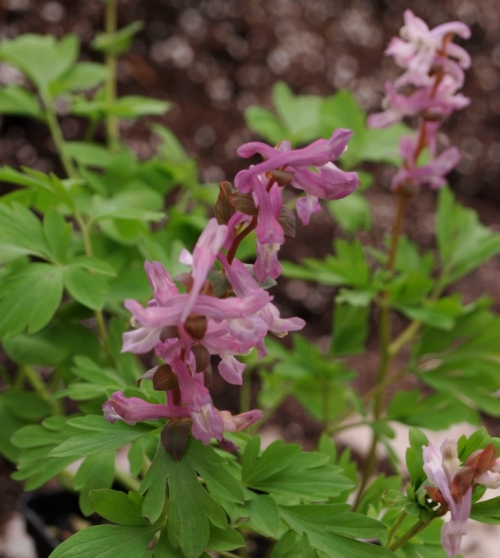
Corydalis solida ‘Penza Strain’. Beautiful Corydalis solida cultivars are proving quite well adapted to our garden, and we are mulling over stealing a few divisions to share with nursery customers next year. ‘Penza Strain’ is reputed to be even hardier than others, and the colours are charming, so we’ll see where this goes longer term.

Dicentra canadensis – common name Squirrel Corn, for its underground clusters of small bulblets. Here’s a flower detail of this tiny, early spring blooming eastern North America woodlander.

Asarum shuttleworthii – Mottled Wild Ginger. This tiny bio plant hails from the Appalachians, and the heart-shaped leaves are beautifully marked with white. Again, a questionably hardy species, a bit of a garden gamble.

Felinus domesticus ‘greenhouseii‘ cv. ‘Bill-the-Cat’. This interesting specimen of his tribe wandered in to Hill Farm way back in February or thereabouts, and charmed us so by his forthcoming personality that we couldn’t quite bring ourselves to take him up to the S.P.C.A. – the usual fate of the strays we so often are inflicted with by people dropping off their unwanted pets in the country – I could now go off on quite the rant about spaying and neutering your pets, but you’ve doubtless heard it all before, and of course none of you would do such a cruel thing as dump a cat off anywhere, right? Anyway, here’s Bill, post vet visits, and now a happy member of our motley tribe of ex-strays. He thinks the greenhouse is A-OK, and he loves to “help” whenever he is allowed to.
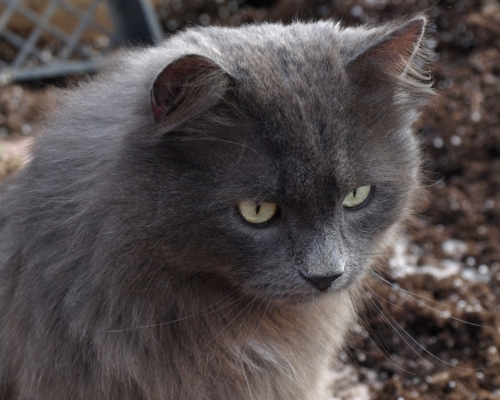
Bill – such a pretty boy! Love this guy. Full of teenage energy, and lots of raspy purrs. The vet estimated his age as 8 or 9 months, and he’s still growing, so doubtless that is about right.
◊♦◊♦◊♦◊♦◊♦◊♦◊♦◊♦◊
April 10, 2018
Our personal vista still includes way too much snow, but in the greenhouse things are looking truly springlike here and there. We are behind schedule in a rather frightening way, but the weather forecast is calling for some milder temperatures, and we hope to sink a shovel into the perennial beds in the next week or so, once the ice melts and the resulting mud dries up a bit.
I’m always saying “Onward!”, but it seems perennially appropriate, so that is the sentiment today!
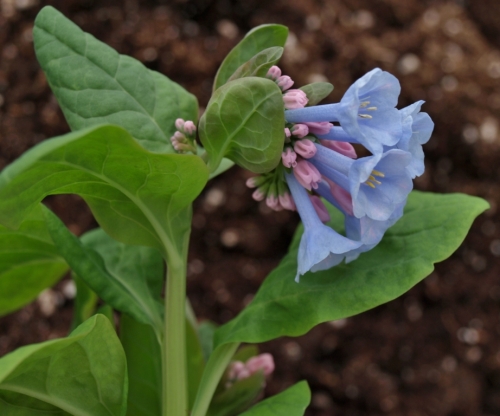
This earlybird Mertensia virginica will likely be all done flowering and thinking about dormancy by the time of the first sale day, but in the meantime it brings quiet enjoyment to the Hill Farmers.

And this pretty double Marsh Marigold – Caltha palustris ‘flore pleno’ – is rushing the season as well.
◊♦◊♦◊♦◊♦◊♦◊♦◊♦◊♦◊
March 19, 2018
Being a plant person is endlessly fascinating and sometimes humbling – the older I get and the more I learn, the less I realize I know. Case in point is this little “mystery plant”, observed last April on a drive down through the sagebrush flats near Ashcroft. I hopped the roadside fence to take pictures, thinking, “Hey, interesting. I’ll key this out at some future date to get a firm identity.”
Ha! Easier said than done. I can’t seem to pin it down. It’s fairly obviously (?) in the Cruciferae/Brassicaceae family – four petals, general features and habit – but which genus? Doesn’t pop up in any of the logical places either online or in my many reference books. And it’s driving me just a little bit crazy.
So if any of you wild plant people know what the heck this is, I’d sure appreciate a hint! *See below – found the I.D.
I’ve seen patches of it on the west side of Kamloops, too – just across from the copper mine. This colony was just south of Ashcroft, along Highway 97. Individual plants are quite small, maybe 6 inches tall. To me it looks like a Matthiola, but there was no discernible fragrance, and the only Matthiola that keys up on the B.C. lists is garden escapee Matthiola bicornis/longipetala, and I know that one well, and this isn’t that.

And another look at its habitat, at the foot of a cattle-grazed, sagebrush-covered hillside. Image: HFN
*Update, April 24, 2018. Found it!
This is Chorispora tenella, syn. Raphanus tenellus – Blue Mustard, Purple Mustard, Musk Mustard, Crossflower. It’s in the Brassicaceae family, and is an annual originally native to Russia and southwestern Asia, now a weedy introduced species in dry inland regions of the Pacific Northwest.
◊♦◊♦◊♦◊♦◊♦◊♦◊♦◊♦◊
March 9, 2018
Good news! Our missing perennial seed order arrived yesterday – only about two months late, but we’re going ahead and planting everything anyway. One hundred and thirty seed packets opened up and their contents sown in the flats yesterday – now it’s up to them.
And Persephone, perhaps – Greek goddess of spring – whose mythical presence feels very real and close while one is so deeply involved with the business of helping seeds become plants.
Well, we’re still covering our bases plant-wise by going ahead with an increased selection of vegetable and herb starts and also some lovely old-fashioned and heirloom annual flowers, plus we do have some lily bulbs and strawberry starts booked to arrive sometime this month.
The mix may be a bit different this year, but we’re bowing to necessity and finding it a good thing. Change is okay. Onward and upward!
And happy almost-spring!

March 8, 2018. Oh, boy. More snow. Winter’s last hurrah? Here’s hoping! Our baby plants (such as they are at this point – a bit of a saga regarding seeds delayed in transit) are all contained in that greenhouse just visible there behind the wintry trees.

Somewhere in this picture are a picnic table, a garden bench, and two Adirondack chairs. Yes, there is a lot of snow out there!

And here we have a lovely March garden scene! A good side of the snow is that we’re hoping that winter survival of the perennials will be a lot better than last year. April will show us – fingers crossed!
◊♦◊♦◊♦◊♦◊♦◊♦◊♦◊♦◊
February 17, 2018
Hey, everyone. The messages are starting to arrive: “What are you growing this year?”
I wish I knew! For I have some sad news to share. My great big order from my main perennial seed source in Europe is now SEVEN WEEKS late. It is stuck somewhere between there and here; one can only assume in Canada Customs in the bottom of some bin somewhere, as that is where postal tracking stops. Canada Post claims no knowledge.
Never fear! – there will be plants – there are well over a hundred species/varieties already sprouting in the greenhouse as I type this, grown from seed we collect ourselves, extra seed from last season, and seed exchange odds and ends. But the bulk of my “mainstream” stuff is in limbo. If it shows up in the next week or so, we still might squeak by, but things will be pretty small at market time…
Yeah, I feel a tiny bit stressed out.
On the bright side, we have our reliable dividables out in the flower beds, and we heeled a whole bunch of young stuff into the garden in the fall, so if winter survival is good we will be smiling. I only wish I could remember what’s out there!
And maybe this will be a good year to grow people some of those interesting annuals they’re always asking for. We have options. (She says, optimistically!)
Spring will tell.
Onward!
January 27, 2018
Winter is back; the snow is drifting down as an arctic front blows in from the north. It’s not as pleasant as it could be out in the propagation greenhouse today, so I’m using that as an excuse to stay inside near the fire, and to do some tweaking here on the website.
Going through pictures of pleasant excursions during warmer seasons, I found this cache of images of one of my favourite native alpine/subalpines.
Found throughout the northern hemisphere in mountainous regions, and common throughout British Columbia at higher elevation areas, this pretty thing is a relative of the ubiquitous Fireweed, but smaller and with relatively larger flowers, as well as the most beautiful blue-green foliage.
I have the white variation of this usually-mauve flower germinating right now, wild-collected in Europe; I’m hoping to bring the tiny seedlings to maturity. In the meantime, here are some of our native Canadian sister-plants.
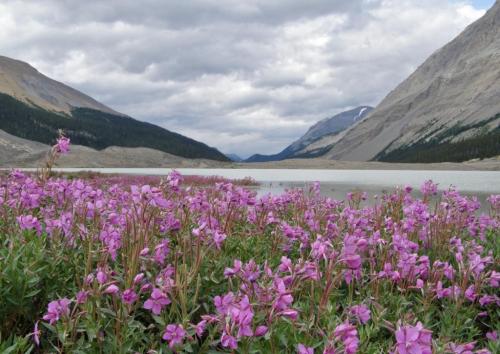
Alpine Willowherb, Chamaenerion latfolium, aka Epilobium latifolium. Other common names are Alpine Fireweed and River Beauty. This colony grows at the foot of the Athabasca Glacier, alongside the Icefields Parkway between Jasper and Banff. Image: HFN

Individual blooms are large for the size of the plants, up to 2 inches in diameter in flourishing specimens. Image:HFN

As can be guessed at by flower shape and the arrangement of the protruding white stamens tipped by prominent rust-red pistils, as well the long sepals backing the petals, this plant is in the Onograceae (Evening Primrose) Family. Image: HFN

Growing beside the Athabasba River, Rocky Mountains, Alberta. The alternate common name River Beauty is very apt; this plant certainly doesn’t mind wet feet, though such a high level of moisture is not a necessity. Image: HFN

Nature doesn’t care what colours “go tegether”! A striking combination of bright scarlet Indian Paintbrush (Castilleja sp.) and Alpine Fireweed delights the eye at peak late July bloom time in the alpine meadows of Mount Revelstoke in British Columbia. Image: HFN
January 17, 2018
We are well into the new year already, and trying to come to grips with the fact that spring is racing up to meet us.
Seeds are sprouting in the cool greenhouse, more seeds are on their way from all corners of the globe, and we are dreaming with happy anticipation of a (short! – because spring is our most hectic time of year, of course) planned garden excursion to the lower mainland and Washington state.
Here are a few glimpses of last April’s foray south.

West coast native Western Bleeding Heart, Dicentra formosa, emerging through last autumn’s leaves in the David C. Lam Asian Garden at U.B.C., Vancouver. April 2017. Image: HFN
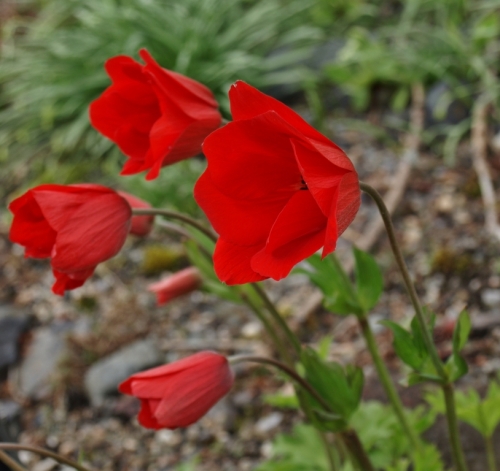
All the way from Greece, Anemone pavonina, the Peacock Anemone, adds a dash of brilliant spring colour to the sun-baked alpine garden. This frost-tender perennial (Zone 8 or thereabouts) is not for us in cooler climes to grow, but we can admire it for its touch of exotic splendour amongst all of the paler-coloured spring flowers. U.B.C. Botanical Garden, April 2017. Image: HFN

Columbia Gorge Desert Parsley, Lomatium columbianum, is a truly stunning early spring bloomer, and one I lust over, though it is not a real option for my Cariboo garden, being not quite hardy enough to weather our colder winters. Large umbels of rosy-purple, nectar-rich flowers are produced in April, attracting all sorts of pollinators. U.B.C. Botanical Garden, April 2017. Image: HFN
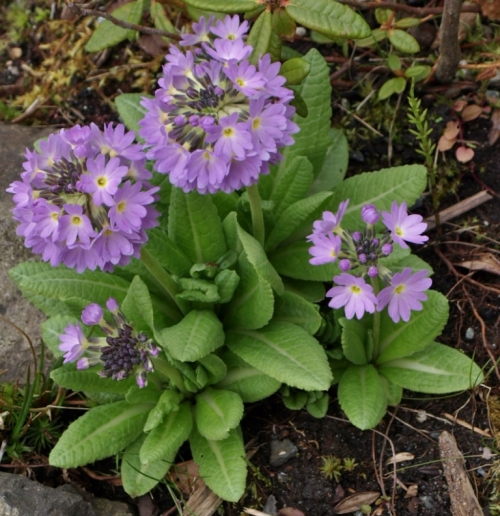
Primula denticulata, the common Drumstick Primrose, is well known to us up here in the Cariboo. It blooms in earliest spring, weathering lingering frost and late snows. A lovely thing, this one is. U.B.C. Botanical Garden, April 2017. Image: HFN

Synthyris missurica, Mountain Kittentails, is a small charmer native to the Pacific Northwest. Seed is in the flats this year for this one; fingers crossed that it sprouts and thrives, for I find it very appealing. U.B.C. Botanical Garden, April 2017. Image: HFN
November 24, 2017
Looking through pictures of summers past and found these interesting things, from the Williams Lake Garden Tour of July, 2016. Mere snippets, from a wonderful array of gorgeous gardens. Such generous gardeners we have in the Cariboo, sharing their garden visions and their private green places and providing abundant pleasure and inspiration for others!

A dry stream bed flows through this inspired urban xeriscape planting in Williams Lake, B.C. July 9, 2016. Image: HFN

Hen-and-chicks, Sempervivum species. These charming (and very hardy) succulents out-do themselves when it comes to blooming time! July 9, 2016. Williams Lake, B.C. Image: HFN
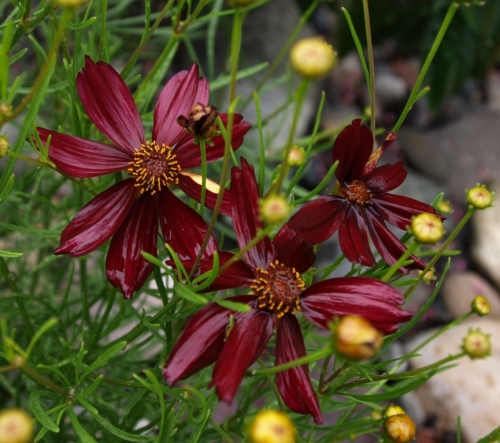
Threadleaf Coreopsis, Coreopsis verticillata. Originally native to sunny places in Eastern North America, this pretty clump former thrives in the dry border. The profuse daisy-like blooms appear June through August, on foot-tall plants. Cultivars come in shades of yellow, gold and red. July 9, 2016. Williams Lake, B.C. Image: HFN

Tussock Bellflower, Campanula carpatica, enhances a backyard water feature. Williams Lake, B.C. July 9, 2016. Image: HFN

Drought tolerant, starry-flowered Goldmoss Sedum, Sedum acre. This ubiquitous small groundcover thrives in Cariboo-Chilcotin gardens, and makes a tough and cheerful edger for hot, dry borders. It originally hails from Europe and North Africa, but has naturalized itself right across North America. July 9, 2016. Williams Lake, B.C. Image: HFN

Fairy’s-Thimble Bellflower, Campanula cochlearifolia, softens a cement edging strip. Williams Lake, B.C. July 9, 2016. Image: HFN

Showy Blanketflower, Gaillardia grandiflora, contrasts with delicate Blue Flax, Linum perenne. Both share a preference for sunny spots with well-drained soil. July 9, 2016. Williams Lake, B.C. Image: HFN

Yarrow Yarrow! Cousins Fernleaf Yarrow (Achillea filipendulina) and our native Common Yarrow (Achillea millefolium), mingle perfectly on a dry lakeside embankment. Williams Lake, B.C. July 9, 2016. Image: HFN

A deliciously sherbert yellow Shasta Daisy cultivar, Leucanthemum hybrid, gently glows in the rain. Williams Lake, B.C. July 9, 2016. Image: HFN

More flowers for sunny spots. A drying seedhead of ‘Purple Sensation’ Ornamental Onion, Allium aflatunense, contrasts with rich pink Spike Veronica, Veronica spicata. July 9, 2016. Williams Lake, B.C. Image: HFN

A classic perennial border assembly of hardy, old fashioned flowers: tall blue Delphinium, scarlet Maltese Cross (Lychnis chalcedonica), and rosy-mauve Musk Mallow (Malva moschata ‘rosea’). 150 Mile House, B.C. July 9, 2016. Image: HFN

Elegant Goatsbeard, Aruncus species, a North American native, moves into the garden with perfect good manners and quite a lot of style. 150 Mile House, B.C. July 9, 2016. Image: HFN
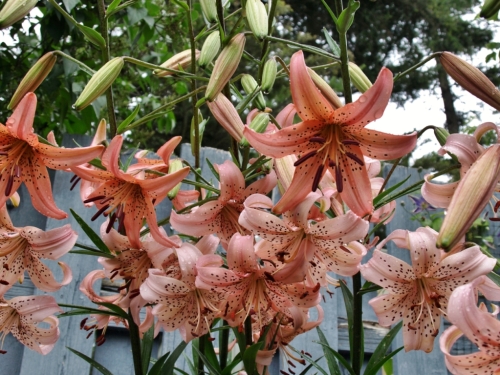
Summer brings lilies to the garden. Here is Tiger Lily ‘Pink Flavour’, tall and long-blooming, and the most intriguing blend of salmon and pink. Williams Lake, B.C. July 9, 2016. Image: HFN

This compact clump of delicately freckled white Asiatic lilies is perfectly set off by dark-leaved sedum and golden coreopsis. Williams Lake, B.C. July 9, 2016. Image: HFN
October 30, 2017

Berkheya cirsifolia – a gorgeous late-blooming “thistle” from South Africa. Truly beautiful blooms and a great hit with foraging bees, as are all the Composites.
Wasn’t that a trying sort of summer we’ve finally soldiered through?
Such a strange, sad, difficult year this one’s turned out to be. Though Hill Farm rode out the wildfire time safely, so many others in our region have not been so fortunate. Our thoughts are ever with those who’ve lost so much and are now trying to return to some sort of new normal.
Blanketed in smoke as we were for weeks and weeks, the plants in the garden struggled somewhat, between burning heat, no rain, and then unseasonable coolness and low light levels on the smokiest days. Some things definitely were more sensitive, and we noticed stunted growth on a number of species. Other things plugged right along.
Good thing we have next year to look forward to!
In the process of urgently putting the garden to bed before the cold weather and snow hit us, as forecast to be in a very few days, all the while assessing what did well, what didn’t, and what we want to grow for next year.
Hoping you all have had a good fall – weren’t the turning leaves particularly beautiful this year?! – and wishing everyone a kindly winter. Not too many weird temperature fluctuations or sudden January thaws, not too cold, and just the right amount of snow! Here’s hoping. See you all on the other side…

Allium tuberosum – Garlic chives. The onions are also important nectar sources for insects, and the later-blooming species such as this one help to extend the blooming season right up until hard frosts.
June 18, 2017
And it’s a wrap.
Yesterday saw our last sales day of the 2017 season, and a very good day it was, indeed. Every sales day was a wonderfully positive experience for us this year – many, many thanks to all of our old and new customers who have supported us so generously!
We hope your Hill Farm plants thrive and bring you much satisfaction over the years, and that your gardens bring you joy.
Happy almost-Summer-Solstice!
May 16, 2017
Flying right along, this reluctant spring is. Heading into our third Market weekend, and still scrambling, which I think may be the perennial 😉 theme this year.
Tomato plants have been in high demand, despite the unkind weather, and we’ll have some interesting ones at this weekend’s markets; lots more (if all goes well) the next weekend, May 26-27-28, when it might be just a bit warmer, which these guys really need.
Took a few moments yesterday in our personal garden to celebrate a few of our green survivors. Garden clean-up and assessment are ongoing; a few things we thought were lost are showing tentative signs of life; others have undeniably left us. Similar stories are coming to us from all of our fellow Cariboo gardeners; this past winter was one of those testing seasons, but perennial gardeners being the resilient souls that they are, a lot of us are looking at it as just another knowledge bump, albeit a rather painful one!

Lunaria rediviva – Perennial Honesty. This rare and charming relative of the well-known biennial Honesty or Moneyplant, Lunaria annua, has been on my personal wish list for many years. Several springs ago I scored a specimen from Lambert and Marjanne Vrijmoed’s fantastic Free Spirit Nursery in Langley, and I am beyond thrilled that it is up and away and obviously well settled in. It set seed last season, and I am keeping an eye open for offspring, as this is a plant I hope to be able to offer to others in the future.

Saruma henryi. This is another one of my personal treasures, an Asarum relative from China, and another “iffy” plant for our area. Year three now, and looking good. It did get a protective pile of fluffy wood shavings in the fall, a little extra insurance, as it were, and here we are.

Trachystemon orientalis. Sadly, this one didn’t make it. R.I.P., my quirky Borage relative from Turkey. This was winter number four or five for my expanding patch, and I wasn’t expecting to lose it, but when the ground thawed there was nothing left but dead foliage and black mushy roots. Well, I’ll be trying again, once I can get my hands on another start. Free Spirit will be my best bet, I think, though I did once see some offered at the UBC Botanical Garden nursery. This picture was taken at UBC earlier this year, while I was still smugly thinking my own patch was merely lying dormant. Onward and upward! We’ll try Trachystemon again.
May 7, 2017
First Quesnel Farmers’ Market of 2017 is ticked off the calendar! Despite the cold, cold wind and rain, we had a great day yesterday, full of familiar faces and cheerful new acquaintances. Grateful thanks to the customers who braved the chill and stopped by! It can only get better, right?!
In the garden, things are finally looking springlike. It’s all about appreciating things in passing this frantic time of the year for us, but here are a few interesting highlights from earlier in the week.

Canada Wild Ginger, Asarum canadense. Those charming “praying hands” will soon unfold into silky-textured leaves. Can you see the small, ground-hugging, bottle-shaped, dark red blooms? Pollinated by ground beetles. Hill Farm, May 1, 2017.

Sharp-Leaved Hepatica, Hepatica acutiloba. A wildflower from Eastern North American mixed hardwood forests, and a treasured member of our small but ever-increasing personal Hepatica collection. Hill Farm, May 1, 2017.

Twinleaf, Jeffersonia diphylla. Another transplanted Easterner, the ephemeral Twinleaf enchants for a few brief weeks in spring, until going dormant in midsummer. Hill Farm, May 1, 2017
May 1, 2017
Division report.
Many of our best perennials are ones which are dug out of their nursery beds and divided in early spring. Usually at this point, the majority of these are already in pots for you, settling down after their rude disturbance and making lots of new roots and shoots. Well, not this year!
As it continues cold and wet, digging and dividing is progressing very slowly. There will still be some fantastic things coming, but at this point we’re anticipating late May for many, possibly early June.
Some things, though they’ve survived, have been hit so hard by winter damage that they will be in recovery mode this season.
Luckily we have a large selection of seed-grown plants to get us started. These are being moved outside to harden off, and have so far experienced just about everything nature can throw at a new little plant, from frost to wind-whipping to sunburn, with a bit of hail thrown in. There may be a damaged leaf here and there, but those that are coming to the Quesnel Farmers’ Market this weekend, Saturday, May 6, should be good to plant out, barring a catastrophic cold snap!
We’ll see about bringing in some tomatoes, too, though these will definitely not be ready for outside – warm greenhouses only. Still mulling over how to best protect them from the elements at what we anticipate will be a cool first outdoor market. Big tubs, and some row cover? Hmmm… Maybe we’ll keep them in the cab of the truck, to be viewed “by appointment only.” 😉
April 26, 2017
The work-in-progress draft plant lists for 2017 are up. These are far from complete – maybe half of what we will have this year is listed – and many descriptions are incomplete. Please forgive us for publishing these before they’re ready – but we are fielding so many calls inquiring what we will have this year that we thought we’d better get at least a portion of it available to you.
Please direct any inquiries via email if possible: bscharf@uniserve.com
Our first perennial sales day in Quesnel will be Saturday, May 6, at the Farmers’ Market at Helen Dixon.
Perennials in Williams Lake: Blocks ‘R’ Us should have an early selection the week following May 6. (We will post as soon as they’re there.)
Our first Williams Lake Farmers’ Market will be Friday, May 12 at Boitanio Park.
April 25, 2017
What a rotten winter this last one was, horticulturally speaking! Talking to fellow gardeners this week, and the tales of winterkill woe are many. The consensus is that the long fall encouraged out-of-season sprouting, and then when it suddenly got cold, things weren’t as dormant as they should have been. And there was negligible snow cover. The general temperature fluctuations month after month certainly played a part. Poor plants!
Recently reported losses of generally winter-proof plants:
- Oriental poppies (Papaver orientale)
- Bearded iris (but only some – others look fine)
- Daffodils
- Crocus – both species types and the large Dutch ones
- Callirhoe involucrata
- Centaurea of various sorts
- Strawberries
- Various Pulmonaria
- Daylilies (Hemerocallis)
- Bleeding Heart – Dicentra spectabilis types
The list will surely grow as people report in, but on the bright side, there are plenty of survivors, too. (And room in the garden to add things where other things succumbed. Silver lining!)
April 17, 2017
The Next Big Thing a.k.a. The Season Opener Event – SEEDY SATURDAY in Quesnel! Saturday, April 22, 2017. College of New Caledonia Atrium, 10 A.M. till 4 P.M. Seeds! Plants! Kid’s Events! Educational displays! Workshops! Good food!
Hill Farm Nursery will be there with a nice selection of extra-early and container-appropriate, delicious and beautiful heirloom tomatoes. Here’s the 2017 line-up:
- Alaska
- Andy’s Buckflats Wonder
- Amethyst Cream Cherry
- Banana Cream
- Baxter’s Bush Cherry
- Blaby’s Special
- Black Prince
- Dwarf Firebird Sweet
- House
- Kookaburra Cackle
- Loxton Lad
- Polar Baby
- Pollock
- Yellow Canary Cherry
And maybe a few other goodies.
Let’s see…
Dwarf peas for your containers – sweet ‘Little Marvel’, introduced way back in 1908, and an All American Selections gold medal winner in 1934. Grow a delicious bit of garden history.
Catnip. For your feline friend(s). Meow!
‘Kent’ Strawberries – an excellent Canadian variety, bred for our growing conditions. Good in the garden, raised beds, or containers. June-bearing. Sweet and juicy, loads of delicious fruit. Gallon pots, 5 crowns in each.
Old-fashioned tiger lilies. Remember grandma’s garden? These were likely growing there. We have both the classic single, bright orange deeply freckled with dark spots, and the weird and wonderful double version. Gallon pots, 2 big bulbs in each. Raring to go. Grrr!
April 2, 2017
Freshly back from Vancouver, a lightning-fast trip involving a roundabout detour through the snowy Coquihalla to get around a piece of the mountain sitting smack-dab on the Canyon highway at Yale.
We visited the botanical gardens at UBC and Van Dusen, chummed around with some horticultural friends, and came back with a car-full of interesting green things. All in all, a nicely successful little road trip.
The coastal spring is a good three weeks behind schedule, and abundant winter damage is evident everywhere. So it wasn’t just the Cariboo-Chilcotin having a tough winter this year. We’re not alone!
Looking forward to getting a shovel into the soil this week in our own garden; hoping to dig up some of our mother plants to make divisions for sale. Last time we checked – a few days ago – there was still ice just a few inches down. But it’s been a bit warmer, so perhaps things are thawing out at last?
Not sure what we’ll find – winter kill has certainly taken place with some of our treasures – fingers crossed!

Helleborus orientalis blossoms thoughtfully arranged to display their beauty, Van Dusen Botanical Garden, Vancouver, B.C., April 1, 2017.
March 8, 2017
Nursery update!
Spring is dragging its heels this year. The river is still mostly frozen over, and the thermometer dipped to -17 Celsius a night or so ago. Very different compared to this date a year ago, when snowdrops and crocuses were in fullest bloom!
Our largest (and last?) wood frame permanent greenhouse is now up and covered with its outer layer of plastic; this next week will see the inner plastic layer installed, tables and walkways built, and smoke rising from the chimney. (If all goes as planned. Fingers crossed!)
Meanwhile last year’s new greenhouse, now suddenly the “older” greenhouse, is stuffed full of baby plants. We had grand germination of seed-grown perennial plants this winter; we have a lovely selection of up-and-comings.
Which leads to the Plant List 2017 topic. It should be out right now, but because the garden proper is still frozen solid, and we have no idea what plant survival will be like after this most erratic winter, we have decided to hold off publishing the new list for a few more weeks. So, how does late March sound?
The list is extra-long this year, and we’ve decided to divide it up into a number of sections, arranged in alphabetical sequence (A to D, E to L, M to Q, R to Z) so keep an eye out for that up in the menu section.
Tomato seedlings are popping up. Peppers, too. Mulling over doing a few more vegetable starts for sale, due to consistent requests at the Farmers’ Markets. No promises – we’ll see how spring progresses. That whole time crunch thing…
Looking forward to gardening season, and to reconnecting with everyone at our various sales venues.
Goodbye for now, with glimpses of this time last year!

The weird and wonderful early spring bloom clusters of Japanese Butterbur, Petasites japonicus ‘variegata’. March 6, 2016.

The mild and snowy 2015-16 winter resulted in a bumper crop of sturdy Johnny-Jump-Ups, aka Viola tricolour. March 6, 2016.
February 22, 2017
Seed orders, seed orders – those rattling envelopes arriving in the mail, each stuffed full of seedy potential – still a thrill after all these years! Yesterday it was the order from Annapolis in Nova Scotia. Such pretty packages! (And the heirloom seeds within are very special, too.)
Turning our thoughts towards Quesnel Seed Saturday, April 22. Is it time to pop a few of these into the starter flats? Thinking maybe so – have to be ready for those earlybird gardeners!
February 14, 2017
Happy Valentine’s Day!
January 24, 2017
Doesn’t this look good right now?!
Soon…soon…
January 13, 2017
Seedlings are sprouting under the grow lights, the last of the seed orders are trickling in, and the usual mulling over of how best to get the plants to the people is well underway.
As most of you know, we live in a relatively out-of-the-way place, and have been hesitant to establish an actual sales area here on the farm, mostly because we are generally in some disarray due to various construction projects going on in the spring, the general chaotic condition of the overgrown personal garden, and our rather fragmented personal schedule which precludes someone always being in attendance.
Our solution has been to pack up our plants and bring them into town in May and June, to the Farmers’ Markets in Williams Lake, Quesnel, occasionally 100 Mile House, and, most recently, McLeese Lake.
We’ve been hoping to establish a retail arrangement with a town business in order to give access to the plants during non-Market days, and last year’s experimental arrangement with Blocks’R’Us in Williams Lake was, we think, fairly successful. We are hoping to expand our offerings there this coming year, with a larger range of plants on offer and a continual updating of selection throughout the spring gardening season.
The Williams Lake Farmers’ Market is again on the move, and though we fully intend to attend as much as possible in May and June of 2017, the ongoing uncertainty of the Market schedule and location have us again reconsidering our sales options. We work so hard at producing these plants, and the sales window is so limited, that a week or two of lost sales in the peak of the planting season can make a discouraging difference to our bottom line.
Much as the nursery is a true “labour of love”, it is also meant to provide a certain level of financial gain to our family, as I am sure you will all appreciate.
The sketches for an on-farm nursery sales area here are once again out on the table, and we hope to move forward with this project, with an anticipated opening in Spring of 2019.
In the meantime, we look forward to seeing everybody at the various Cariboo Farmers’ Markets, for at least another few years.
Stay warm, fellow gardeners, and work on those perennial garden plans. The 2017 Plant Lists will be up sometime in late February/early March, so keep an eye on the website for those.
And, speaking of plants, here is a sneak peek at a fascinating thing that we may be able to share with you this coming season, if all goes well. It’s a rather exotic, shrub-like but herbaceous Chinese Liquorice, which has made it through several winters here with the added protection of a generous heap of wood shavings dumped over the crown in late fall. Last year its fantastically ornamental seed pods provided us with a generous handul of seeds, which are now in the starter flats.
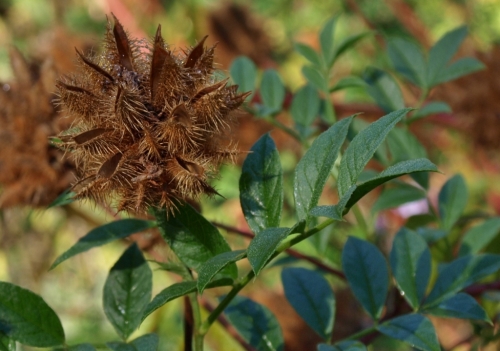
Glycyrrhiza yunnanensis – Yunnan Licorice. Close-up of seedhead. Hill Farm, Macalister, B.C. October 2016. Image: HFN
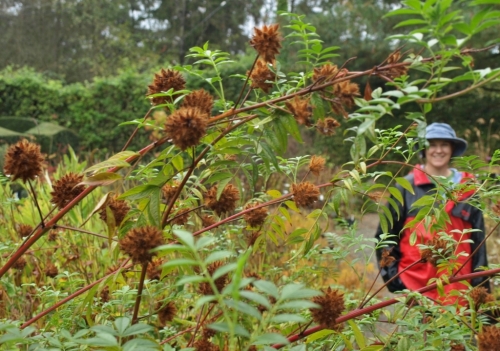
Glycyrrhiza yunnanensis. This plant gets gracefully large, with semi-woody stems to 6 feet tall. Clusters of small, light purple pea-flowers are quietly attractive, but the long-lasting seed heads are the real thrill with this one. Picture taken at the stellar Free Spirit Nursery in Langley, October 2014. Image: HFN
December 20, 2016
Have some spare time (and spare cutlery) on your hands this winter? Here you go. 🙂
December 16, 2016
Looking out my window at a deeply frozen world – it was minus 24 Celsius when I glanced at the thermometer a little while ago – it’s hard to believe that we are a mere few months from spring. But we are indeed, and the relentless calendar tells me it’s time to get those last few seed orders sorted out, and those things that need a stratification (chilling) period into the germination mix, pronto!
Last night I ordered the delphinium seeds for this spring’s nursery offering, and, as always, it was a tough decision. So many lovely ones to choose from. I have been growing the New Millennium series from Dowdeswell’s in New Zealand for more than a decade now, and they never disappoint. Huge flowers on strong spikes, with the most beautiful colours imaginable.
Here’s the link to the Dowdeswell’s website, for those of you curious to learn more. Dowdeswell’s Delphiniums
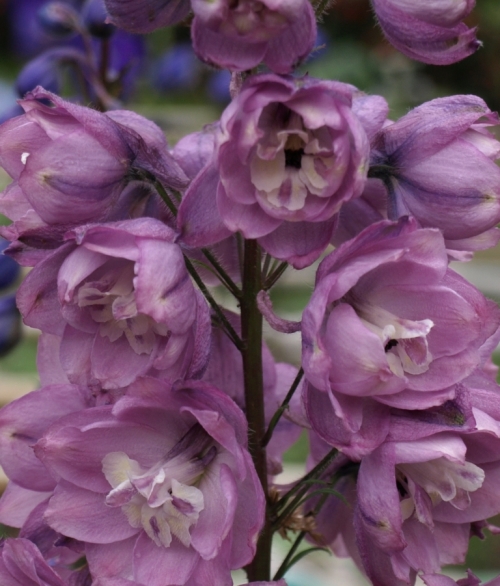
New Millennium delphinium, first year bloom in October. An un-named seedling from the mulberry-pink line. Image: HFN
October 20, 2016
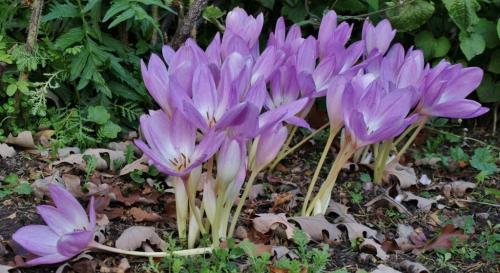
Hill Farm, October 2016 – Autumn Crocus – Colchicum autumnale – also known as Meadow Saffron, or Naked Ladies/Naked Boys, in reference to the flowers’ habit of emerging without any protective foliage in autumn. (The leaves form lush green clumps in the spring, storing up energy for the fall flush of flowers.) Image: HFN
H.E. Bates:
A garden should be in a constant state of fluid change, expansion, experiment, adventure; above all it should be an inquisitive, loving, but self-critical journey on the part of its owner.
Late autumn gives the gardener a rare chance to stop and assess what’s going on in the personal plot; what worked, what didn’t, what one would like to change. Now come the months of garden dreams, the cold time of the year giving a well-deserved respite from the labours of the growing season.
On a prosaic note, our seed lists are currently being made up as we look back the plant year now on the wane; what you liked, what you shunned, what we’ll be offering up to you next year.
There are still a few golden leaves on some of our big cottonwood trees; there are still flowers in the garden; it’s not quite over yet.
June 13, 2016
Well, it’s been fun, but it’s time to wind things down for the year. One more Market weekend to go – June 17-18-19 – and then the Hill Farm Nursery folk will be heading into their own garden to try to make growing-season order from sales-season chaos.
Come and see us in Williams Lake (Friday the 17th), Quesnel (Saturday the 18th), and McLeese Lake (Sunday the 19th) for one last chance to pick up some perfect-for-the-Cariboo plants.
We’ve been rummaging around in the corners of the greenhouses, finding some interesting things. Not sure of the details of our “Final Weekend Sale”, but there will definitely be some great deals!
May 25, 2016
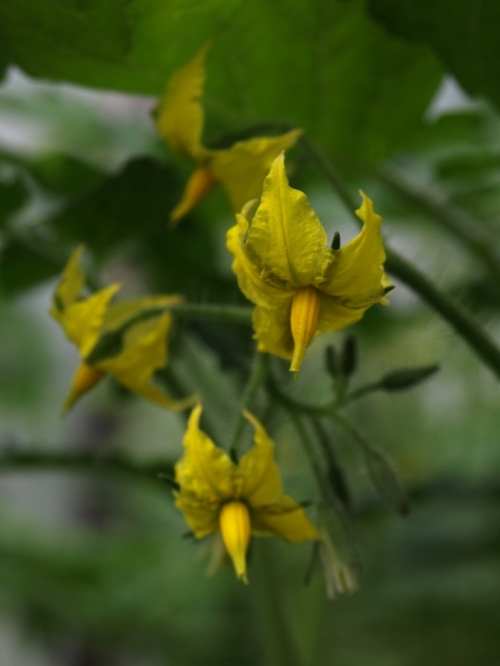
Tomato blossoms are popping out all over, promises of good things to come. We’ll have lots of lovely tomato varieties in half gallon and gallon pots, right till the end of June. Container-growing types galore! Image: HFN
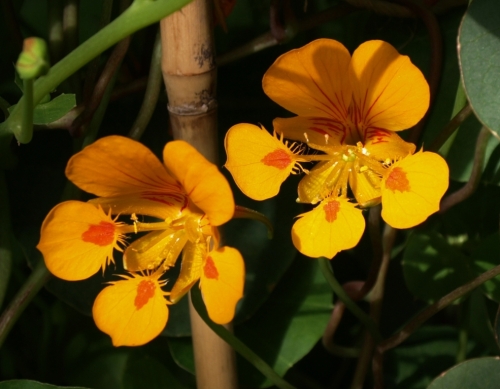
A petite heritage nasturtium, ‘Elf Cap’, vigorously climbs a bamboo tripod. Look for these in 2017, as we will be collecting seed this season to share next year. Image: HFN
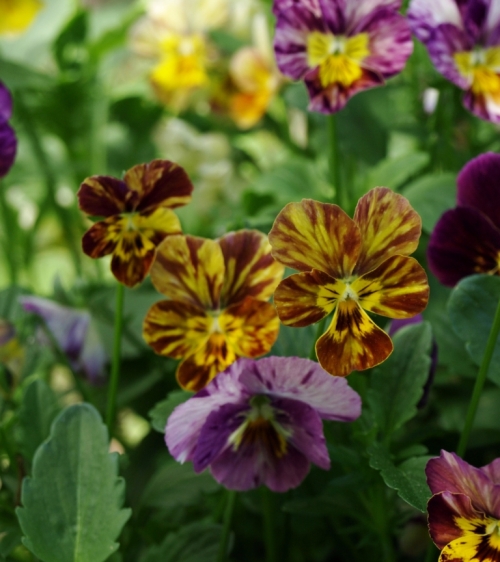
Heirloom pansy ‘Brush Strokes’ is splashed and streaked with contrasting tones. Another one to watch for in 2017. Image: HFN
May 17, 2016
May is already more than half over – how did that happen?! A green blur…
It’s all about tomatoes here for the next few weeks, as we send the delectable nightshades out into the world, but there are still moments to stop and take in the last of the spring flowers.
Hoping your May gardens are bringing you much joy!
May 11, 2016
The Farmers’ Markets are off and running! Come see us in Williams Lake on Fridays in Boitanio Park, 9 AM till 2 PM, Quesnel at the Helen Dixon Center on Saturdays, 8:30 AM till 1 PM, and also at lovely McLeese Lake on Sundays, right between the Pub and Oasis Cafe, 9 AM till 2 PM. (We may not make every McLeese Lake date – some Sundays we are already booked elsewhere – but please stop by and check out what the other vendors have on offer – lots of goodies!)
Look for the old light blue truck with the big grey box, and a lime green umbrella, and 6 long tables overflowing with plants. Still organizing proper signage – we have retired our very beat up original Hill Farm Nursery sign, and are considering something in the way of an easy-to-see banner. Maybe by the May 20-21 weekend? It’s on the l-o-n-g “To Do'” list!
April 23, 2016
One of my favourite spring alpines for a dry and sunny slope – Erigeron compositus – Cutleaf Daisy. Native to most of Canada’s alpine regions, including the Arctic, it colonizes nicely in the garden when conditions are to its liking. Tuft forming, it spreads by seed, and makes a quietly cheerful display late April right through May. If you visit the David Douglas Botanical Garden at UNBC in Prince George, you’ll see a happy population on the first set of mounds, where these photos were taken.
April 21, 2016
Blink and you’ll miss them – spring ephemerals are delicately beautiful but oh-so-fleeting.
April 18, 2016
Super-warm weather forecast for this week, so we are racing the clock and Mother Nature getting things divided. Spring is going too fast!
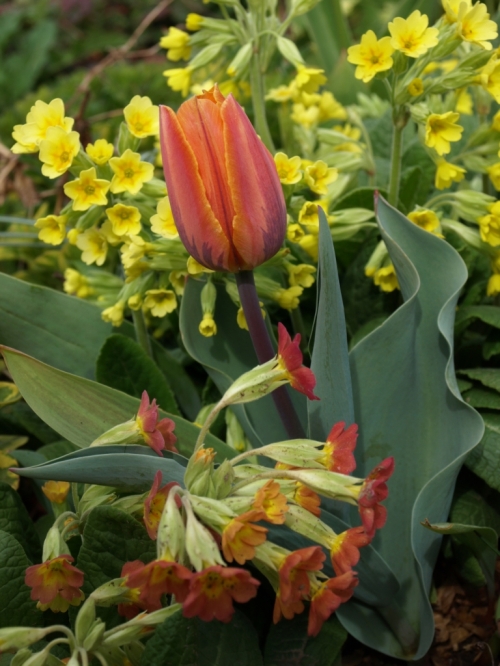
Snapped this serendipitous vignette of mud-spattered cowslips (Primula elatior) and Tulip ‘Princess Irene’ just before digging up all the red-blushed cowslips for division and potting up. Maybe you’ll see these at the Markets? April 17, 2016. Image: HFN
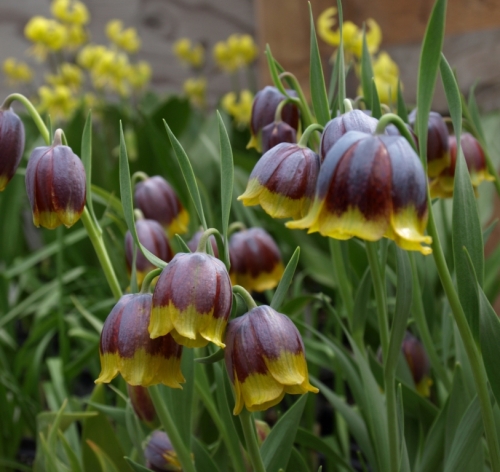
But you likely won’t see these, as by the time of the first Market they’ll already be starting to yellow and go dormant after their extra-early blooming this season. Fritillaria michailovsky and Erythronium ‘Pagoda’. Maybe next year! (Or we can bring them in by request, if you are okay with done-flowering plants which will shortly disappear for the summer.) April 17, 2016. Image: HFN
April 4, 2016
We are just back from a lightning-fast roadtrip to Vancouver, into which we packed visits to the UBC and Van Dusen Botanical Gardens, the Alpine Garden Club of BC spring show and plant sale, and visits to several of our favourite nurseries, including the absolutelty stellar Free Spirit Nursery in Langley. We highly recommend a visit to this beautifully-thought-out small nursery which is ridiculously full of excellent plants of great interest to the hardcore perennial plant gardener.
Home again in the Cariboo, and the trunk of the car is full of green treasures, mostly from Free Spirit and the Alpine Garden Club sale, and now the only problem will be where to squeeze them into the garden.
Here are a very few glimpses of what we saw in our weekend’s rambles.

Usually the cherry blossoms are in full flower this early in April, but the B.C. Coast has been experiencing the same ultra-early spring as we have here in the interior, so most of the single-flowered Japanese cherries in Van Dusen Garden were already past their prime. There were a few doubles still in fine form, like this beauty. Image: HFN
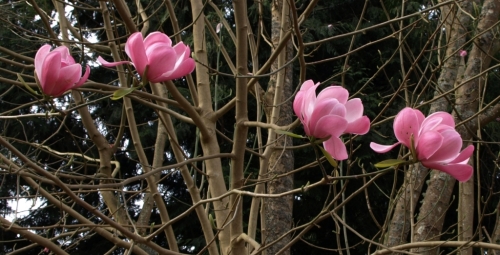
The same was true of many of the magnolias in both gardens – dropping blossoms fast. But there were still many to be enjoyed in their wonderfully exotic glory. Image: HFN

Wood Poppy – Stylophorum diphyllum. Native to Eastern North America. Van Dusen Garden, April 2, 2016. Image: HFN

Erythronium revolutum – Pink Fawn Lily. This is a lovely native wildflower which blooms in its natural habitat along the southern BC coast in April and May. Image: HFN
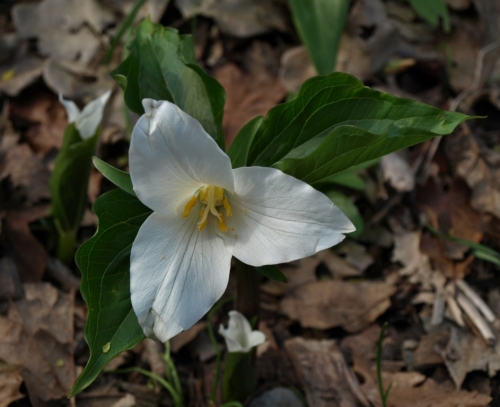
Trillium grandiflorum – White Trillium. An eastern Canadian wildflower, growing happily in the woodland habitat at Van Dusen, April 2, 2016. Image: HFN

No visit to Vancouver would be complete without a few minutes spent in admiration of one of the local exotics – the other-worldly Gunnera manicata, hailing from South America and a great favourite for coastal gardeners with a wet, warm microclimate. These things get huge – leaves to 4 feet across, mature height easily topping 10 feet. Not for us Interior gardeners to grow in our less-than-South-American climate, but fun to look at nontheless. Image: HFN

Here’s a sweet thing, Spring Starflower, Ipheion uniflorum. This is another South American, a bulbous plant originally from Argentina and Uruguay. Reported hardy to Zone 5, and tempting to consider for a trial one day, perhaps in a sun-baked rockery or dry border. Image: HFN
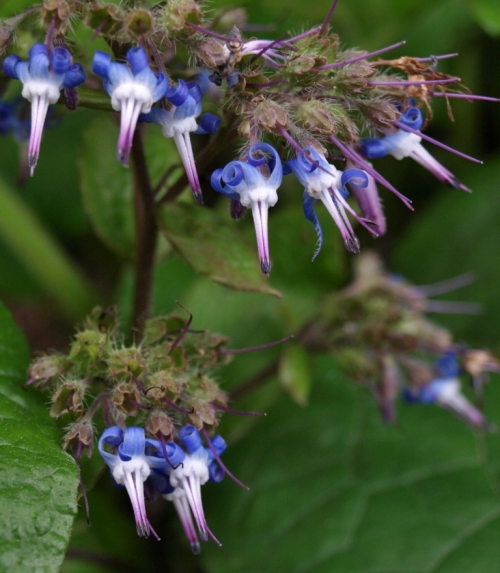
A close-up of one of my secret favourite flowers, the coarse-leaved Borage relative Trachystemon orientalis, originally hailing from Turkey and Bulgaria and region, and very much at home in the UBC garden, where it forms substantial colonies. The tiny blue starflowers with curled petals are strangely charming. I have nursed my own specimen through a number of harsh Cariboo winters, with the help of lots and lots of mulch, much to the bemusement of my fellow gardeners, who don’t quite get the appeal. Image: HFN
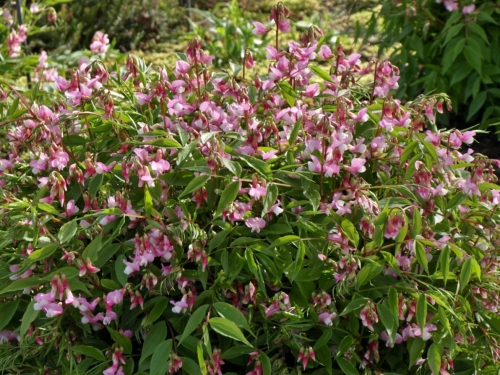
Spring Vetchling – Lathyrus vernus. This sweet little pea thrives in coastal gardens, and is currently on Hill Farm’s trial list for possible suitability for our region’s spring gardens. Image: HFN
March 22, 2016
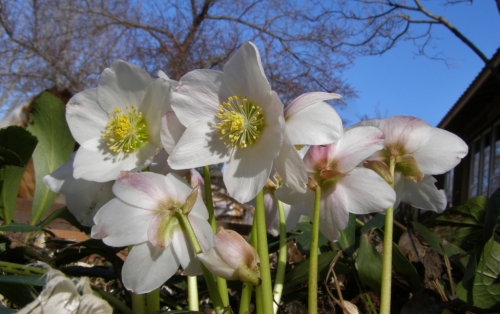
Christmas Rose – Helleborus niger. One of the hardiest of the Hellebores, and the best suited to our region. Buds form under the snow, to burst into bloom on the first warm days. Foliage is evergreen, so we often heap dry shavings over our plants in late fall after freeze-up to prevent excessive leaf loss in spring. Gardeners with reliable snow cover needn’t bother. Image: HFN
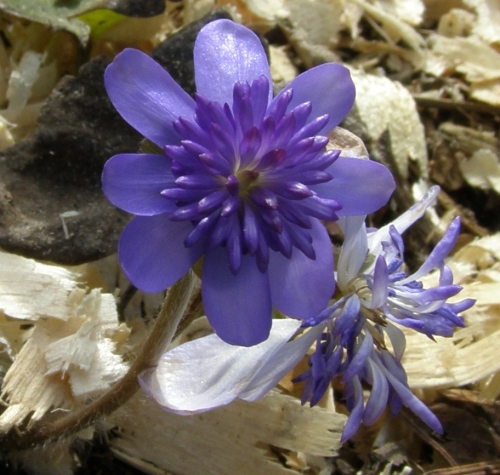
Hepatica transsilvanica ‘Elison Spence’ – a charming double cultivar which is slowly but surely settling in to our shady bit of woodland border. Image: HFN

Eranthis hyemalis – Winter Aconite. A tiny early bulb, a yellow “buttercup” poised on a foliar Elizabethan frill. Image: HFN
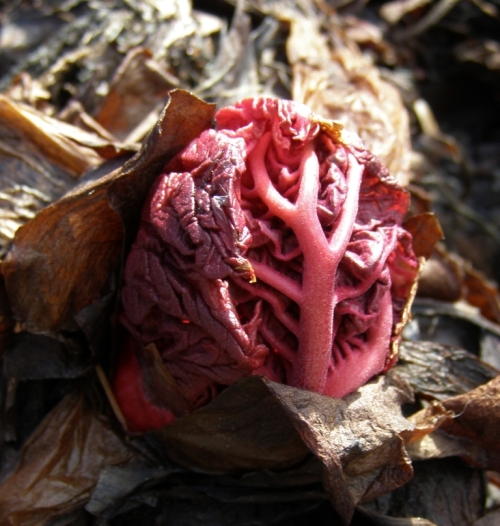
Bursting from its parent root, a leaf of ornamental rhubarb, Rheum palmatum var. tanguticum, is wonderfully brainlike. Image: HFN
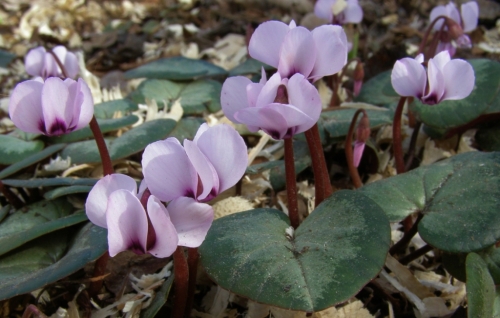
And of course we must include our treasured Cyclamen coum, which made it through another winter in fine form. Image: HFN
March 13, 2016
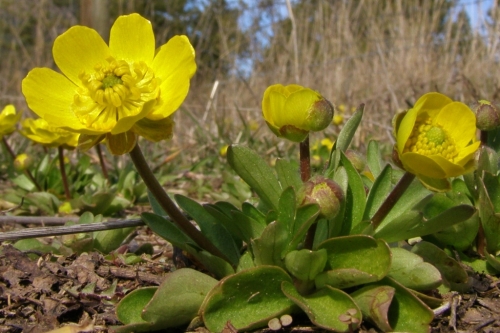
Sagebrush Buttercup – Ranunculus glaberrimus – The geese are back and the sagebrush buttercups are fragrantly blooming on our hillsides – we’re over the worst of winter for another year! Image: HFN

Hepatica nobilis – Our treasured clump of this earliest-blooming eastern North American wildflower is loaded with buds – a month of pure pleasure is at hand – the daily check-in to see the progress of the delicate blooms has started. Image: HFN

Galanthus sp. – Snowdrops – Jane has persisted in trying to establish these borderline-hardy European woodland bulbs in our garden, and her optimism appears to be rewarded with the little colonies under the ancient apple tree increasing every year. Image: HFN
March 3, 2016

Welcome Spring! It’s not quite here on the calendar, but the natural world is stirring and coming alive. Pussy willows – Salix sp. Image: HFN
February 24, 2016
It’s Quesnel Dance Festival week, which means it is time to plant the first tomato seeds! (Being long-time committee members of the Quesnel Festival of the Performing Arts, our winter and spring are marked by and scheduled around the various discipline festivals – a great way to keep our timing up to par, planting and growing wise.)
March 1st is usually the official “gotta get them going” date, but Jane and I hope to be heading to Vancouver on that day for a little indulgence of coastal spring botanizing (and, more to the point, to pick up a load of flower pots and lily bulbs), so we’re putting the first run of tomato seeds into the flats a few days early. We hope to see many green sprouts when we return, if the stay-behind folks remember to keep things watered. (Hint, hint, greenhouse sitters!)
Lots of interesting open-pollinated varieties this year, old favourites and some intriguing new things, like a number of Dwarf Tomato Project varieties. Look for a list mid-March, when we’ll be assessing germination and deciding on which ones and how many of each will be making it to Market.
Keen to get your tomatoes going this year? Come to the Quesnel Seedy Saturday, April 23, in the Atrium of the College of New Caledonia, where we will be set up with a table full of heirloom and heritage tomato starts, and maybe a few other seed-saver-friendly things.
February 21, 2016

Clematis ligusticifolia – Western White Clematis – Farwell Canyon, near Riske Creek, B.C. These are the female pistillate flowers. Image: HFN

Clematis ligusticifolia. The plants offered in spring 2016 are grown from seed collected from this Thompson River-side population, just south of Spences Bridge, B.C., in October 2015. Image: HFN
This year we are thrilled to offer a few wild things along with the definitely domesticated perennials which are our main stock in trade. Like this happily rampant native clematis, grown from seed collected in October near Spences Bridge, B.C.
Clematis ligusticifolia, Western White Clematis, is a vigorous, long-blooming climber which can reach 20 feet or more, but which takes pruning wonderfully well if you find this a bit daunting. Native to the southern third of B.C., it may be found scrambling along fences, through shrubs, and cascading down embankments in the arid river valleys of the Thompson and Fraser systems.
It is interesting botanically due to its dioecious nature: male (staminate) and female (pistillate) flowers are produced on separate plants, though occasionally they occur on the same one, just to keep things interesting. Female plants are loaded with fluffy seedheads in autumn, extending its season of attractiveness which starts with its first creamy bloom clusters in late May.
January 31, 2016
Under the snow there is a raised bed filled with pots of hardy bulbs, waiting for the spring thaw to burst out of the still-icy soil. It’s always a bit of a gamble to over-winter these this way, but if things go well here is a sample of some of the heritage treasures you may expect to find on our tables the first few markets.
- Allium azureum – Azure-Flowered Garlic
- Allium cepa var. viviparum – Walking Onion
- Allium christophii – Star-of-Persia
- Allium karataviense – ‘Ivory Queen’ Turkestan Onion
- Allium moly luteum – Golden Garlic
- Allium neopolitanum – Naples Garlic
- Camassia esculenta – Blue Camas
- Erythronium tuolumnense x californicum – ‘Pagoda’ Dog’s Tooth Violet
- Fritillaria acmopetala – Pointed-Petal Fritillary
- Fritillaria meleagris – Checker Lily
- Fritillaria michailovski – Michailovsky’s Fritillary
- Narcissus poeticus – Poet’s Narcissus
- Narcissus poeticis x tazetta – ‘Chinita’ Narcissus
- Tulipa pulchella – ‘Eastern Star’ Tulip
- Tulipa saxatillis – Candia Tulip
- Tulipa tarda – Tarda Tulip
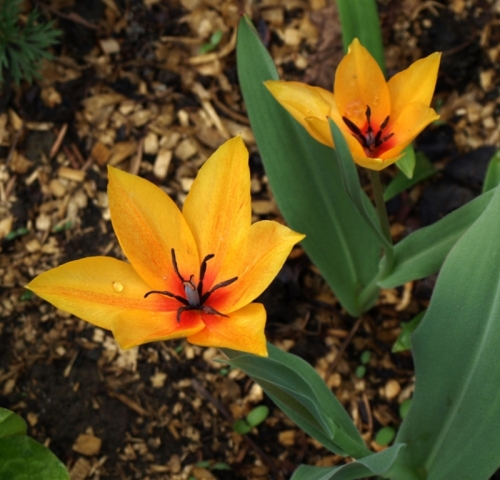
Tulipa praestans ‘Shogun’ – a lovely April-blooming Middle-Eastern species tulip at home in the Hill Farm garden. Perhaps we’ll have enough to share next year. Image: HFN
~~~~~~~~~~~~~~~~~~
January 19, 2016
Are you getting your seed orders in?
January 1, 2016
Happy New Year!
As if to celebrate the first day of 2016, a morning investigation of the flats of seeds under the grow lights shows an encouraging number of sprouts of ‘Munstead’ English lavender.
This early in the season every tiny seedling is welcomed with glee; soon they will be coming so thick and fast that the individuals will get somewhat lost in the crowd, but the miracle of the seed never really grows old, does it?
December 17, 2015
Getting close to the Winter Solstice – soon the days will be getting longer. In the meantime, keep dreaming those garden dreams. 🙂
Merry Christmas, everyone. (And inclusive appropriate greetings to those celebrating something else!)
November 18, 2015
Snow, snow, look at the snow.
It’s here. Darn. Well, at least it will be providing much-needed winter protection to all of our beloved perennials.
Here at Hill Farm, the first seed orders have started arriving from Europe, and the various seed exchange lists are starting to pop up with their long columns of mysterious Latin names and their tempting rarities from the furthest corners of the world. I consider myself a reasonably knowledgeable plant person, but these collections never fail to humble me, for the sheer number of plants-unknown-to-me listed on them. Lovely Google! A friend in need is the computer with its handy search engine, bless its humming electronic heart.
Meanwhile I am still musing over the want-to-grow lists, balancing the logistics of ordering a sensible balance of slightly-weird-plants-I-really-love to plants-with-a-chance-of-actually-being-saleable.
Like Globe Artichoke, and its lovely cousin Cardoon.
Technically perennial, neither of these stately thistles are winter hardy in the Cariboo. Those of us who have been seduced by their considerable charms are therefore committed to starting them early indoors, potting them up in the biggest containers one can find room for on the growing bench, and having them as sturdy as possible for the transplant to the open garden in mid-May.
The reward is fantastically architectural foliage – deep green for the artichoke and a lovely silver for the cardoon – and immense, neon-purple flowers in late summer.
Here is an autumn look at these boldly statuesque beauties.
November 3, 2015
Autumn Day
Lord, it is time. Let the great summer go,
Cast your long shadow on the sundials,
And over harvest fields let the winds blow.
Command to ripen the final fruits;
Grant them two more burning days,
Bring them to fullness, and press
A last sweetness into the heavy wine.
Who has no house, will not build now.
Who now is alone, will remain alone,
Will wake, read, write long letters,
And will the alleys up and down
Walk restlessly, in wind-blown fallen leaves.
Rainer Maria Rilke, 1902
October 26, 2015
It’s been an interesting autumn. Not really that warm, but we haven’t yet had a truly killing frost. This morning we had a short bout of snow, and when it melted a garden walk with the camera captured many things still in bloom, and some fine foliage effects.

Annual Flowering Tobacco, Nicotiana affinis. This self seeds in the bed where we planted it years ago. I believe it was variety ‘Daylight Sensation’ – tall, very fragrant at night, and lovely shades of purple.
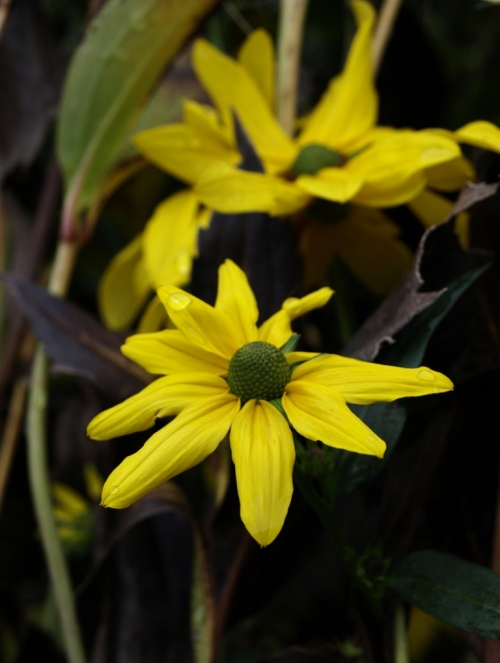
Rudbeckia nitida ‘Herbstsonne’. This stately prairie flower has now gone to seed, but lo and behold, a few fresh blooms have appeared in this year’s extended autumn.
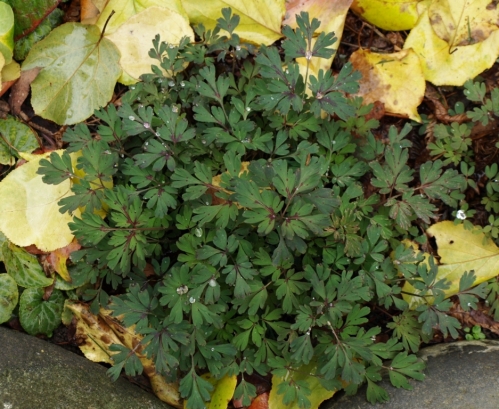
Lovely new foliage of the borderline-hardy ephemeral Corydalis flexuosus ‘Royal Purple’ has appeared after its summer rest. As soon as we have a hard freeze, this one and its tender companions will be covered with shovelfuls of fluffy wood shavings – a bit of extra insulation in case it gets truly cold before there is a good cover of snow.
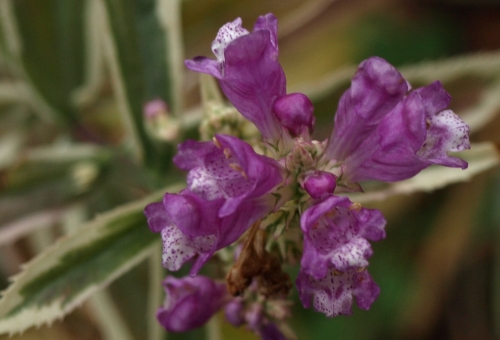
Variegated Obedient Plant – Physostegia virginiana ‘variegata’. A reliable fall-blooming favourite. Almost over, but still looking good.
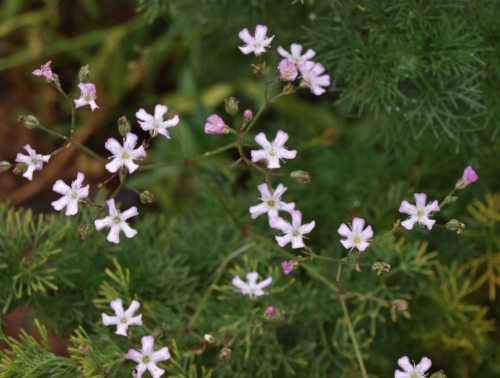
The delicately pink blooms of an ethereal Baby’s Breath – Gypsophila pacifica. In the background, fragrant Southernwood, Artemisia abrotanum.

Look at this wonderful perennial sunflower! Most are super-hardy – this one is soundly Zone 2 – but they generally bloom too late for us to enjoy them here in the Cariboo-Chilcotin. While visiting at the wonderful Laughing Swan Nursery in Kamloops, we were made aware of this species, Helianthus atrorubens ‘Gullick’s Variety’ – recommended as one of the earliest, and so it seems to be. It’s been blooming since early October, and it’s a truly lovely thing. If all goes well, watch for it in the nursery in a few years.

Here’s a real surprise! An unexpected flower on a summer-blooming hybrid clematis. Bad timing, but we’re enjoying it.
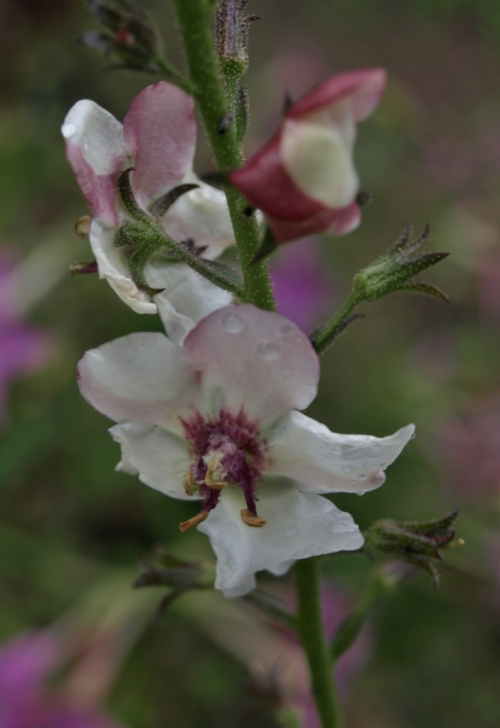
White Moth Mullein – Verbascum blattaria ‘albiflorum’. This beautiful little biennial blooms and blooms and blooms – it started in late July and look at it still going strong.
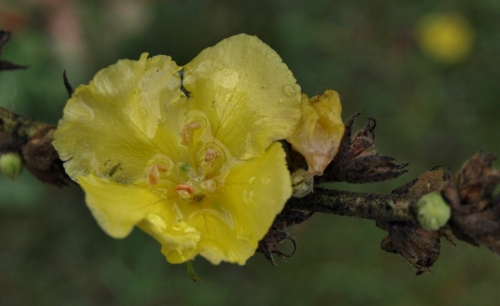
Ditto Moth Mullein’s larger relation, the also-biennial Verbascum thapsiforme. Month four of flowers. Getting a bit tired now, but still delicately beautiful, even when cupping melted snow water.
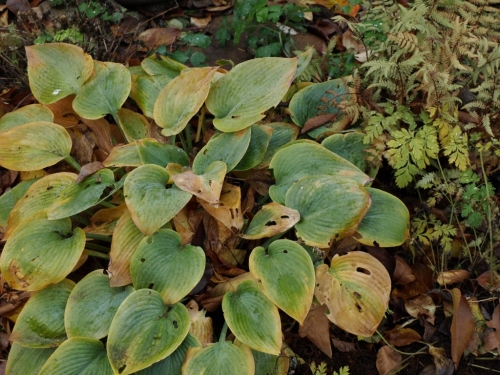
Foliage effects: an unknown hosta (we are very good at losing tags), and Painted Fern ‘Branford Beauty’ – Athyrium japonicum x filix-femina.

One of the Japanese Toad Lilies in our ever-increasing test planting of this late-bloomimg genus, Tricyrtis formosana x ‘Empress’.

Reliable and bee-friendly ‘Autumn Joy’ Sedum – Hylotelephium spectabile. Possibly overused in municipal plantings and fallen out of favour with trend-following gardeners, but I love mine for its excellent form and sturdy good looks from spring till snowfall.
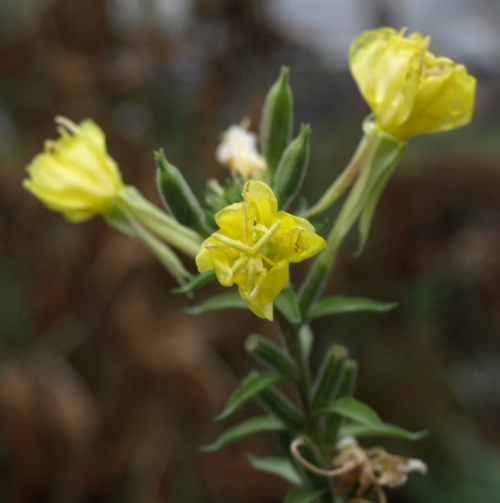
Getting rather tattered but still opening its lemony blooms every night is fragrant biennial Evening Primrose – Oenothera biennis.

The rompingly invasive Korean Bellflower, Campanula takesimana, is something of a garden pest, but I forgive it its wilful ways when I tip up a bell and see this charming arrangement of freckles and whiskers.

Russian Yellow Hollyhocks, Alcea rugosa, have naturally hybdridized in our garden with double A. rosea and figleafed single A. ficifolia to produce some interesting offspring, like this semi-double peachy thing. Another long-bloomer, starting in late June and going until the snow on ever-lengthening bloom stalks.
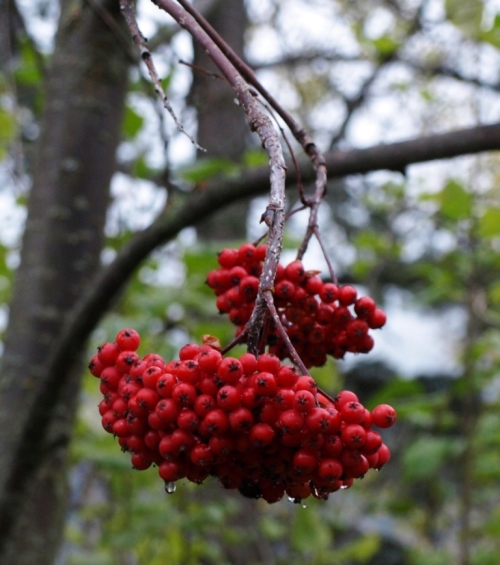
And here is a final image of autumn colour. The berries of American Mountain Ash, Sorbus americana, persist after the brightly coloured leaves have fallen. One day soon our resident flock of waxwings will descend and strip the tree bare, but today the clusters still hang in scarlet perfection.
October 3, 2015
Guess fall is really here. Leaves are yellow, geese are heading south, more than a nip of frost in the air. But the garden continues to delight, albeit in a slightly melancholy way.

Beautiful Poppy Mallow, Callirhoe involucrata, lights up the dying garden with its glowing crimson blooms. Hill Farm, Macalister, B.C. October 1, 2015.
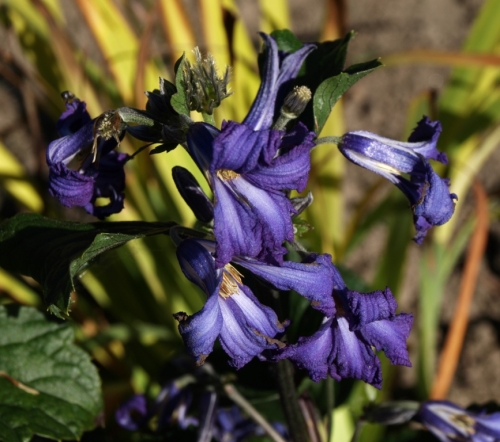
Clematis heracleifolia, a shrubby herbaceous clematis, has the most unexpected spicy-clove-scented flowers. This one is a late-season bloomer, getting started in late August and continuing through the first frosts. Hill Farm, Macalister, B.C. October 1, 2015.

Clematis serratifolia, a vigorous twiner with delicate sulphur-yellow flowers, is just finishing up its bloom stage. As the petals drop, the silken seedheads expand. Hill Farm, Macalister, B.C. October 1, 2015.
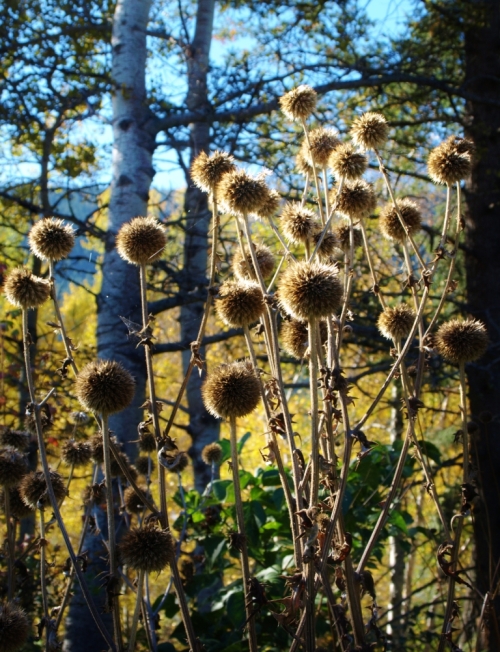
The seedheads of the Giant Globe Thistle, Echinops sphaerocephalus, have a certain architectural appeal, though it’s really time to chop them down to prevent a huge crop of little fuzzy seedlings in the spring. Hill Farm, Macalister, B.C. October 1, 2015.

Drumroll, please! This pretty thing has got to be the longest-blooming perennial I’ve yet to have the joy to grow. It started in May, kept going through spring and summer, had a brief few weeks of looking like it was over, and then pushed out another abundant crop of blooms. Always tidy looking, with excellent foliage, this one isn’t showy but it is certainly pretty in a quiet, steadfast way. Clump forming, so I won’t risk losing it by division, but I have my fingers crossed that it will have some seedlings popping up around it in the spring. Corydalis lutea, syn. Pseudofumaria lutea. Nice plant. Hill Farm, Macalister, B.C. October 1, 2015.
September 6, 2015
Has it been three months since my last post?! I do apologize.
Such a busy summer this has been. We have been mostly staying very close to home, diligently working on our not-quite-finished house (this is year 23, so I guess “long term project” would be an apt designation) and even doing a bit of preparation work for the projected on-farm nursery sales area. We’ve cleared the site and drawn up the plans, but have had to set this job aside to deal with more pressing affairs, like replacing our house roof. The roof is now on, so nursery infrastructure projects are next, including that new propagation house I’ve been talking about for years. We’ve put our request in for a long, mild autumn; we’ll see how that goes!
We did travel a bit, generally at breakneck speed with deadlines to meet, but there was some botanizing, too. I’ll be sharing pictures in this space and in the Plant Portraits when snow drives me indoors later in the season.
We’ll be back at the Farmers’ Markets with plants in 2016. Lots of good things are in the works, including a selection of interesting ornamental alliums, and various divisions from the holding beds in what used to be my vegetable garden. One nice thing about this sabbatical is that some of our prize personal garden plants have gotten to the point where they may be divided for sale. Keep an eye out for the larger sized pots at Market next year, as there will be some very good things showing up there.
In the meantime, a few glimpses of the August Hill Farm garden.

2015 has been a wonderful year for lilies. I am very fond of the old fashioned turk’s cap and tiger lilies, and this one, ‘Citrinum’, is one of the best. Lemon yellow, generously freckled, and blooms and blooms and blooms – check out the number of spent flowers lower on the stalk.

The tall summer phlox, Phlox paniculata, are old-fashioned flowers which are perhaps not used as often as they could be for mid to late summer colour. Here is ‘Franz Schubert’, 4 feet tall and loaded with heads of fragrant, soft lilac blooms in August.
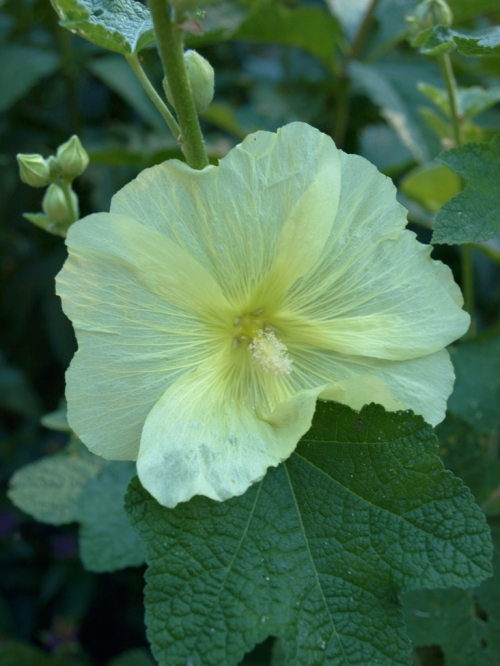
Perennial Russian Hollyhock, Alcea rugosa. This reliable beauty has spread itself throughout our garden, and has proven itself one of the most stalwart of this sometimes fickle genus. Generally pale sulphur yellow, it sometimes produces peach-pink or blush-white blooms, obviously from cross pollination with the double English hollyhocks, the biennial Alcea rosea, which we often grow as well.
June 11, 2015
Such a busy spring! Finally managing to post a few pictures. These are all from May. Hope your gardens are all growing well!

Mid-May 2015 in the Hill Farm garden. The purple globes of ‘Purple Sensation” ornamental onion (Allium aflatunense)and the ferny foliage and lacy white flowers of sweet cicely (Myrrhis odorata) make a nice combination which looks good for weeks.

Wonderful year for columbines! Japanese fan columbine, Aquilegia flabellata, has hybridized to produce some interesting forms, such as this white flushed with streaks of rosy pink.

Corydalis lutea (now reclassified as Pseudofumaria lutea) makes a lush clump of blue green foliage, topped by clusters of intricate yellow flowers. This one blooms and blooms and blooms. Hoping to be able to share it through the nursery in the next year or two.

Wild ginger, Asarum caudatum, is native to Western Canada, and is a lovely and trouble-free woodland garden plant. The flowers are hidden under the leaves, being pollinated by ground beetles and tiny flies, and can only be seen if you are prepared to get down close and carefully lift up the glossy leaves. The plant does smell warmly spicy, hence the common name. This is subspecies A. c. album. The usual colour of the blooms is a warm reddish-brown.

The European tall woodland violet, Viola elatior, has naturalized nicely in the shady parts of the garden. Pale purple and white flowers are produced in great profusion in May.
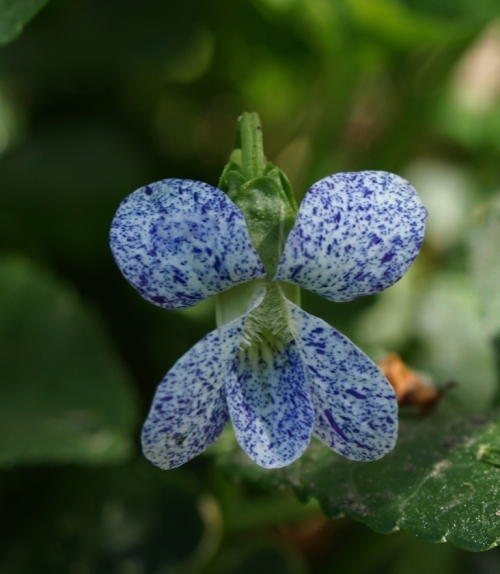
And then of course there are the many lovely colour variations of self-seeding wooly violets, Viola sororia. Extra charming is the cultivar ‘Freckles’.
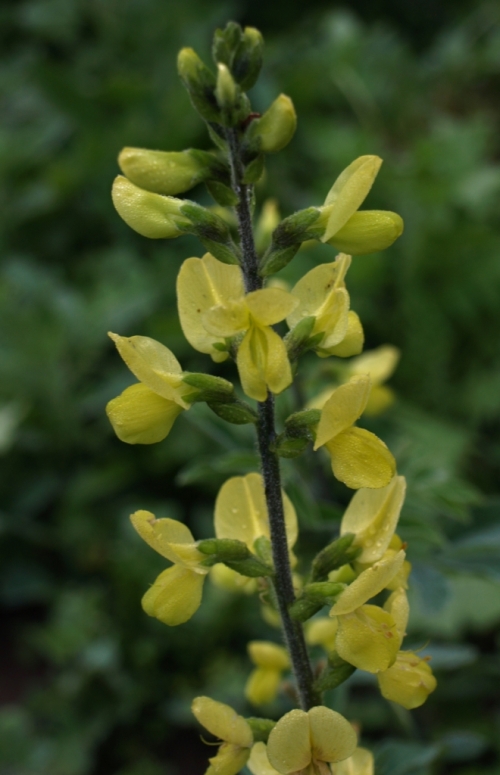
Sulphur-yellow pea-flowers of Siberian lupine, Thermposis lanceolata, bloom in mid May. New growth and stems are flushed rich indigo.

Not in the Hill Farm garden, but in West Quesnel at the little A-frame Lutheran Church is this zone-pushing Star Magnolia (Magnolia stellata) tree. The winter of 2014-15 was obviously mild enough to allow for this stellar show.
April 4, 2015
Our relatively mild winter and eventual accumulation of a substantial snow pack has resulted in excellent winter survival of some borderline-hardy plants. So far, with much active growth being observed, zero losses! A few glimpses of what is up and blooming, below.
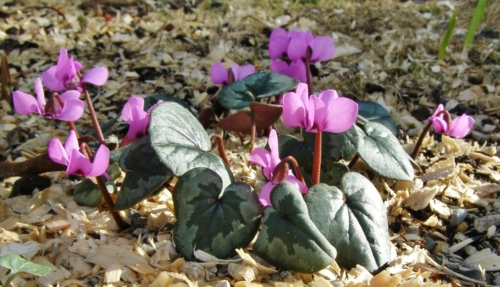
Tiny Cyclamen coum, only a few inches tall, is thrilling us with its vivid magenta blooms. Native to the eastern Mediterranean and Black Sea regions, it is surprisingly hardy – rated at Zone 4/5, and apparently quite successful in some Calgary gardens, which is tremendously encouraging – though we hedged our bets somewhat by heaping wood shavings over the plants when -20C hit us last fall before any protective snow fell. Some species Cyclamen are very fragrant, and we were hoping that C. coum would be one of them, and there is indeed an elusive sweetness emanating from the blooms when one gets down close to flower level. This specimen was acquired from the UBC Botanical Garden in 2014 and planted in the summer with fingers crossed for its survival, and its 2015 emergence and blooming means that we’ll be looking for a few more plants in our coastal nursery travels this spring. We have high hopes that we can establish this delicate beauty in our own Cariboo garden on a long-term basis.
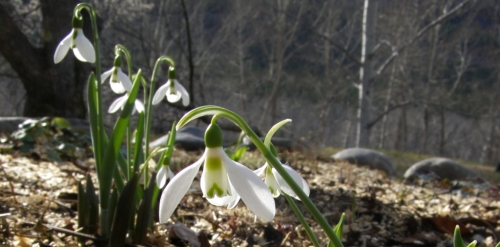
Galanthus nivalis – Snowdrops. We are at the edge of the hardiness range for these pretty bulbs, but our little colonies are slowly increasing. These and the tiny snow crocuses are the first flowers to appear in the garden every spring.
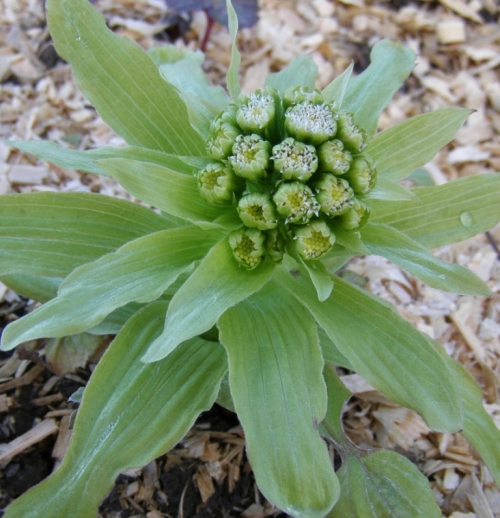
Petasites japonicus – Japanese Butterbur – a sister to our native Coltsfoot species. The flower spikes appear before the foliage, and though nondescript in appearance are delicately fragrant.
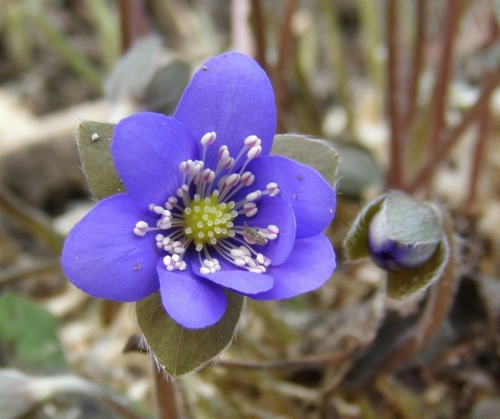
Hepatica nobilis – the gorgeous Liverleaf is native to eastern North America, and is our most eagerly awaited early spring flower. Delicate flower stalks emerge from the tattered clumps of last year’s shrivelled foliage, and are extremely beautiful for their few weeks of bloom in earliest spring. Very hardy, and should be much more widely grown in our area – a situation we hope to remedy by offering this plant in future, once we find a good source for healthy young plants. We’ve discovered that these are very slow to propagate on even a modest commercial scale, and the staggering prices for some of the more unusual cultivars are not at all surprising. However, H. nobilis is relatively fast to size up and very easy to grow, and is an excellent variety to start with. If you see this one in your travels, do give it a try.
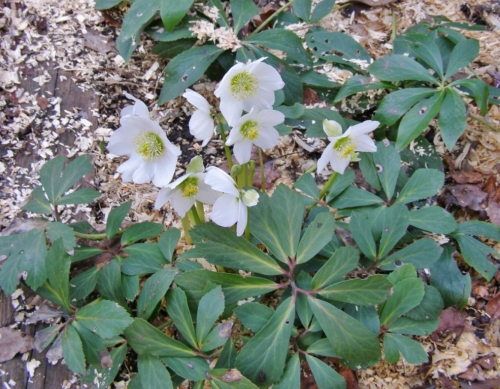
Helleborus niger – Christmas Rose aka Snow Rose. The very best species of this lovely semi-evergreen genus for our region, though we also persist in coddling along the larger and more showy (but much fussier) Helleborus orientalis, with mixed results. H. niger is a slightly more modest plant, reaching 6 to 10 inches tall at most, but its large pure white blooms and intricate central stamens are absolutely gorgeous. Another early spring bloomer, with buds forming under the snow.
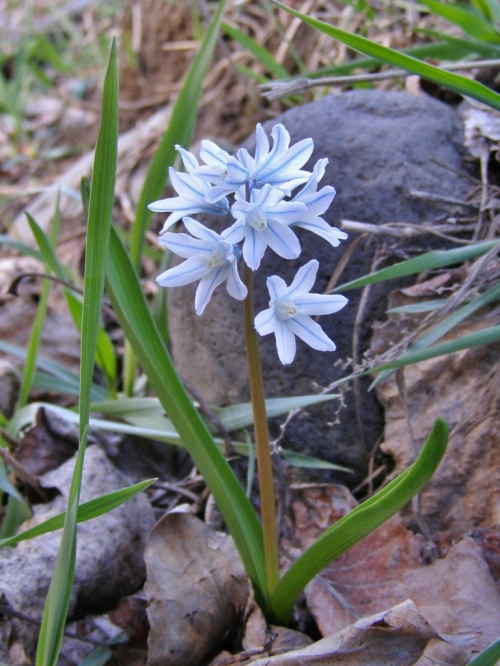
Puschkinia libanotica – Striped Squill. This delicate-looking Russian bulb is extremely hardy, and takes any amount of rough treatment, spreading itself throughout the garden quietly and most beautifully, to bloom in earliest spring. Here is one gone feral (as it were) discovered blooming on a grassy slope outside of the garden proper.

Ranunculus glaberrimus – Sagebrush Buttercup. Here is our earliest wildflower, which literally lights up the grassy hillsides along the Fraser River corridor, blooming profusely as soon as the snow retreats. Only an inch or two tall, but exceedingly lovely, and very fragrant en masse. When these start to bloom, we know that spring is here for good, even though it may still snow and freeze and bluster for the next few months.
March 13, 2015
Just a brief note to say that there are signs of life in the seed pots left to stratify in the unheated greenhouse. Centaurea macrocephala and C. dealbata are up in great abundance, Balsamorrhiza hookeri and B. sagittata are well on their way as well, and a tiny sprout is evident in the Dryas octopetala ssp. hookeriana pot. Swelling seeds in many other pots are a sign that something is very much happening; not too long now before we’ll see more tiny seedlings, and before we know it we’ll be back at the transplanting table popping things into ever-larger pots!
It’s been lovely and warm the past few days, and the wild Sagebrush buttercups – Ranunculus glaberrimus – are showing a few early blooms on our sunniest hillside, but the temperature is predicted to fall next week, with a dismal -7°C shown for a possible low one night.
Not unexpected, but just the tiniest bit discouraging. Yesterday we loosened the burlap wrappings on the several “iffy” bamboo plants which Jane insists on nursing along in our rather unsuitable climate; her last year’s experimental planting of a gingko tree awaits a similar unveiling once the weather stabilizes just a bit more.
As the snow recedes we find ourselves hopefully poking about in the borders and exclaiming in delight at the burgeoning basal shoots of our most dependable perennials. Columbines, daylilies, and sedums are among the first to show definite signs of life each year, and we are having a hard time refraining from digging about around their slower neighbours to quest for shoots. We know they will come up in time; we remind ourselves to have faith and not to be too impatient.
Happy almost-spring, fellow gardeners!
January 28, 2015
Only 7 more weeks until the official start of spring. Not too long now!

Witch Hazel – February 2014 – Vancouver, B.C. – I’ve always wondered if it would grow for us up here in the Cariboo – so weirdly beautiful, and so wonderfully fragrant.
~~~~~~~~~~~~~~~~~~~~~~~~~~~~~~~~
January 27, 2015
More seeds were planted yesterday and left out in the cold to stratify. If all goes well, we will see some of these sprouting in spring and early summer, and with luck making it to market in 2016. We’ve been drawn to alpines more and more these past few years, and have noticed that our seed purchases reflect that interest, though we don’t (yet) have a proper rock garden of our own. Something which we hope to remedy in future, having a sunny hillside which would be perfect for terracing and planting. (We really need a young, strong, keen intern – or two!)
- Achillea clavennae (Italian Alps wild collection)
- Anemone narcissiflora
- Anemone occidentalis
- Anthyllis montana
- Anthyllis vulneraria rubra
- Aquilegia longissima
- Asclepias incarnata
- Asclepias tuberosa
- Aster azureus
- Balsamorrhiza hookeri
- Bupleurum aureum
- Campanula persicifolia Double White
- Centaurea dealbata
- Centaurea macrocephala
- Codonopsis clematidea
- Codonopsis lanceolata
- Corydalis cheilanthifolia
- Delosperma x cooperi Table Mountain
- Dianthus pavonius
- Dianthus plumarius v. lumnitzeri
- Dracocephalum ruyschianum Blue Dragon
- Dryas integrifolia (ex. Greenland – light yellow)
- Dryas octopetala 106
- Dryas octopetala ssp hookeriana (Mt Elbert collection)
- Echinacea pallida
- Epilobium fleischeri
- Epilobium latifolium
- Eryngium yuccifolium
- Gentiana cruciata
- Gentiana cruciata
- Gentiana lutea
- Gentiana sceptrum
- Geranium argenteum
- Kitaibelia vitifolia
- Ligularia sibirica
- Lychnis chalcedonica Burning Love
- Mentzelia lindleyi
- Mertensia sibirica (pterocarpa )
- Mimulus lewisii
- Nepeta nuda
- Penstemon digitalis
- Penstemon eatonii
- Penstemon nitidus
- Penstemon palmeri
- Penstemon strictus
- Physochlaina orientalis
- Platycodon grandiflorus Hakone Dble Blue
- Platycodon grandiflorus Mariesii
- Primula viallii
- Sedum acre Oktoberfest
- Sedum fosterianum Oracle
- Sedum hispanicum
- Sedum reflexum Blue Spruce
- Soldanella montana
- Synthyris missurica v. stellata
- Tanacetum huronense
- Veronicastrum virginicum
- Viola cornuta Bowles’ Black
- Viola odorata Queen Charlotte
January 2, 2015
HAPPY NEW YEAR!
The equinox is past, and the days are already getting noticeably longer. Seed catalogues are arriving in the mail, and the focus, despite cold, snow, wind, freezing rain and all sorts of weird winter weather, is definitely on spring.
We are taking advantage of our extended nursery sabbatical to indulge in some eclectic plant exploration and propagation. Orders from specialty seed houses and various rare seed exchanges are eagerly anticipated, and should be arriving soon. We’ve already planted an interesting selection of things which need stratification to germinate, and their pots are tidily tucked away out in the cold outdoors, to freeze and thaw and work their way through their germination-inhibiting processes to (hopefully!) reward us with seedlings in spring.
If all goes well, at least a few of these species will be on the nursery tables in spring of 2016:
- Aconitum lamarckiana
- Adlumia fungosa
- Amsonia illustris
- Anemone multifida
- Aruncus aethusifolius
- Aruncus dioicus
- Ascelpias tuberosa
- Balsamorrhiza sagittata
- Baptisia australis
- Belamcanda chinensis
- Campanula latifolia macrantha
- Chasmanthium latifolium
- Chiastophyllum oppositifolium
- Dracocephalum tanguticum
- Gaura longiflora
- Gentiana triflora
- Geranium pratense – dark leaf dwarf
- Gillenia trifoliate
- Glaucium flavum
- Hemerocallis exaltata
- Lathyrus vernus
- Lychnis flos-jovis
- Mentzelia decapetala
- Mufkdenia (Aceriphyllum) rossii
- Myrrhis odorata
- Nepeta subsessilis
- Penstemon barbatus ‘Iron Maiden’
- Penstemon calycosus
- Penstemon cyananthus
- Penstemon tubaeflorus
- Polygonum orientale – variegated
- Pontechium maculatum
- Potentilla hyparcticum
- Potentilla nepalensis ‘Helen Jane’
- Prunella laciniata
- Pseudolysimachion kiusiana
- Rhodiola seminovii
- Scabiosa japonica
- Scutellaria altissima
- Scutellaria sevanensis
- Silene regia
- Spharealcea grossularifolia
- Symplocarpus foetidus
- Tanacetum parthenium
- Telekia speciosa
- Thalictrum rochebrunianum
- Valeriana – NOID – European alpine
- Verbena hastate, blue and pink
- Veronica gentianoides
- Wulfenia carinthiaca
November 30, 2014
Things to Remember
The buttercups in May,
The wild rose on the spray,
The poppy in the hay,
The primrose in the dell,
The freckled foxglove bell,
The honeysuckle’s smell
Are things I would remember
When cheerless, raw November
Makes room for dark December.
James Reeves
November 6, 2014
This extended fall has allowed a few late bloomers to unfold their flowers – not always the case as many years hard freezes have killed the buds by now.
The Japanese Toad Lily, Tricyrtis hirta, seldom blooms in the Cariboo, though the plants are fairly hardy. We are trialling an earlier blooming variety, Tricyrtis latifolia, and hope to be able to report on its adaptability for our region, as these are wonderful flowers, quite unique in their intricate detail and lovely markings.
Plume Poppy, Macleaya cordata, is hardy and thrives in our region. The seed heads turn to a warm copper in late autumn, and the foliage shows subtle pale yellow tones as it slowly dies back.
Autumn Monkshood, Aconitum carmichaellii ‘arendsii’, is very late blooming, but is worth keeping in the garden for the richly coloured bloom spikes it produces in long autumns.
“November”
Excerpts from
The Shepherd’s Calendar
by John Clare, 1827
The landscape sleeps in mist from morn till noon;
And, if the sun looks through, ’tis with a face
Beamless and pale and round, as if the moon,
When done the journey of her nightly race,
Had found him sleeping, and supplied his place.
…
Thus wears the month along, in checker’d moods,
Sunshine and shadows, tempests loud, and calms;
One hour dies silent o’er the sleepy woods,
The next wakes loud with unexpected storms;
A dreary nakedness the field deforms –
…
At length the stir of rural labour’s still,
And Industry her care awhile forgoes;
When Winter comes in earnest to fulfil
His yearly task, at bleak November’s close,
And stops the plough, and hides the field in snows;
When frost locks up the stream in chill delay,
And mellows on the hedge the jetty sloes,
For little birds – then Toil hath time for play…
*****
October 13, 2014
Happy Thanksgiving, everyone!
We hope everyone is enjoying the beauties of the season both in your gardens and as you go about your daily rounds.
What a glorious autumn for foliage colour this has been! That early frost in September seems to have triggered an outstanding display this year.
We are still finding ripening tomatoes in the little garden hoophouse, a nice surprise after our panic-harvest some weeks ago on a very frosty evening. We almost pulled the plants up the next day, but in this case our neglect of that chore has rewarded us with a final crop of delectable vine-ripened fruit. Much too soon we will be dependent upon supermarket offerings; we often forgo eating tomatoes at all once ours are all finished – usually sometime in December, with the last of the green ones ripening slowly in their newspaper-lined box in the porch – but it is such a long time to wait until the next year’s harvest that we occasionally break down and buy the best looking of the imported ones we can find. Though better than nothing, they certainly are a far cry from the “real thing” we are now enjoying…
We are not quite caught up on garden chores, as we’ve had so many calls upon our time this month. Getting close, though, as long as the snow holds off another few weeks.
One reason for the garden neglect was a recent holiday trip, which took us very briefly down into the Monashees and Kootenays, and then in a more leisurely fashion out to Vancouver Island.
Botanizing in autumn is always slightly melancholy – one sees how much one has missed – but there are some rewards. While down among the mountains, we stopped briefly beside the lake at New Denver to take a break from driving, and were thrilled to discover a lovely Japanese garden there, a memorial project commemorating the many Japanese-Canadians interned there during World War II. You will find a few more pictures on the 2014 This & That page. Very worthy of a stop if you are ever in this area.
September 11, 2014
Summer seems to have slid past while we were looking the other way, bemused perhaps by the constant haze of forest fire smoke which has been hanging over the Cariboo for the better part of the past few months.
Now we’re having frosty nights, the garden is looking more than a little tired, and foliage is showing flushes of autumnal colour as herbaceous plants and deciduous trees and shrubs start to prepare for their winter rest.
The year went a bit sideways for us, with the sudden passing of an elderly family member several months ago. Impossible to plan for such things; no matter how “ready” one thinks one is there is a certain amount of emotional upheaval, not to mention all of the dealing-with-business such events inevitably trigger.
We’re therefore already looking forward to next spring, while soldiering on and coping with things outside of “the plan” as they come up; we’re behind in quite a few of our home projects, but we are taking care of some other things, so progress of a sort is taking place – and at this point in the year we are quite grateful for even the smallest item ticked off the very long list! (A feeling I’m sure many of you can relate to. 🙂 )
I’m hoping to post some more Plant Portraits this fall and winter, so there should be a few new things showing up here occasionally. Planning for our next nursery season is always ongoing, so even if there doesn’t seem to be much action in that area of our lives right now, rest assured that the wheels are quietly turning. We’ll be heading out soon on an autumn road trip to the coast, and have several plant-related stops planned, so perhaps we’ll have some photos to share in the next few weeks.
In the meantime, stay warm on these chilly nights, and enjoy the late flowers and the glorious autumn foliage colour which will be seeing out the season. Here’s hoping for at least another month or so of sunny days and productive and enjoyable garden time!
July 23, 2014
It’s high summer, and green thoughts in the green shade are the order of the day. Unless, of course, one is out on a tractor making hay. Which we aren’t, this particular year, making for a rather disconnected feeling, as we watch from the sidelines this time round.
The Hill Farmers’ sabbatical year is progressing nicely. We’ve been criss-crossing the province looking at gardens and wildflowers, and have discovered an encouraging number of intriguing plants which we hope to grow in the future. We are hugely enjoying the rare opportunity (for nursery operators) to travel to others’ gardens in the spring and summer. Such inspiration – so many creative gardeners!
Again, sincere apologies for the “no plants in 2014” situation. So many people have mentioned that they miss us, and we do feel rather guilty for skipping out on our fellow gardeners. But we’re hoping that the end (more plants! greater selection!) will justify the means.
We have reluctantly (but probably wisely) decided to take 2015 off as well, in order to get things even more improved at the farm nursery-infrastructure-wise, in order to face the next twenty years with greater organization and efficiency.
In the past we’ve always built-as-needed, and usually in a great hurry with whatever materials we have at hand. (Thank goodness for Linde Brothers Sawmill and their marvelous “farmers’ bundles” of odds and ends – most of the nursery structures have been put together from these, making it very much a Cariboo-originated enterprise in a most elemental way.)
That won’t change – we are still building with local materials as much as possible – but we are now putting some of those years of “make do” experience to good use in our plans for the next phase of the nursery. We’re staying tiny; still a family-run micro-nursery; but the efficiencies we’re considering should help us to increase production to a certain extent even as we face losing part of the homegrown workforce as the children head off into the world.
Keep an eye on the website, as we hope to be sharing news and pictures of our travels and the evolution of the greenhouses and on-farm nursery area. We’ll be posting pictures and comments on this page, on the This & That 2014 page, and adding expanded entries to the Plant Portraits as time allows.
July 23, 2014
A Monday morning walk around the Hill Farm garden found these beautiful things.
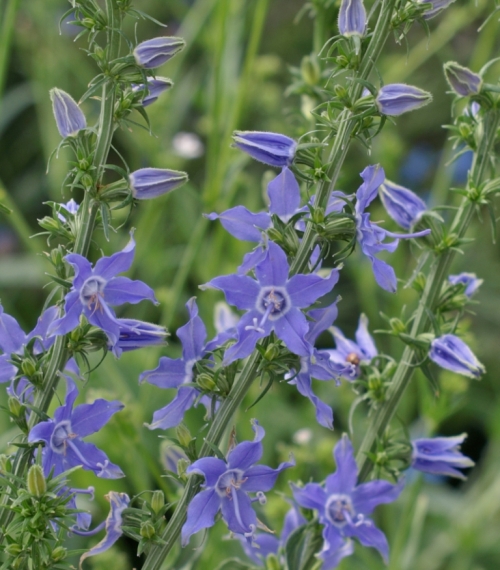
Campanulastrum americanum – American Bellflower – this gorgeous Eastern North American biennial bellflower is absolutely loaded with flowers right now. Definitely a keeper! Hill Farm, July 21, 2014

Must have been the mild winter – insect populations are thriving this year. Like this fellow – green grasshopper on Fernleaf Yarrow (Achillea filipendulina). Hill Farm, July 21, 2014
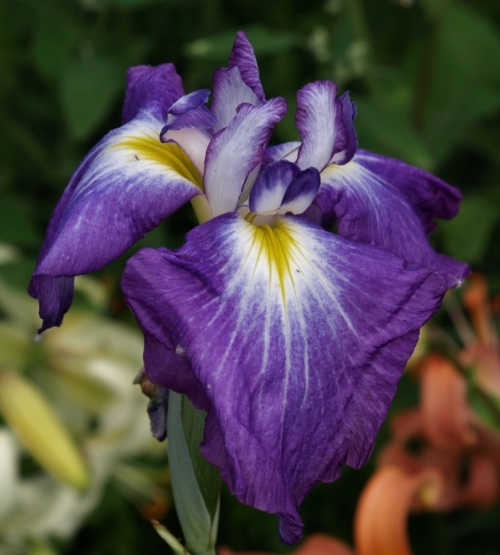
Japanese Iris – name unknown. Huge blooms – very exotic! A bit iffy in the Cariboo, but this one made it through the winter to reward us for our gamble. Hill Farm, July 21, 2014

More bees on Scabiosa cousin Cephalaria tchihatchewii – 10 feet tall and alive with humming visitors. Hill Farm, July 21, 2014

One of the foliage stars of the garden, and another giant plant. Plume Poppy, Macleaya cordata, routinely tops 10 feet. It blooms late July onwards with lavish sprays of tiny coral and sulphur flowers, but the foliage is perhaps even more superb. Hill Farm, July 21, 2014

English wildflower Nettle-Leaf Bellflower, Campanula trachelium, is rarely grown in our North American gardens, but it is a lovely, well-behaved plant. Shades of dark to pale purple; the pretty out-facing bells are intriguingly whiskered inside. Hill Farm, July 21, 2014
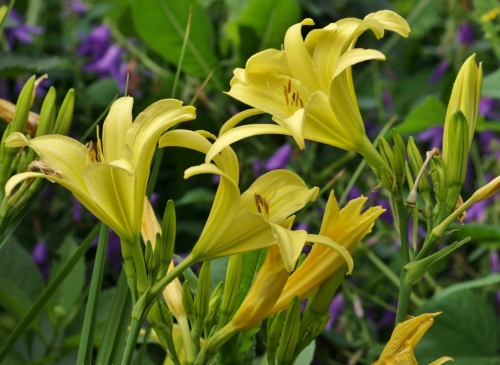
This older Daylily, Hemerocallis x ‘Tetrina’s Daughter’, is one of my favourites because of its generous flowering, large size, and wonderful fragrance. Keep an eye out at the nursery in 2016, as I may be dividing it next year and a few pots may show up for sale. Great plant, very similar to my other heritage Daylily favourite ‘Hyperion’, also tall, pale yellow, floriferous and very fragrant. Hill Farm, July 21, 2014
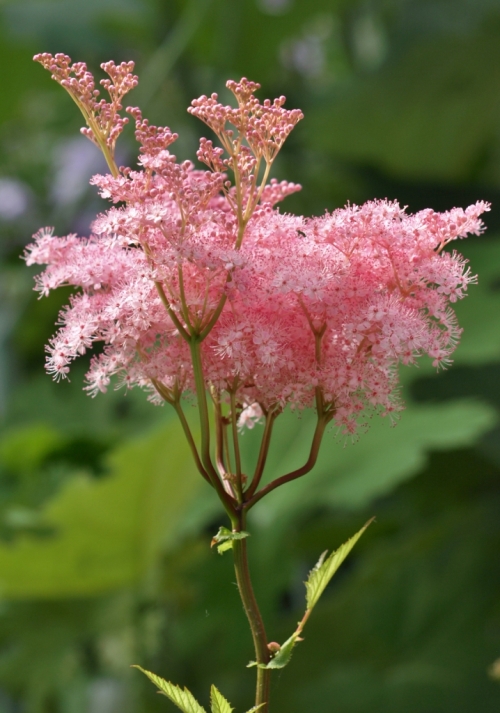
Ridiculously pink Queen-of-the-Prairie, Filipendula rubra venusta, looks rather like fluffy cotton candy. So sweet! Hill Farm, July 21, 2014
July 13, 2014
Yesterday was the Williams Lake Garden Tour, and Jane and Barb were thrilled to be able to take part. We didn’t get to all of the gardens, but the ones we did visit were absolutely divine.
Congratulations to the organizers for a most well-thought-out tour, and a huge “Thank You!” to the gardeners who welcomed us into their private spaces. Absolutely lovely, in so many different ways.
We took a few pictures, of course, and here is a very tiny sampling of glimpses of Williams Lake gardens in the summer of 2014.
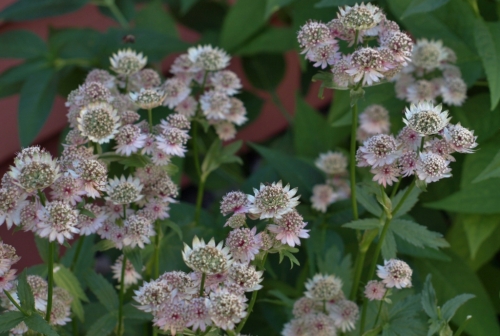
Astrantia in the shade, in Kim Herdman and Michael Rawluk’s incredibly diverse “collector’s garden”.
June 15, 2014

Mountain Ladyslipper Orchid – Cypripedium montanum – June 14, 2014, Goodsir Nature Park, Salmon Valley, B.C.
Goodsir Nature Park, Salmon Valley, B.C.
A rewarding experience yesterday, when we found ourselves at the wonderful private nature reserve of naturalist Jim Good, 20 miles north of Prince George. Over the past 25 years Jim and his family have cut trails through 160 acres of bush, installed hundreds of handmade signs identifying the native flora and points of interest, planted trees from all over Canada to create an informal arboretum, and have set up picnic tables and camping spots which the public are invited to use free of charge (though a small donation is requested, if the visitor feels that he or she has “gained something from their visit.”)
Definitely a labour of love, from the botany museum at the park entrance to the informative, humorous and inspirational signs throughout the park which serve to guide, educate and amuse the visitor, and, above all, for the wonderful assortment of plants collected and cherished by a true nature lover.
We spent a peaceful afternoon wandering the trails and photographing the wildflowers; allow yourself at least 2 hours for a visit. There are 3 kilometres of roughish but well-groomed trails, and if you stop to read every sign you can easily spend a whole day! The museum is another unexpected marvel, packed full of Jim’s personal photographs and observations on hundreds (thousands?) of Canadian plants.
Goodsir Nature Park, Prince George, B.C. brochure
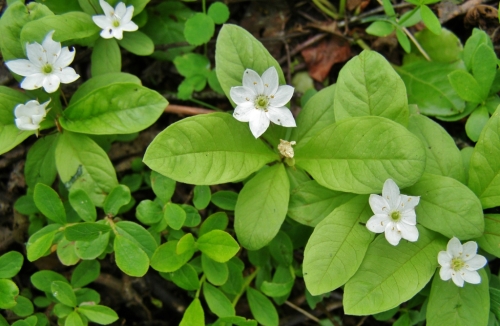
The ubiquitous lupines and Indian paintbrush were just coming into bloom, but we were pleased to discover a number of less conspicuous floral stars, such as these tiny Trientalis arctica, Northern Starflower. June 14, 2014.
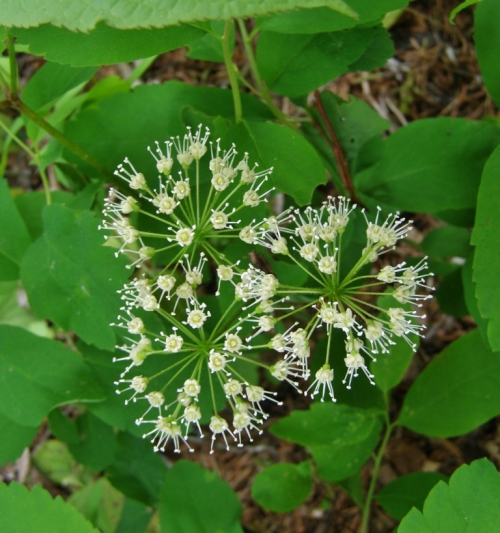
The somewhat elusive flowers of a local member of the Ginseng Family, Aralia nudicaulis, Wild Sarsaparilla. June 14, 2014. Goodsir Nature Park, Salmon Valley, B.C.

The leading reason for our visit to Goodsir – we were on a quest to find the rather rare Northern Rice-root, Fritillaria camschatcensis, which is reported to inhabit the forest around Summit Lake. (Goodsir Park is on Summit Lake Road.) We found 5 plants, with only one yielding bloom. Definitely a start, as we still hope to see these blooming in profusion. The quest, though technically successful, continues…

And even rarer, and completely unexpected, a flourishing patch of Wild Ginger, Asarum caudatum. Less than an inch wide, these wonderfully designed blooms lie hidden under the parent plant’s foliage, and often the forest floor duff, and are pollinated by crawling insects. June 14, 2014. Goodsir Nature Park, Salmon Valley, B.C.

And here is an example of Jim Good’s handmade signage. Always appropriately placed, these interesting notes added much to our walk in the park.
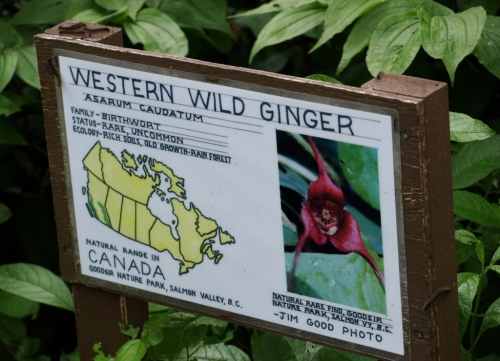
Jim’s signs show an ongoing evolution; here is a nicely laminated “just-the-facts” version, with habitat map.
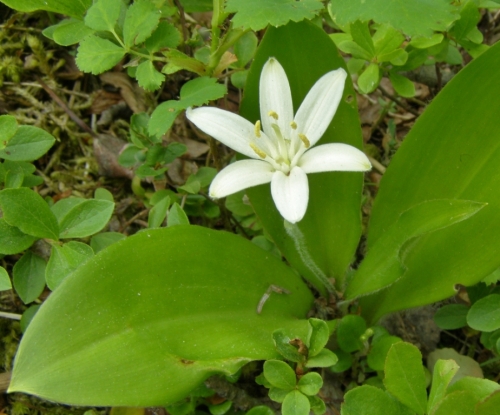
Queen’s Cup, Clintonia uniflora. The delicate white flower is followed by a single blue berry. We had just discovered a stand of these small woodlanders up near Tyee Lake in our own region, but only as yet in bud stage, so we were happy to observe the many in bloom at Goodsir as a sort of prelude to the local show.

Goodsir Nature Park is full of trees – over 200 species from across Canada – so a nod to the woody flora is in order as well. Here is a fresh young cone on a larch (tamarack) tree – Larix sp.
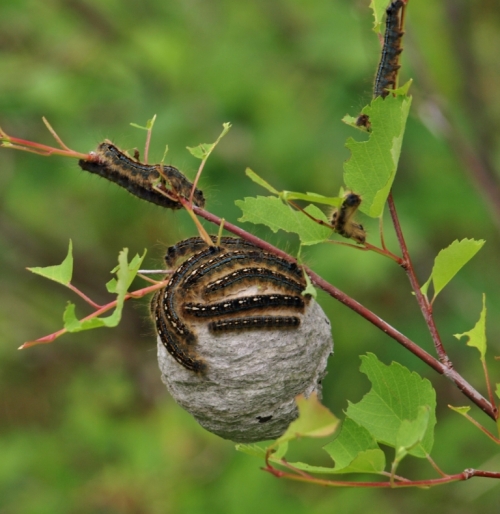
Ah, yes. These guys. Prince George and area appears to be having a continuation of last year’s tent caterpillar infestation. It looks like the massive population boom is in decline from last year, but there are still plenty around, munching their way steadily through the forest.
June 9, 2014
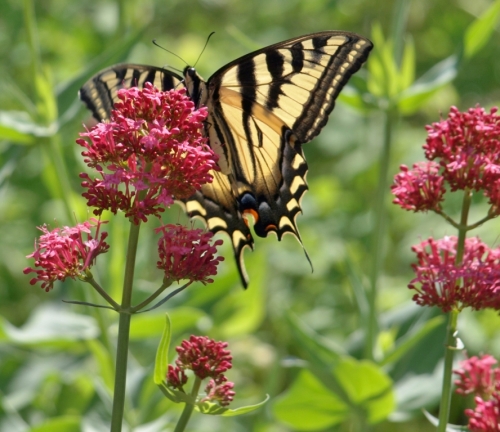
Swallowtail butterfly on Red Valerian, Centranthus ruber, Summerland Ornamental Gardens, June 7, 2014
Wow, that was a full week! Just back from a 5-day jaunt to Penticton (and area) – a combination of attending the stellar Provincial Festival of the Performing Arts and some marvelous botanizing and nursery visiting. I’ve just downloaded over a thousand photo files from our three cameras to the computer, which is an indication of how much we took in. Many of these will show up in future Plant Portraits, but here are a few samples.
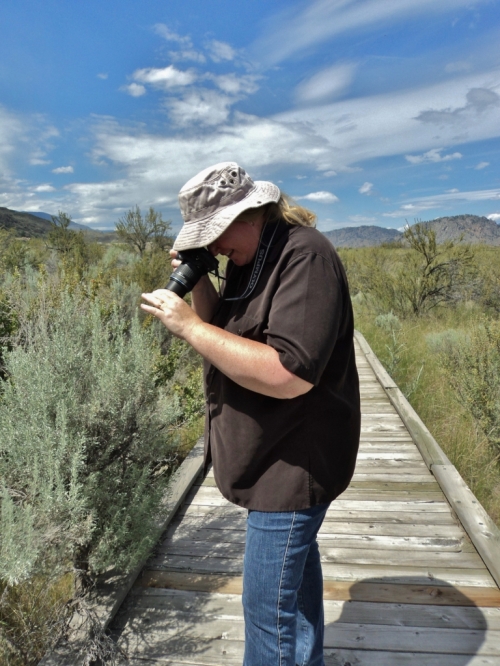
Osoyoos Desert Centre, June 6, 2014. A boardwalk trail through a corner of B.C.’s ecologically unique “pocket desert”.
June 2, 2014
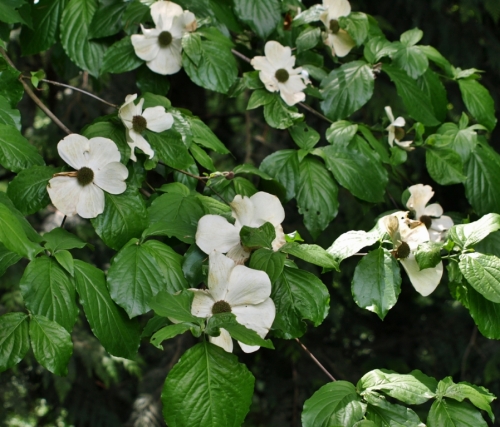
It’s always a thrill to see our provincial flower in bloom. Pacific Dogwood, Cornus nuttallii. They’re almost finished for the year, but we did see a few near the Alexandra Bridge in the Fraser Canyon. May 30, 2014.
We’ve just taken a fabulous road trip to points south, making a big loop through the Fraser Canyon and up through the Okanagan, visiting Hope, Keremeos, Osoyoos, Oliver and Kamloops nurseries, and stopping by the roadside to examine the wildflowers, take a few pictures, and marvel at the various wonders of our amazingly varied and beautiful home province.
More wildflower-y “Plant Portraits” coming up, as we go through the photos of this most recent trip.
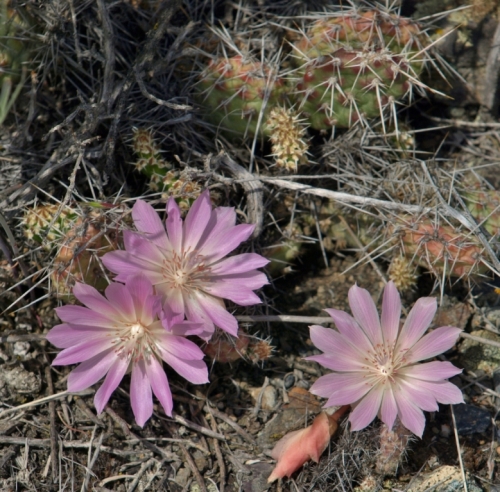
Bitterroot, Lewisia rediviva, near Ashcroft, B.C. May 30, 2014. Nestled among the abundant prickly pear cactus, Opuntia fragilis, these blooms might almost be mistaken for cactus flowers, but they aren’t. Their own fleshy leaf rosettes appear in fall, persist over winter, and wither before the flowers appear in spring. The plants are dormant throughout the summer.
May 24, 2014
Happy Real Victoria Day!
The 24th of May is the Queen’s birthday!
If you don’t give us a holiday we’ll all run away…
On that note, take a day off and go for a walk in the green-flushed Cariboo-Chilcotin hills, to catch the last of the Balsamroot in bloom. Things are looking grand out there – larkspur is in full cobalt-blue glory, and there are many other things as well – flora and fauna – to reward the keen-eyed hiker. (Might want to take a raincoat, as the clouds are still hanging about, even after yesterday’s torrential rain, thunder, lightning and hailstones.)
And when you get back, you can go and work in the garden. If it’s a bit too wet to plant seeds, it’s still perfect for dividing and transplanting those perennials. 🙂
May 18, 2014

Pasque Flower – Pulsatilla vulgaris – David Douglas Botanical Garden – UNBC, Prince George – May 18, 2014
Just back from a few days rambling about doing a bit of wildflower botanizing and checking out other nurseries from 150 Mile House to Prince George. This morning we managed to get in line for the Le Mans start 😉 at the rather good plant sale at the David Douglas Botanical Garden, held in the UNBC parking lot for a hectic 3 hours every May long weekend Sunday.
Scads of lovely things were there, and we restrained ourselves from going wild, keeping our purchases modest and being very good at not being seduced by the gallon pots full of Himalayan blue poppy (Meconopsis) and the like. (I love those things, but they don’t like my hot, sun-baked borders and iffy winter snow cover, as I’ve found to my repeated dismay.)
The rock garden at the university is showing a bit of early colour, and is well worth a visit if you find yourselves in PG for the day. And the vigorously thriving Marsh Marigolds (Caltha palustris) in the waterfall and pond were absolutely outstanding!

Marsh Marigold – Caltha palustris – David Douglas Botanical Garden – UNBC, Prince George – May 18, 2014
For perennials in the nurseries we visited, the best selection was at Richbar Nursery in Quesnel, and Art Knapp’s in Prince George. Other places were rather disappointing. There were definitely nice things here and there, but never a very wide selection and lots of the same-old same-old, which was disheartening, as we were in full search mode, looking hard for exciting things and often coming away empty-handed. But we’re still looking! You never know what may be hiding in a corner behind the petunias! 🙂

Cutleaf Daisy, aka Alpine Fleabane – Erigeron compositus – David Douglas Botanical Garden – UNBC, Prince George – May 18, 2014
May 10, 2014
The past month has slipped quickly by. We’ve been busy digging up the perennial beds and refurbishing old, grass-invaded plantings; we’re starting to think that one year off won’t be quite enough! 😉
It feels great to be back in the garden in the spring – an impossibility when the nursery is in full swing – and it reminds us of why we got involved with this whole plant business in the first place.
A quick road trip to Kelowna in late April gave us a chance to botanize just a bit, but we were just a bit too early for some of the small specialty nurseries we’d hoped to investigate. Planning on a return trip soon, down through Kamloops and then looping around to Salmon Arm, Vernon, Kelowna and Penticton, keeping our eyes open for roadside signs advertising backyard plant growers and community farmers’ markets and the like.
Yesterday it was raining in a determined sort of way, so we took some time out and drove about on a few of the many logging roads criss-crossing the plateau above McLeese Lake. We were rather dismayed to see there were still snow piles here and there, but the flush of fresh green covering the logging slash was an encouraging sign of the tenacity of nature in rushing in to fill any void.
Lupines, wild tiger lilies, fireweed, and asters are all showing their first growth; wild gooseberries and creeping blueberries are about to pop out their leaves; pussy willows in abundance in all stages of maturity, just-emerging to yellow-stamened, were everywhere in the water-filled roadside ditches. And, just as we had hoped, we found several patches of coltsfoot in full bloom, including this stand with eye-catching blush-pink flowers.
On our return we attempted to key out the species; rather a challenge as this genus shows extreme variation and hybridization between species, but we narrowed it down to Petasites frigidus, subspecies either palmatus or nivalis. We’re leaning to nivalis, and will be revisiting the site to investigate the foliage once it appears in a few more weeks.
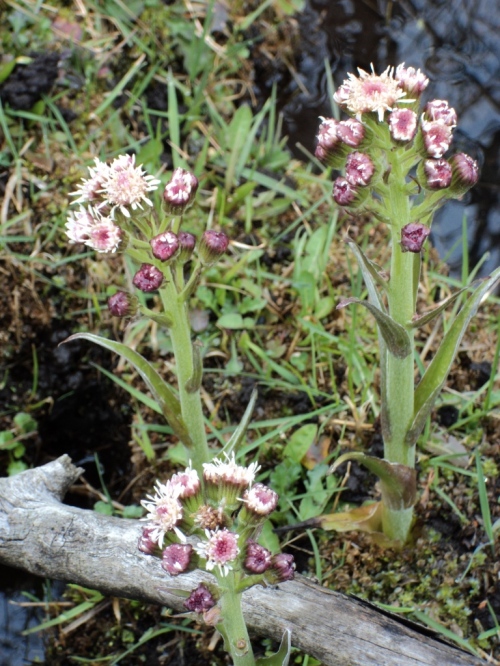
Sweet Coltsfoot – Petasites frigidus var. nivalis (we’re pretty sure) – near Tyee Lake, B.C., May 9, 2014. The Petasites send up their flower stalks early in the spring from creeping rootstalks, with emergence of the handsome foliage coming later.
April 12, 2014
We’re just back from a visit to Vancouver’s two superb botanical gardens, UBC and Van Dusen, and yes, we are even keener than ever to get into our own garden once the last of this pesky snow finally melts.
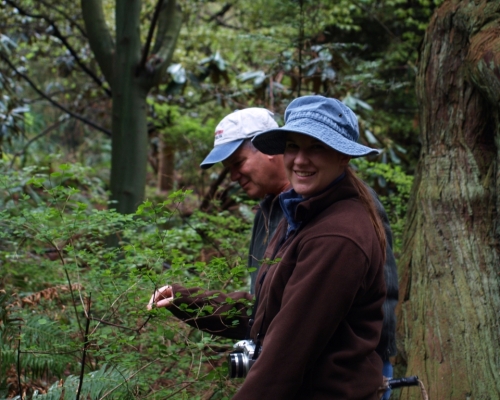
Ed Sr. and Jane at UBC, April 8, 2014, checking out something green-leaved and woody-stemmed. What could it be? I have no idea!
September 3, 2013
Still no tomato pictures, but now there is lots of colour out there – a really productive tomato year, here!
Hope yours are all doing as well. We still have loads of green fruit, but all varieties are ripening nicely. A few surprises, mostly positive.
- NEW BIG DWARF (Open Pollinated) took a while to get going, but is now absolutely loaded with great big tomatoes. These are classic beefsteaks, rather flattened and broadly lobed. Colour is a deep, pinky-red; texture is dense and silky smooth; flavour is sweet and rich. These plants topped out at less than two feet tall in the open garden, so are definitely worthy of container growing.
- Two big white open pollinated tomatoes, FANTOME DU LAOS and HALF MOON CHINA, are proving a big hit this summer. The FANTOMES are a bit more productive, and the fruit is sweet but with a nice rich flavour, a bit zippier than we expected from a white. HALF MOON is super-mild, very sweet and juicy. Fruit on both is HUGE, with abundant sets. FANTOME is a bit earlier, but HALF MOON is only a few days behind.
- NORTHERN LIGHTS (OP), a multicolor (red and yellow) striped beefsteak, has only produced a few ripe fruit so far. Yields overall are low on this one, but the fruit is very good-flavoured, very sweet and juicy. Really pretty to look at, especially when contrasting to the reds, oranges, whites and blacks growing alongside it.
- AURIGA (OP) is jumbo cherry sized, and super-high in healthy beta-carotenes, with a really zingy flavour. Bright orange fruit is lovely to look at, too. A similar variety is TANGELLA (OP), also a jumbo orange cherry, but a bit milder and sweeter.
- The biggest disappointment this summer is BAJAJA (Hybrid). It was touted as a super-productive sweet container cherry. Fruit is definitely abundant, and early ripening, and deep ruby red (very pretty!) and sweet, but the texture is downright tough; almost crunchy until the fruit is at the verging-on-overripe stage. Flavour is quite bland, though the sweetness is there. There are so many more much more appealing varieties that we are retiring this one after only this one trial. Let us know if you had better luck; we have lots of (expensive!) seed left over and would be happy to send it out to anyone who thinks they could use it. Not exactly a bad tomato; just not as good as we’d hoped for.
July 21, 2013
Well, this is where I should be posting a tomato picture, but as we’re gobbling them up as fast as they ripen, there’s not much inspiring to capture except a whole lot of green ones.
How are your tomatoes doing? Ours are very happy that it’s finally warm.
So far we’ve been eating the following cherry varieties:
- SUN GOLD CHERRY (Hybrid)- Yup, still sweet and delicious as ever! Very early ripening. We’re growing these in 3 gallon containers in the greenhouse, and pruned the plants quite heavily as they were starting to hit the roof. We’ve been eating these since late June.
- TUMBLER (Hybrid) – next early after Sungold. This hybrid is pretty darned good, and if you can resist plucking the bright red jumbo cherries from the plants until they start turning just a tiny bit soft, they will develop loads more flavour. Or give in to temptation and pick them at their earliest possible stage of ripeness – they’re still way better than anything from the grocery store! Container grown in 2013.
- MASKOTKA (Open Pollinated) – Really jumbo cherry toms, definitely 2-bite size. These guys are turning red in clusters right now; we ate the first ones about 3 weeks ago. Excellent flavour; nice & productive. Better tasting than Tumbler, but Tumbler is a bit earlier. Container grown in 2013.
- DITMARSHER (Open Pollinated) – Dusky pink, sweet & mild, and lots of them. These have been ripening since July 5. Very happy with these this year! Container grown in 2013.
- BLOODY BUTCHER (Open Pollinated)- A few have ripened in the unheated greenhouse, and the flavour is marvelous. The first are saladette-sized, with many green ones even larger; dark red, very full flavoured and very sweet.
- WHIPPERSNAPPER (Open Pollinated) – The plants are absolutely loaded, and I ate the first ripe one this morning, July 21. Another very tasty tomato. Small, egg-shaped fruit in abundant clusters. Container grown.
- ROSALITA (Open Pollinated) – This one has started ripening; ate the first a few days ago, and more this morning. Deep pink, pearly textured, grape-shaped & sized. Sweet! Grown in the ground in the unheated greenhouse.
- REMY ROUGE (Open Pollinated) – This one tastes like a red-coloured Sun Gold; definitely as good as our source claimed! Ate the first ripe ones yesterday; more coming. Grown in the ground in the unheated greenhouse.
Loads more coming; the plants are heavy with fruit.
Issues so far: a few varieties are showing signs of blossom end rot, especially the Sub-Arctic Maxi and Balcony Charm in containers, and Burpee’s Jubilee out in the open garden. We’re brewing up some rich “manure tea” and scratching in some bone meal around the affected plants, and hoping this will address the problem, as BER is generally thought to be caused by a calcium deficiency. Otherwise all is well, at least for now.
Let us know how it’s going in your part of the Cariboo; we’re always happy to hear, whether it’s good or maybe not so good.
July 7, 2013

An unnamed hand-pollinated delphinium from a random seed mix from Dowdeswell’s in New Zealand. Hill Farm, July 7, 2013.
June 23, 2013
Hill Farm Nursery is now CLOSED FOR THE 2013 SEASON.
A sincere and heartfelt THANK YOU to each and every one of you who has stopped by our Farmers’ Market display, chatted for a while, purchased plants, reported on your gardens and otherwise made our May and June weekends so delightful. Happy gardening, and have a great summer!
Please do keep in touch if you have any questions, requests or comments. We cheque our email frequently, and are more than happy to talk plants even though the nursery season has wound down for the year at Hill Farm. 🙂
We will continue to update the website throughout the year, as we still have a number of plant descriptions to add for the 2013 offerings. You can expect some more Plant Portrait posts as well, and hopefully some other plant-related posts as we garden-visit and botanize our way about the Cariboo-Chilcotin and places beyond in the months to come.
June 12, 2013
We’re getting close to the end of the plant sales season for 2013, and we are thrilled with the strong support you’ve all given us this year! We’re already planning for next year, so feel free to share your requests with us for 2014. (And make sure we write your ideas down!)
Seems like we’re doing okay with tomatoes; we had loads of very positive feedback. This year our tommies have found homes throughout the Cariboo-Chilcotin: east to Horsefly, west to Bella Coola, south to Clinton, and north to Vanderhoof. Some went to Vancouver Island, Kelowna, Ft. St. John and even Alberta. Wow! We’re so thrilled! And wherever they’ve ended up, here’s hoping they grow well and give you lots and lots of tasty fruit!
The perennial selection is getting a bit picked over, but there will be happy, healthy plants right up to the last sale day, so keep us in mind when you’re filling those gaps in the border.
June 2, 2013
“Where did May go?!” was the theme of conversation yesterday among the many gardeners I chatted with. With only a few weeks until the longest day, there is a certain undertone of panic to the planning and planting as our brief but glorious spring begins to turn into the season we must admit is – too soon! too soon! – summer.
There are now empty places on the greenhouse shelves and outside plant tables; transplanting for Market is coming to an end; whatever isn’t in its “for sale” pots this week won’t be taking the trip to town in 2013. Seed orders for next year are being formulated, and I’m going to take this rainy Sunday morning to neglect my many outside chores and draw up a preliminary list of what we’d like to grow next year, while customer comments are still in memory.
And this is the week my own garden will be planted. Aside from a few short rows of spinach-radish-onion-beets-baby carrots, the majority of it awaits our attention. Tomato plants are bursting from their pots, DEMANDING to be set into the ground; flats of annual flowers for our personal garden are positively jungle-like in their lush exuberance in the furthermost corner of the big greenhouse where they’ve been pushed to be out of the way of the ever-so-much-more-important plants for sale. This is their week, if all goes well!
Here’s hoping your gardens are all doing well. May the weeds are be quickly vanquished and the seeds quickly sprout and the transplanting go smoothly. Green thoughts and a happy last few weeks of spring to all!
May 26, 2013
Reports of frost on Thursday night in the higher elevation areas of the Cariboo-Chilcotin, but the May full moon has now passed so warmer nights should be coming soon. Keep an eye on those tomatoes! Any in greenhouses or sheltered areas should be fine, but those out in the open garden will appreciate some cover at night. If you’ve planted them in cages, treat them to a bit of extra care and drape them each evening with plastic, reemay, or something of the sort – old bedsheets work well – and they will reward you with increased growth.
We’ve chatted with a lot of novice gardeners this spring, and also those who’ve just moved to the Cariboo from warmer climes. So wonderful to see so much interest in gardening from such a wide array of people from all walks of life! Though our climate may have its challenges, the possibilities are exciting and the rewards are great, in every sense of the word. Happy planting, everyone!
May 23, 2013
I’ve run out of daylight while loading the truck on this rather gloomy damp evening, so here I am back at the computer ready to make up some more signs. No matter how well prepared I think I am, there’s always something…
Tonight it appears that I need almost 20 new signs for things we haven’t taken in yet this year. Having a hard time believing that, but there it is in black and white! Well, dull-pencil-grey and soggy-paper-white, to be completely accurate. 😉
See you tomorrow!
~Barb
May 22, 2013
We’re checking the weather forecast morning and night these days and wondering what the coming weekend will be like at the Quesnel and Williams Lake Farmers’ Markets – it promises to be rather damp. Great weather for transplanting perennials; not so great for the heat lovers like tomatoes. Speaking of tomatoes, they’re moving fast as people email in their orders, but there will be a good selection at both markets, of “traditional” round red tomatoes, plus an assortment of cherry toms and some unique heritage and heirloom varieties. Maybe a few hot pepper plants will find their way onto the truck, too!
Plus a few sunflowers (more coming in following weeks), some ‘Spacemaster’ bush cukes, the last few Atlantic Giant Pumpkins, and some interesting annuals, including Moonflower (Ipomoea) and Cathedral Bells (Cobea) climbing vines. Let’s see, what else… Lemongrass, maybe a bit of basil, perhaps some castor beans – ‘New Zealand Purple’ and ‘Carmencita Red’ are looking good to go – both are a bit shorter (at a mere 6 ft. or so) than the massive 10 foot+ varieties which are still sizing up in their pots.
And hollyhocks and Canterbury bells and delphiniums and lupines and all sorts of other wonderful perennials and biennials! Come and take a look.
May 19, 2013
May Long Weekend, and the gardeners were out in full force, especially at Quesnel Farmers’ Market. We sold out of tomatoes by mid-morning, but luckily there are lots more ready to head to town next week. It’s still pretty cold at night, so unless you’ve got a greenhouse you’ll want to let the weather warm up just a bit more before planting them out anyway. Frost warning for areas of the Cariboo-Chilcotin tonight, and a full moon coming on the 25th. After that we should be good to go with planting the warm season stuff outside without extra protection.
Quesnel gardeners – we did a bit of a nursery crawl today and discovered a grand source for some good plants. Arlene’s Perennials at 537 Willow Street – just off Maple Drive – watch for the small hand-printed signs – has some interesting things. It’s an older garden, and Arlene is busy making divisions of her treasures. I picked up Dodecatheon (Shooting Star), Camassia, Primulas, Iris, pink lilac seedlings, and a whole bunch of other goodies. Check her out! An interesting lady; some very nice things; great prices.
Richbar has lots of lovely stuff; we scored a hardy water lily for our big tank, and Northern Flowers was a mass of annual blooms. Stop by and check out the greenhouse reno there. Didn’t make it to Ten Mile, but hope to stop by there and check things out soon – while they still have a good selection.
Have a great week, everyone. 🙂
May 11, 2013
A great day in Quesnel! Ed and Jane reported a grand turnout, with lots of familiar faces and some new ones, too. This coming week will be all about still more transplanting; the last big push to get our remaining green babies into their final pots and ready to head out into the world. I’ll be dreaming of tomatoes, tomatoes, tomatoes, and writing labels in my dreams…
Time is sure racing by – spring days should be double-length so give us at least some sort of a chance at getting it all done!
Happy gardening!
May 10, 2013
Today is the first Williams Lake Farmers’ Market in Boitanio Park. The sun is shining and the birds are singing – all the spring things are doing their stuff – what a glorious day! We hope to see you there.
And don’t forget the Oliver Street Market. This year that fabulous group of farmers and creative people will be moving from the Cenotaph lawn and hillside (across from Safeway) back down to Courthouse Square – the old home of our first Farmers’ Market – hurray! – and have changed their time from Saturday morning to Friday evening, 4PM to 9PM. We’ll be trying to make that one, too. Oliver Street Market gets underway May 31st, with loads of delicious fresh veggies from our local growers, and all sorts of other good stuff. I do believe there will also be live music…
May 5, 2013
Awesome Farmers’ Market in the sunshine in Quesnel yesterday! Thank you all who stopped by, whether picking out some new plants or just saying “Hi”. I had a little silent chuckle when one of the other vendors mentioned proudly that he had SIX varieties of tomatoes. “Yeah,” I said, “I have a few different kinds, too.”
And on that note, I’d better get out there to water and transplant some more of those green babies. 🙂
May 3, 2013
Ready or not, first Quesnel market is here. (Tomorrow, that is.) And with a heat wave predicted for the weekend and the coming week, we’re not quite sure which way to turn. Well, what will be will be! (Hold that thought.)
Today is going to be crazy-busy, as things nursery-wise are still being sorted out. Lots of tags to write, many signs to make, and of course the website to update. It’ll work out – it always does – but at this point with only 24 hours to go before we meet and greet our “public”, it all feels a bit surreal…
May 1, 2013
This is it! Greenhouse stuff (hardy perennials only at this point) is going outside, minus temperatures at night or not. The first flats I left out last night were okay after minus 4C (with two layers of Reemay); today’s sun and wind was a bit rough on the soft growth and a few leaves are damaged, but all in all things are handling it well. They should be hardened off enough to be ready for the first Farmers’ Market this coming weekend on Saturday, May 4, in Quesnel at Helen Dixon.
Tomatoes in big pots will still be a week or two, but I’ll have some small starts of some really neat varieties if you’re desperate to get going with your toms and have a warm, well lighted home for them. Maybe some cucumber plants will be coming to Market too; depends on the weather. There are some nice big ones ready to go – Green Dragon and Sweet Slice – delicious!
Lots of perennials are ready. Looking over the selection I’m a bit bemused at the number of hollyhocks, lupines and delphiniums I’ve produced – I went a bit wild when seed shopping this winter, it seems. Some nice ones; take a look at the listing. Still making garden divisions; everything was so late this year. More jobs than time, but of course this is “perennial” around here, pun fully intended. 🙂
Well, it’s late, the greenhouse fires are stoked for the night, and my bed is calling, so that’s about it for now. See (some of) you Saturday!
April 29, 2013
I’ve just been out in the greenhouse looking at and listing plants to see what I’ll have ready for the first farmers’ market of the season, May 4, at the Helen Dixon Centre in Quesnel. Williams Lake Market starts Friday, May 10, at Boitanio Park. We’re going to try to make the Saturday Oliver Street Market as well this year, but we’re still figuring out the details on that, as we also need to be in Quesnel that day. Should be a busy spring!!
We’re sorry to say that we’re still not open for any sales at all at the farm; the infrastructure isn’t at all in place for a proper display area, and our busy family schedule means that we can’t reliably be here on any sort of a regular basis; nursery work happens early and late and around everything else we’ve got going on. But one day we’d love to host you all; it’s definitely in the long term plans!
It’s been so cold this spring that I haven’t yet put the seed-grown perennials outside, and thus have completely run out of greenhouse space. I’ll remedy that this week, but the larger implication is that the tomatoes won’t be ready for sale till mid May, as they are still in cell packs. But they’re happy and growing fast, and there are lots of unique varieties again this year.
This is far from a complete list of our offerings in 2013, as it will be expanded week by week as the seedling plants size up and the divisions establish in their containers. I’m working on adding pictures as well. Most will enlarge in a new window when you double-click.
Happy Gardening, and we’ll see you at the Market!
April 23, 2013
Surfacing briefly to add some tomato info. As of this morning they’re all transplanted into their “stage 2” containers; a few more weeks to go until they’re ready for sale. Lots of interesting new-to-us and old favourite varieties!
*****
March 30, 2013
Spring feels late this year, and so do we, but just a little bit. The tomatoes will be ready a week or two later this year, about mid-May, as we were waiting for a seed order which took its time arriving, but there are lots of perennials coming along, so the Market tables will definitely be worth a visit.
In the meantime, the crocuses are blooming, and the Sagebrush Buttercups are out in full force on the hillsides of the farm – for though a tiny bit tardy, Spring is definitely Here!
February 26, 2013
CHANGES
In the middle of making some experimental changes to the site; watch for “Plant Portraits”. The long-term goal is a picture and expanded description for everything we’ve ever offered, but that’s going to take years versus weeks. In the meantime, one has to start somewhere, so there will be posts appearing on that new page from time to time.
February 14, 2013
HAPPY VALENTINE’S DAY
There are many little green babies sprouting in the seed flats, while the garden still sleeps under the snow. But according to the chickadees, spring is in the air!
*****
January 1, 2013
HAPPY NEW YEAR!
The table is covered with seed packets, the lists for a few more seed orders are being struggled over – what to choose, among so many interesting things?! Trying hard to be sensible, to not go overboard, and to also keep enough unusual things on the list to keep it interesting for all of us.
We’re still aiming for a fully searchable website in the future, but for now the blog seems to be a good compromise. The eventual goal is to include every plant description from our two decades of doing this. Sadly not many photos will be included here on the blog, because of space (and time) considerations, but we hope to remedy that when the website becomes a reality.
I have my list of requests from last year handy – hopefully everything that various people asked about will sprout and grow. There’s still time for special requests (depending on what you’re looking for) – just drop a note in the comments.
Thanks to EVERYONE
for your strong support in 2012!
We hope you have enjoyed your plants,
and that the abundant snow we’re seeing
this winter is keeping your perennials
nicely dormant, so they can
flourish come spring!
Barb, Edwin, Eddy & Jane
*****
- Again this year, instead of printing up paper catalogues, we will be entering plant descriptions and updating the 2013 PLANT GUIDE page as the season progresses. We hope to have a few print catalogues available for those without internet access, but we are hoping an online format will ultimately be more user-friendly, as well as allowing us to eventually list all of the plants from previous years.
- There will be a separate page for the 2013 TOMATOES.
- We hope to keep these pages updated as to availability – as usual, many varieties are in very short supply. First come ~ First served! (But there will still be something interesting ~ lots of great plants this year, from our little farm to your garden!)
- Looking for descriptions of what you bought from us in 2012? Please click on the menu links above to find the listings for PLANT GUIDE 2012 and TOMATOES 2012.
- A huge THANK YOU to everyone who has stopped by the Quesnel & Williams Lake Farmers’ Markets in 2012. We treasure your many kind comments and sincerely hope you enjoy your plants.
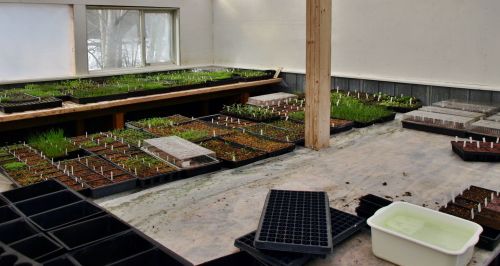



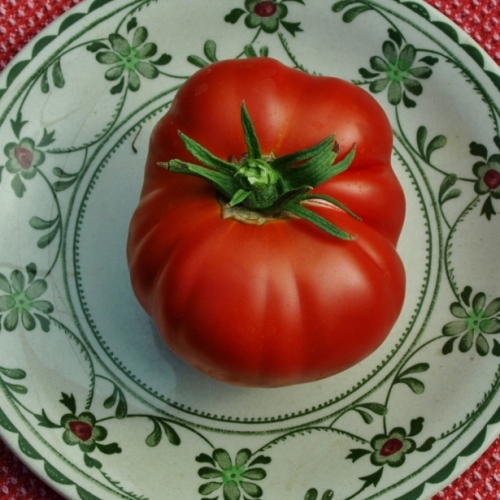
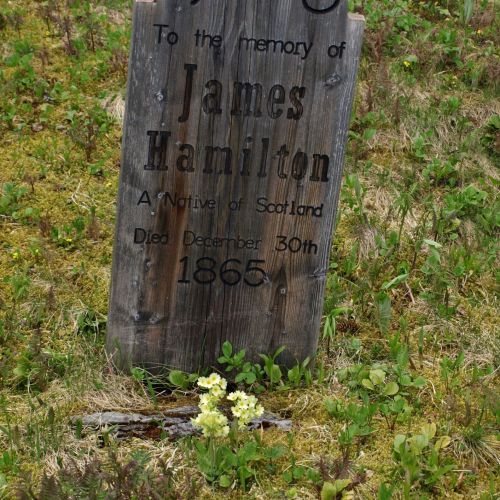


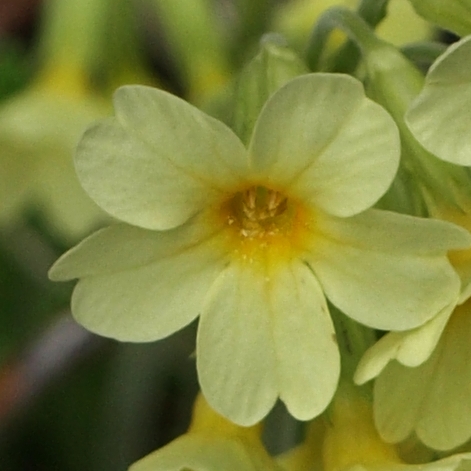









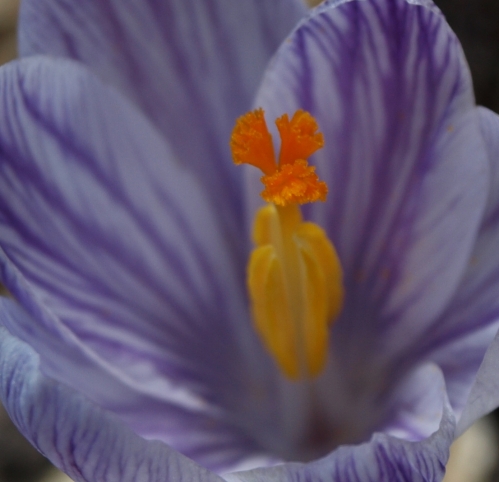

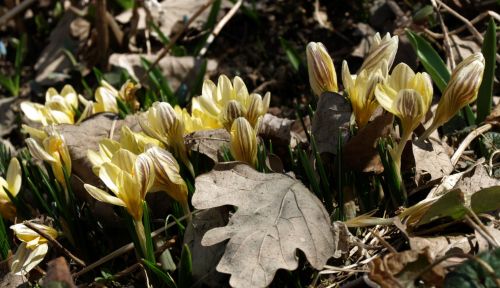

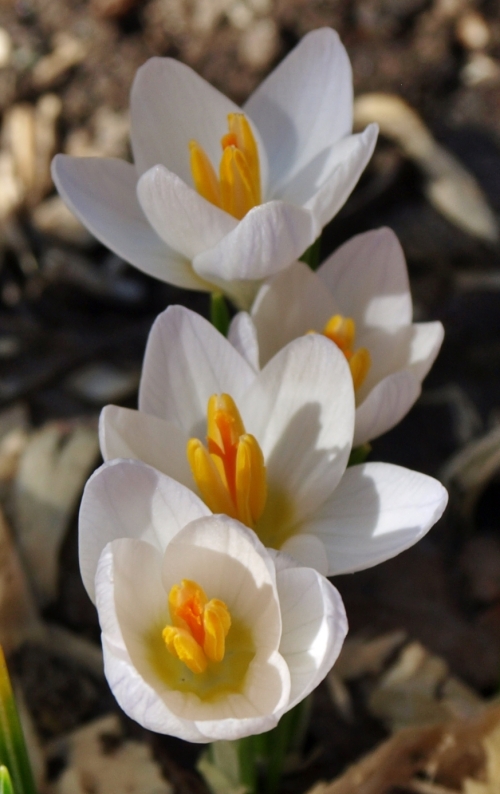
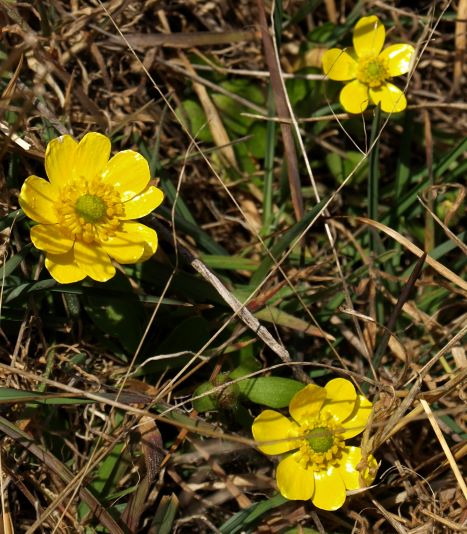
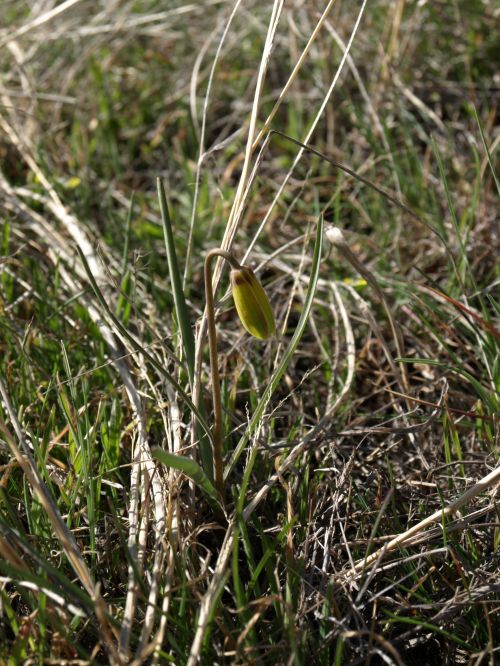
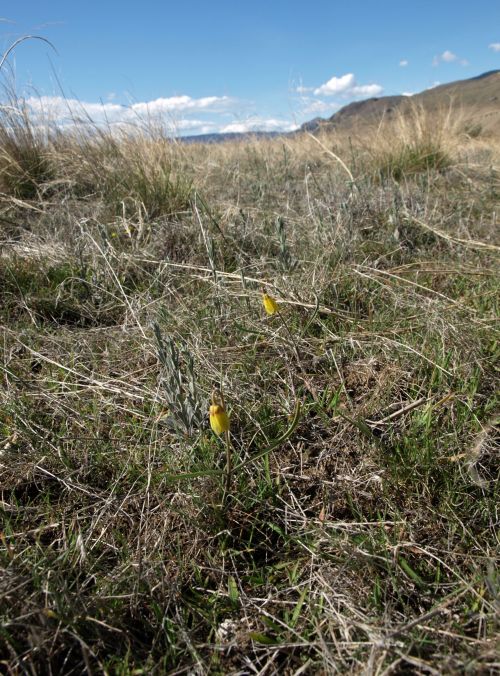








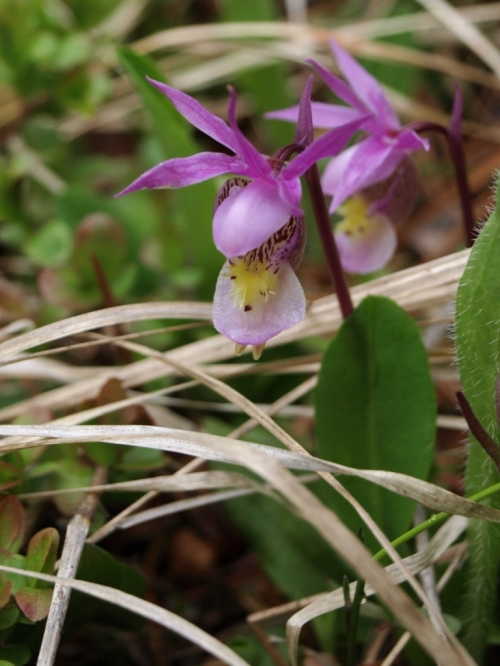


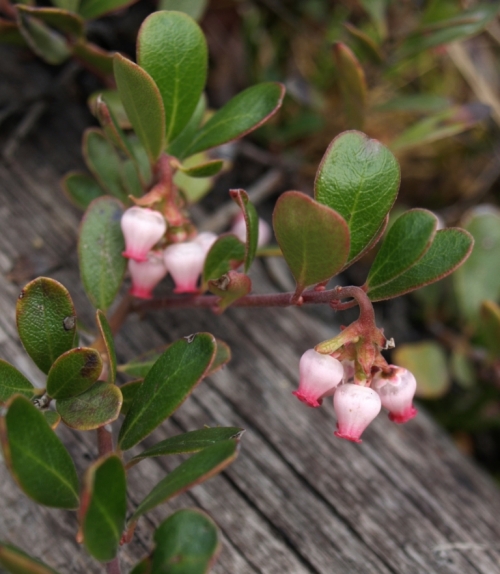


















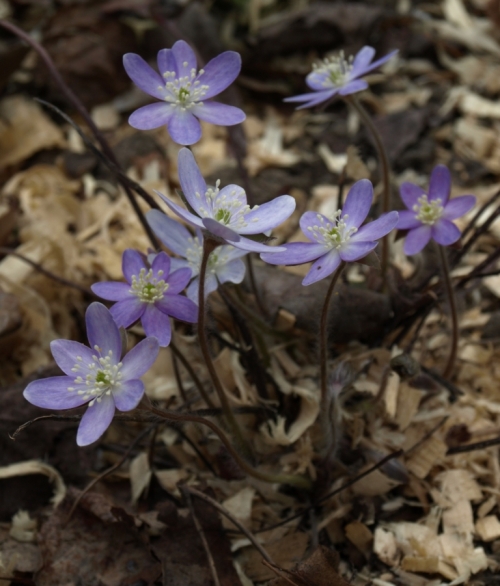





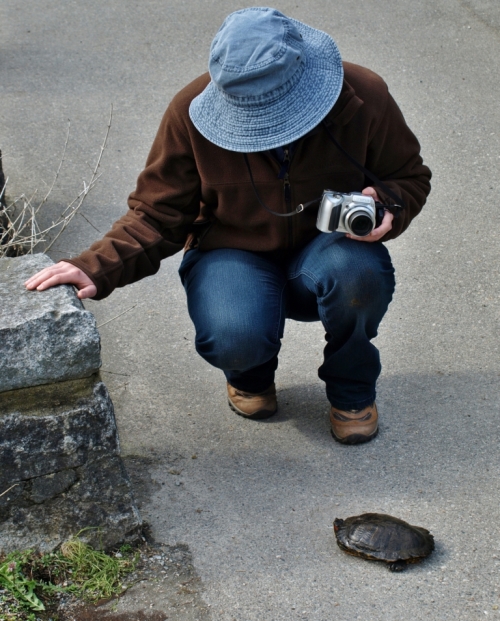

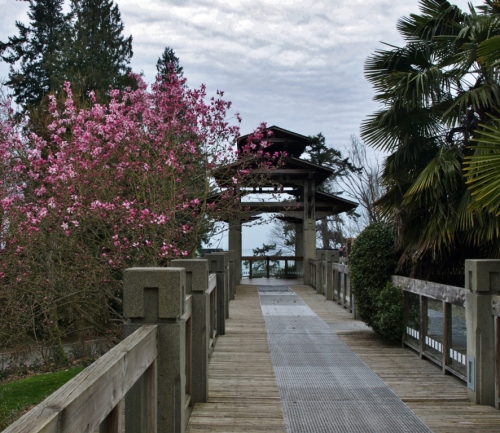

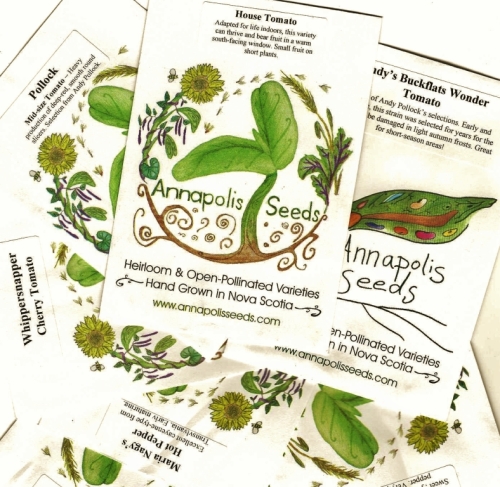




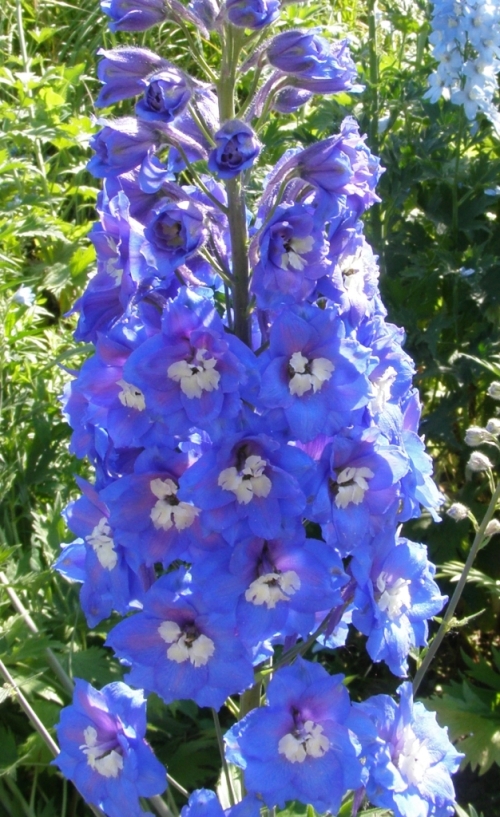
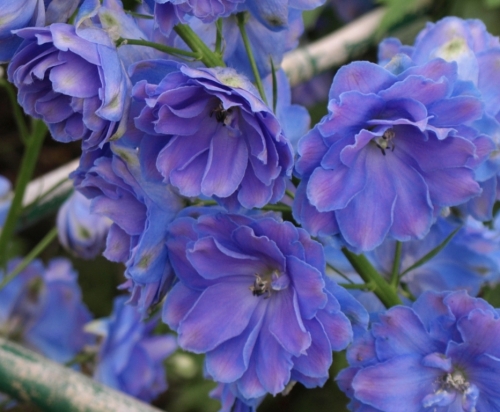
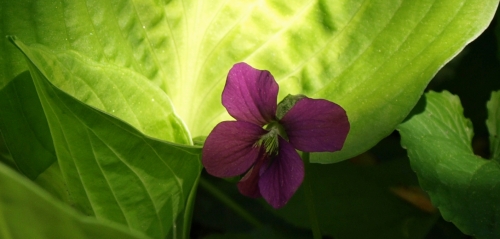
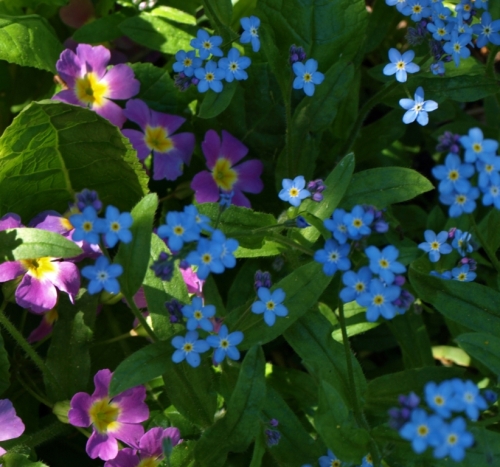


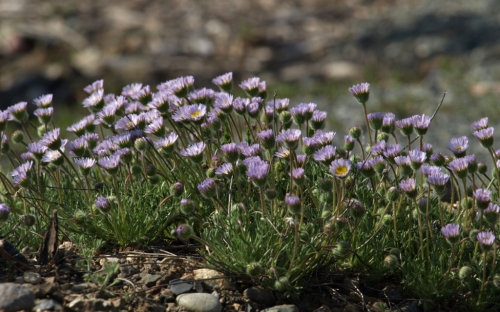
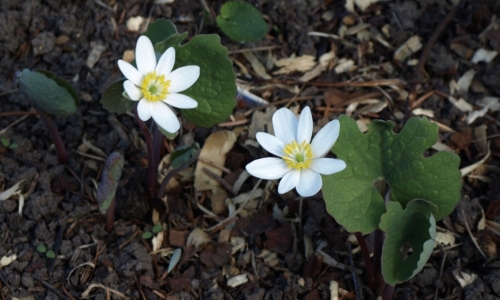
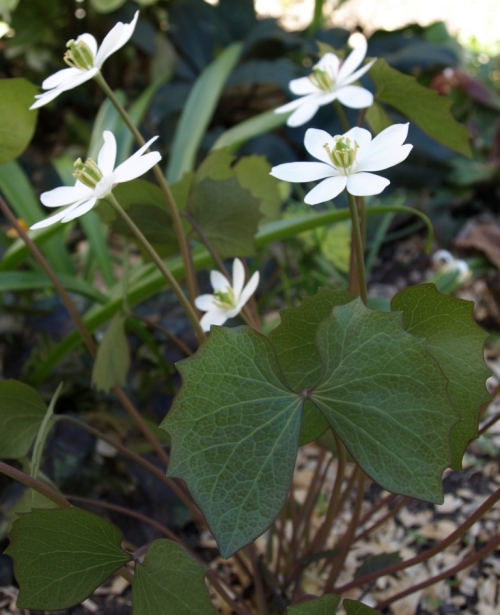

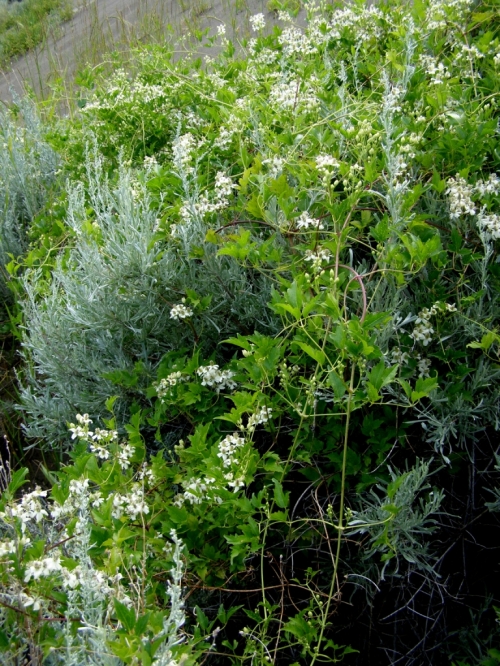
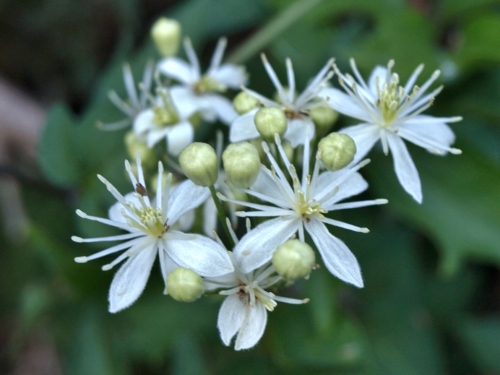

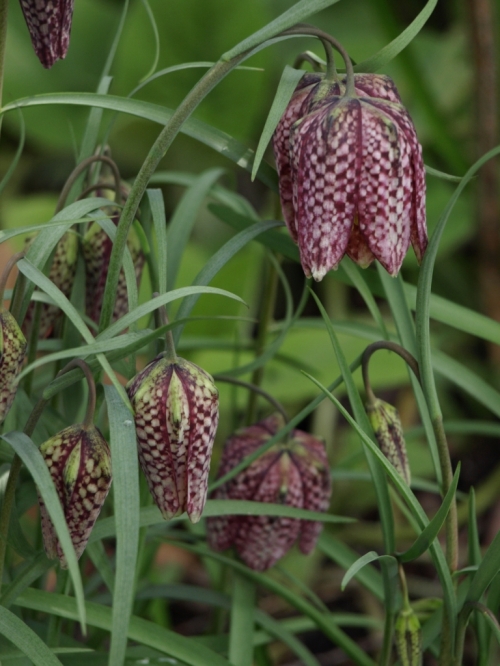
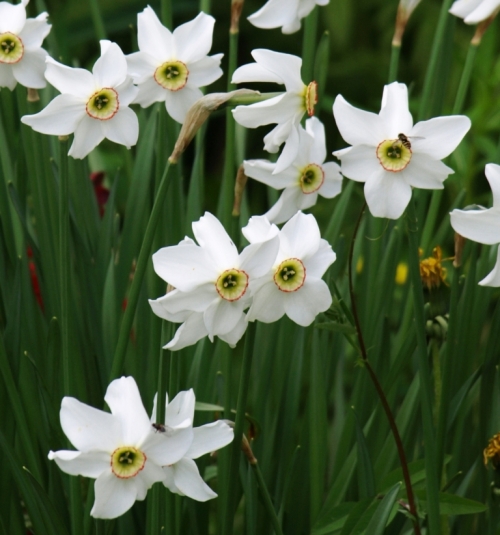
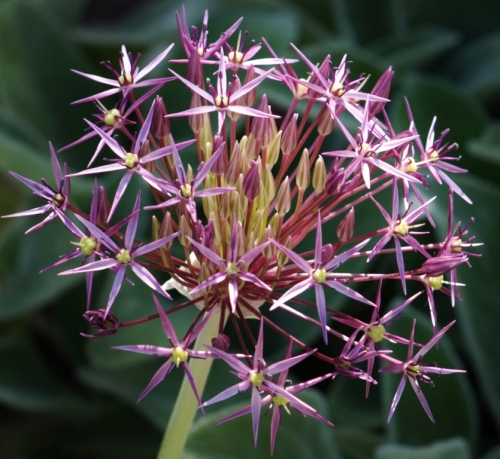
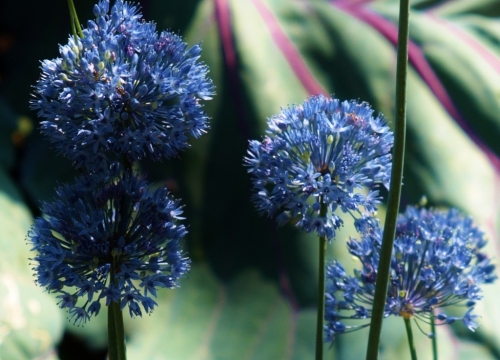


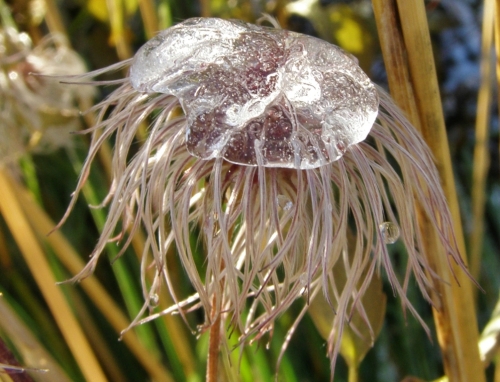
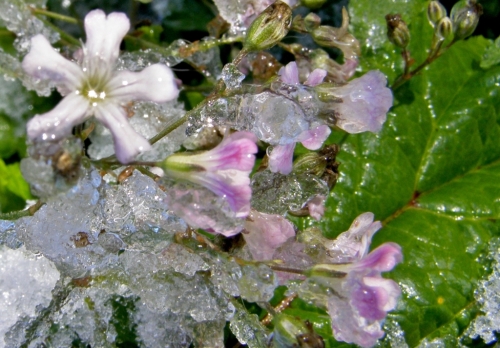



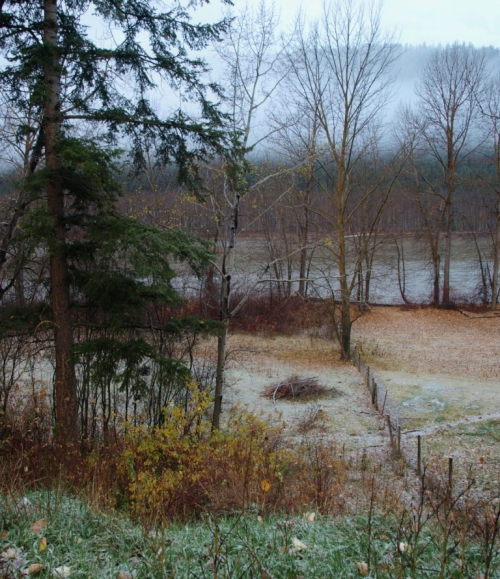





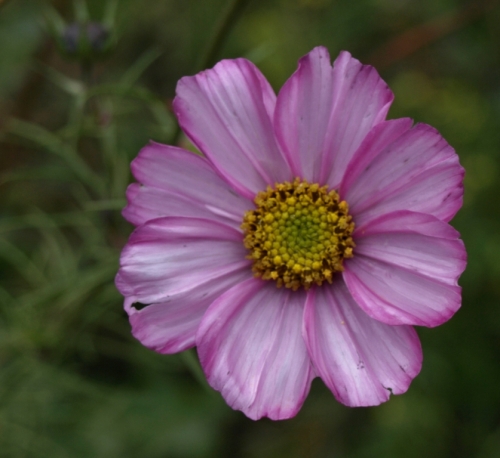

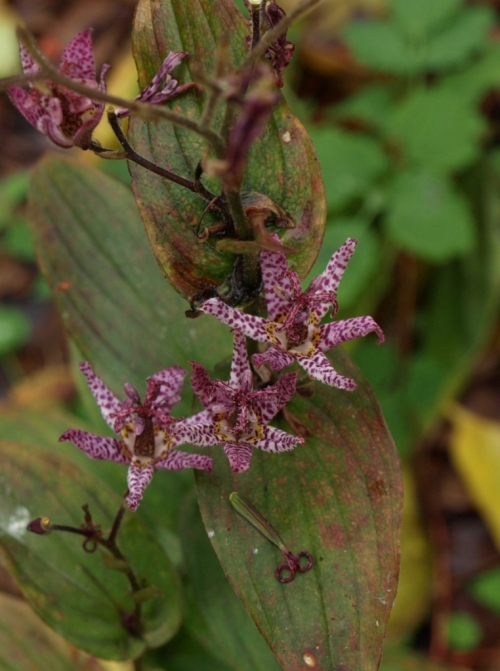
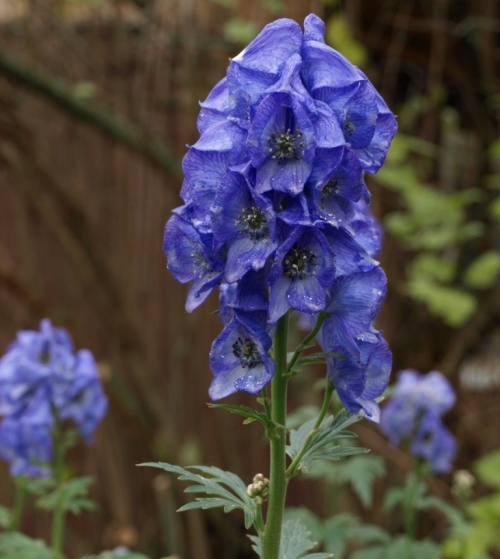

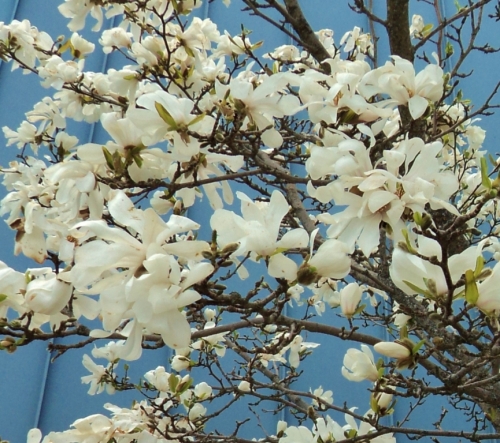
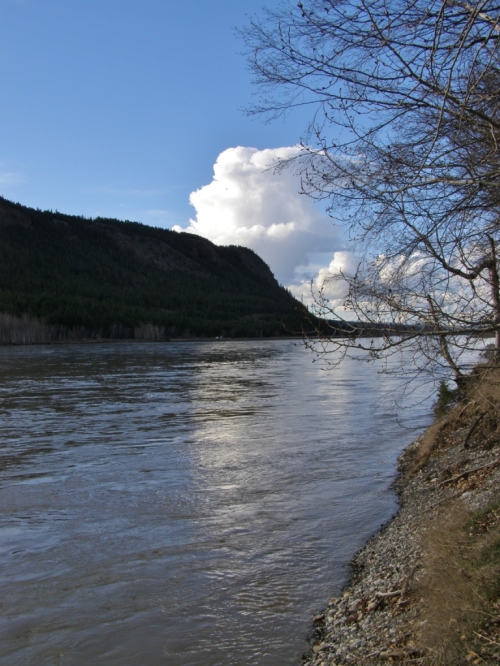
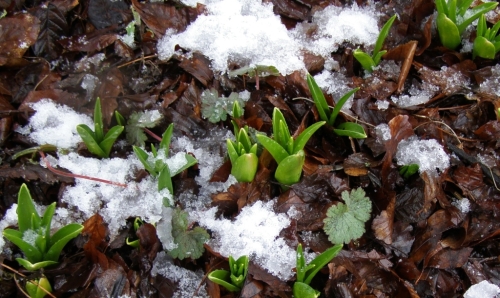


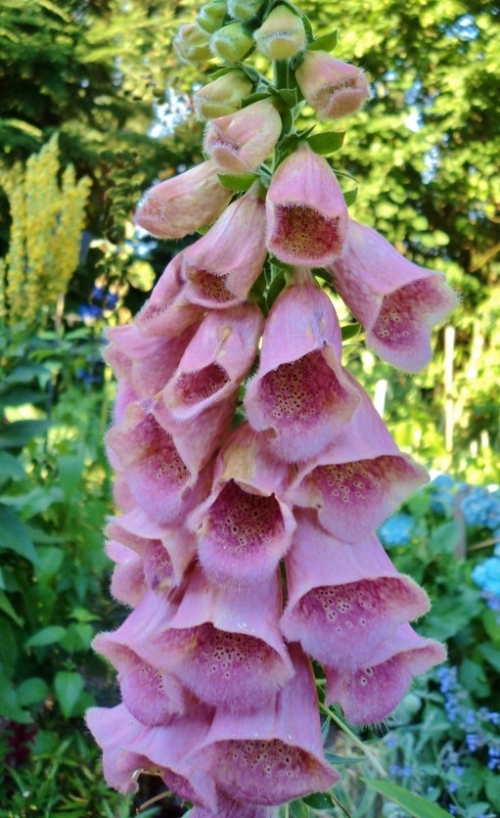


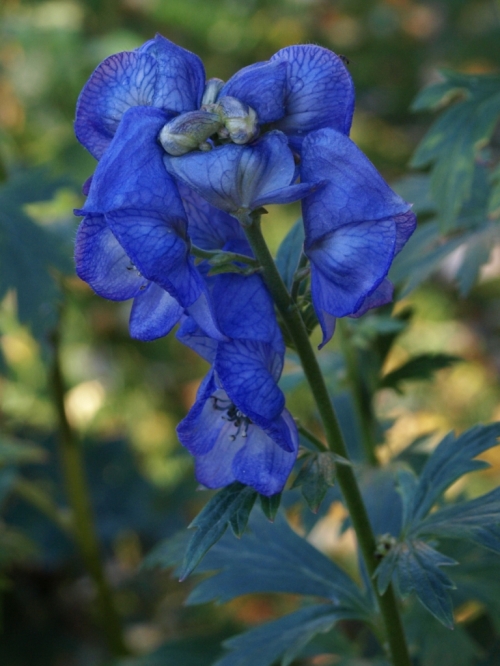
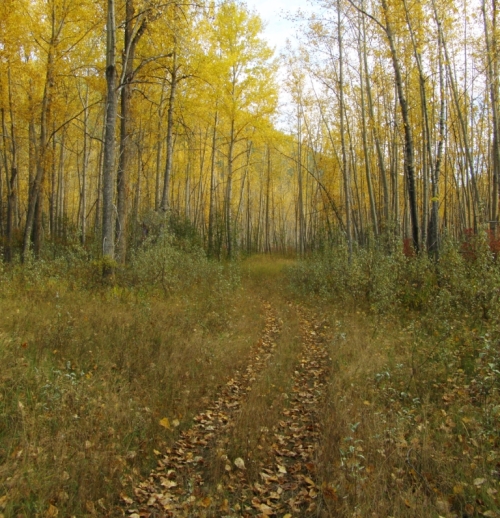
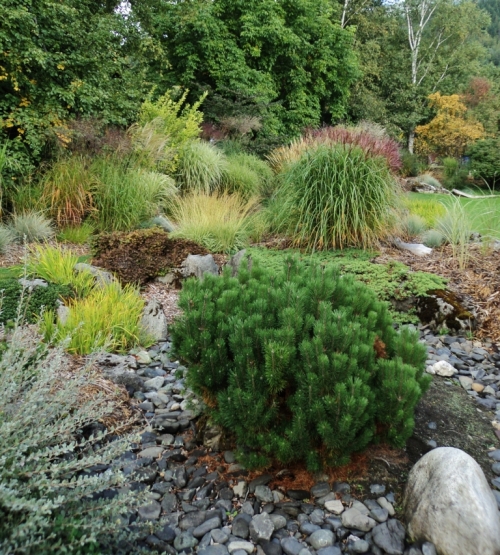
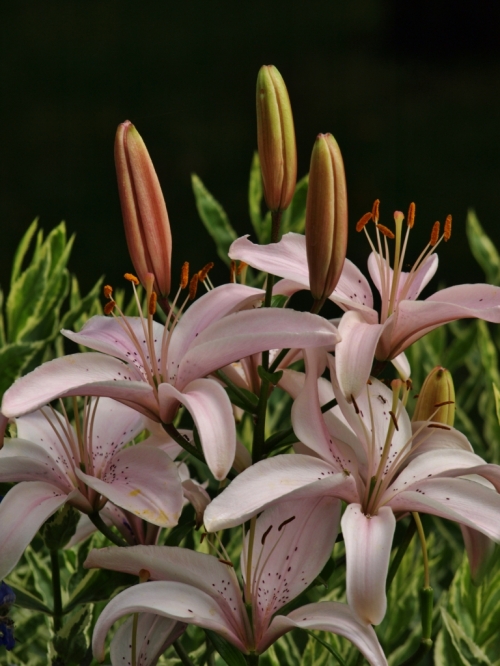

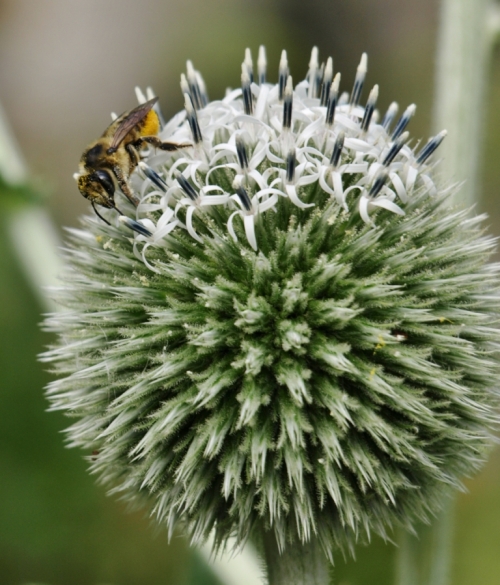

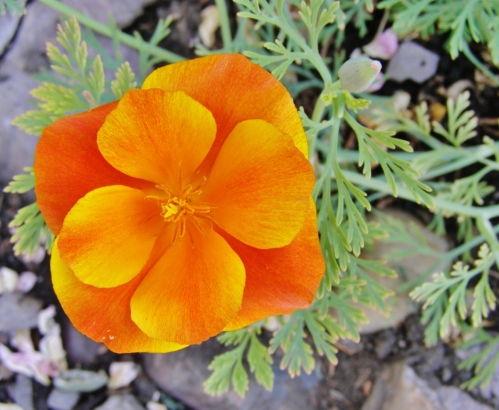
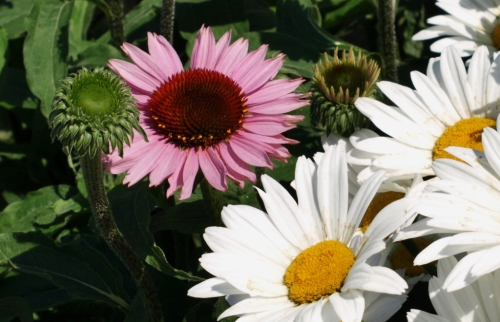
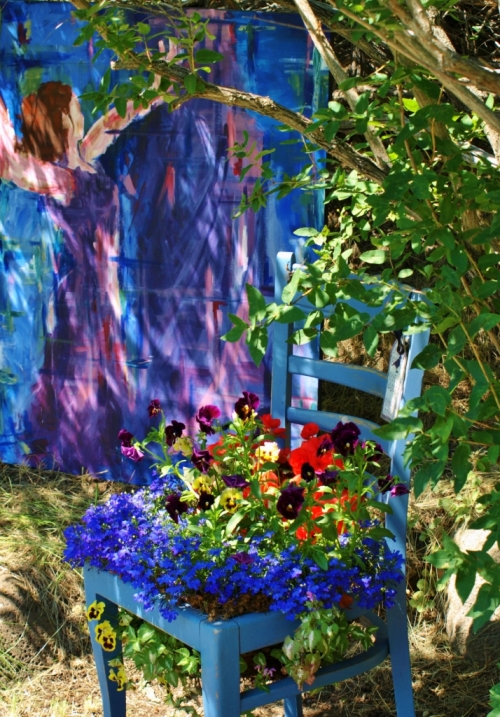

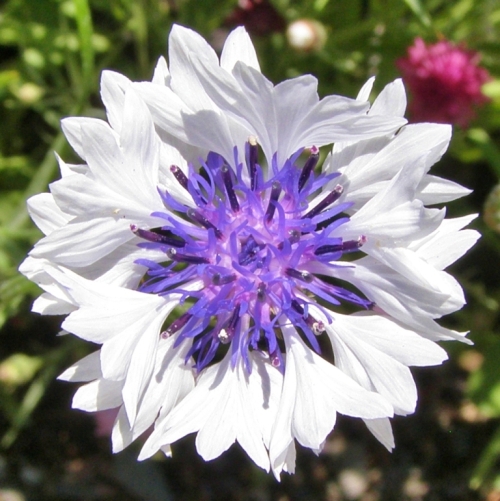
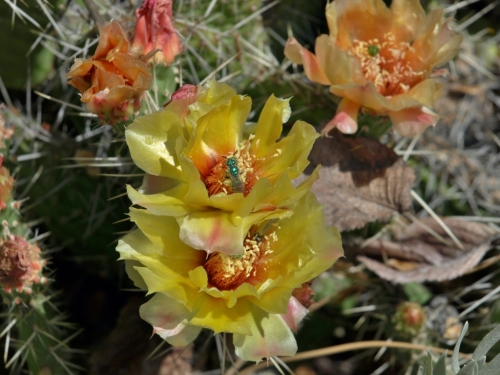
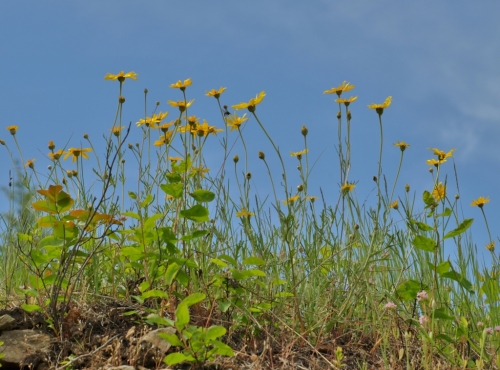
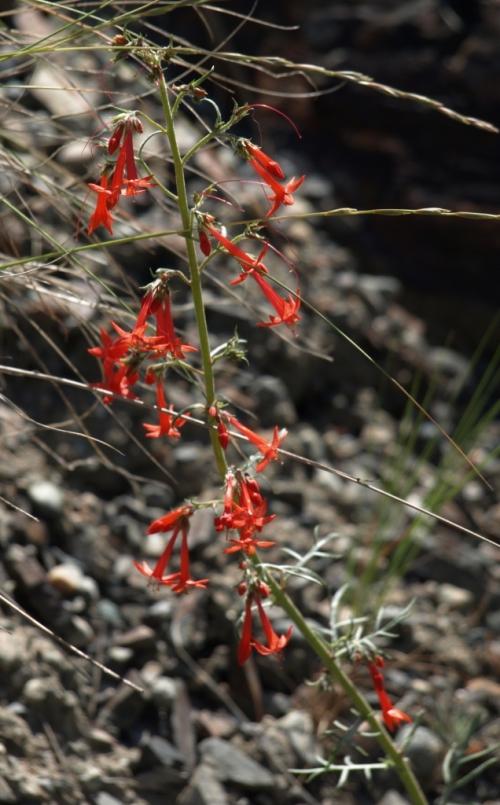


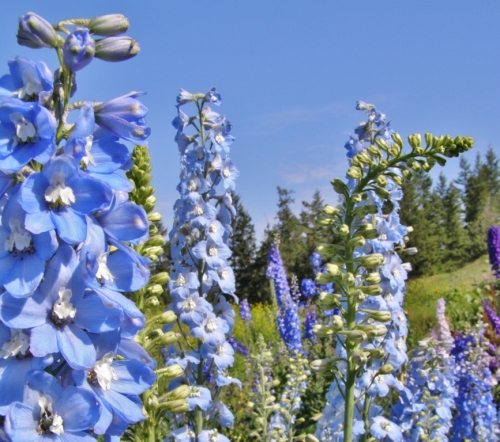





Leave a comment